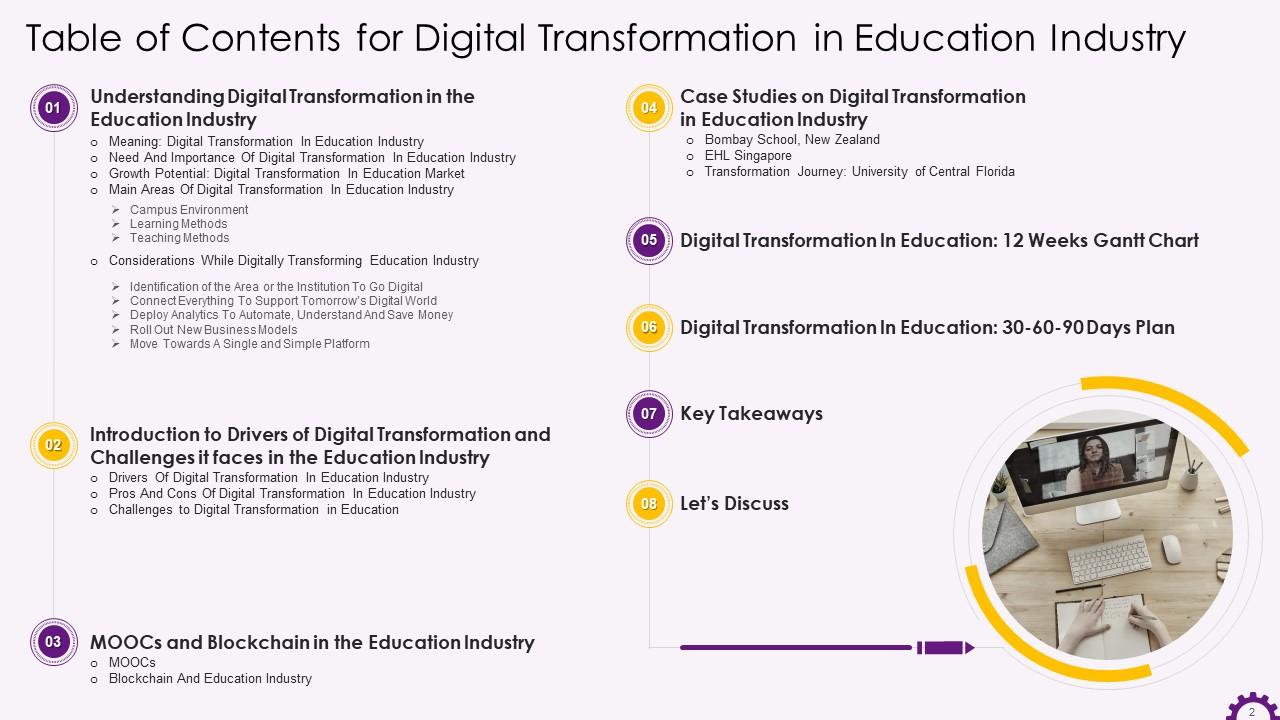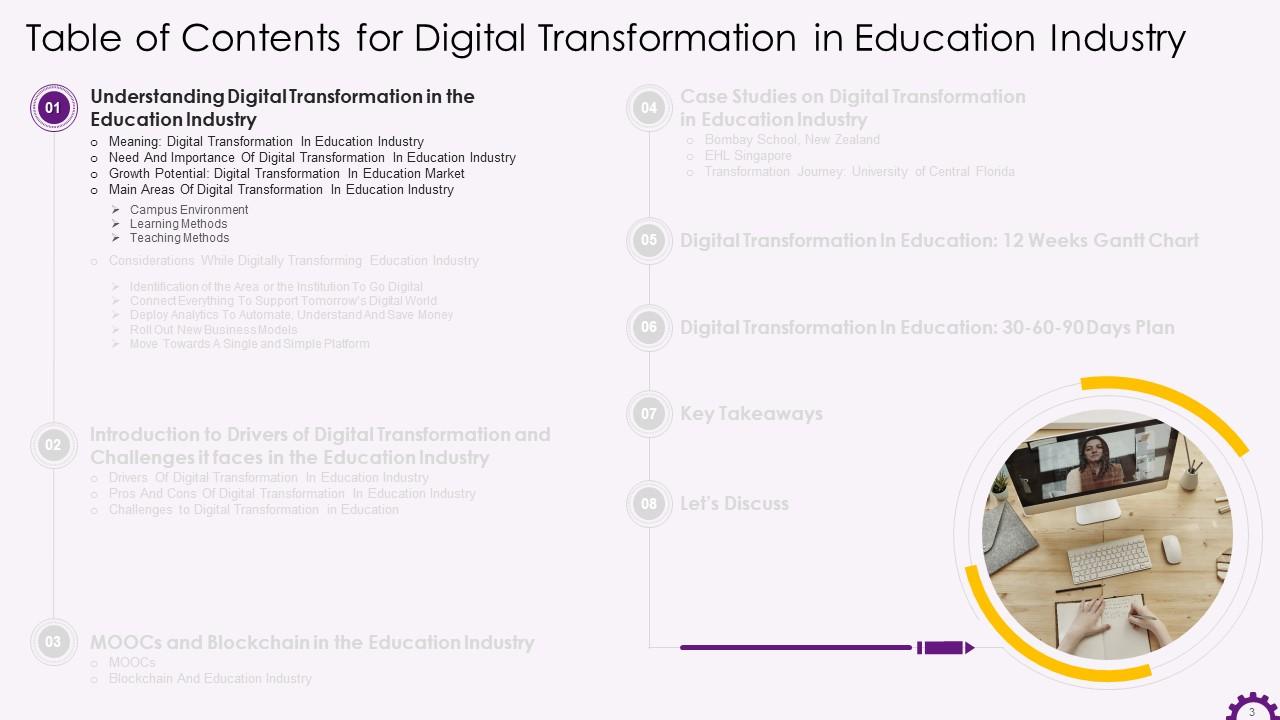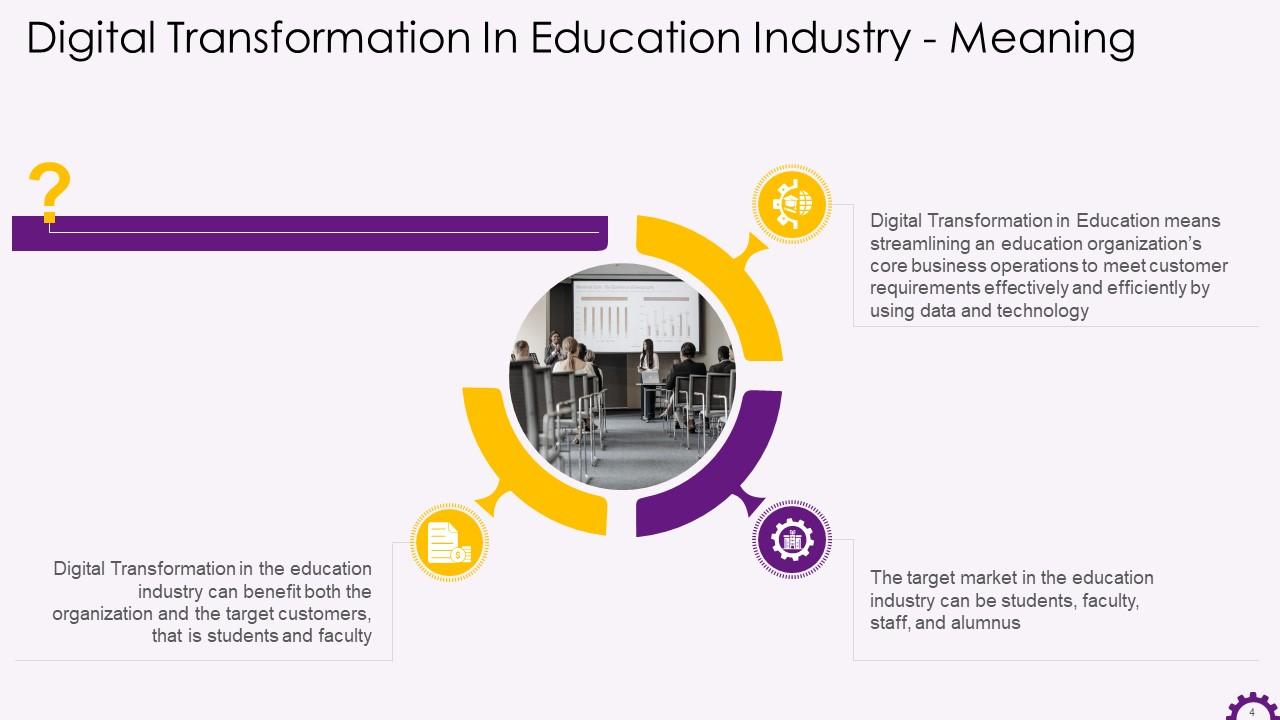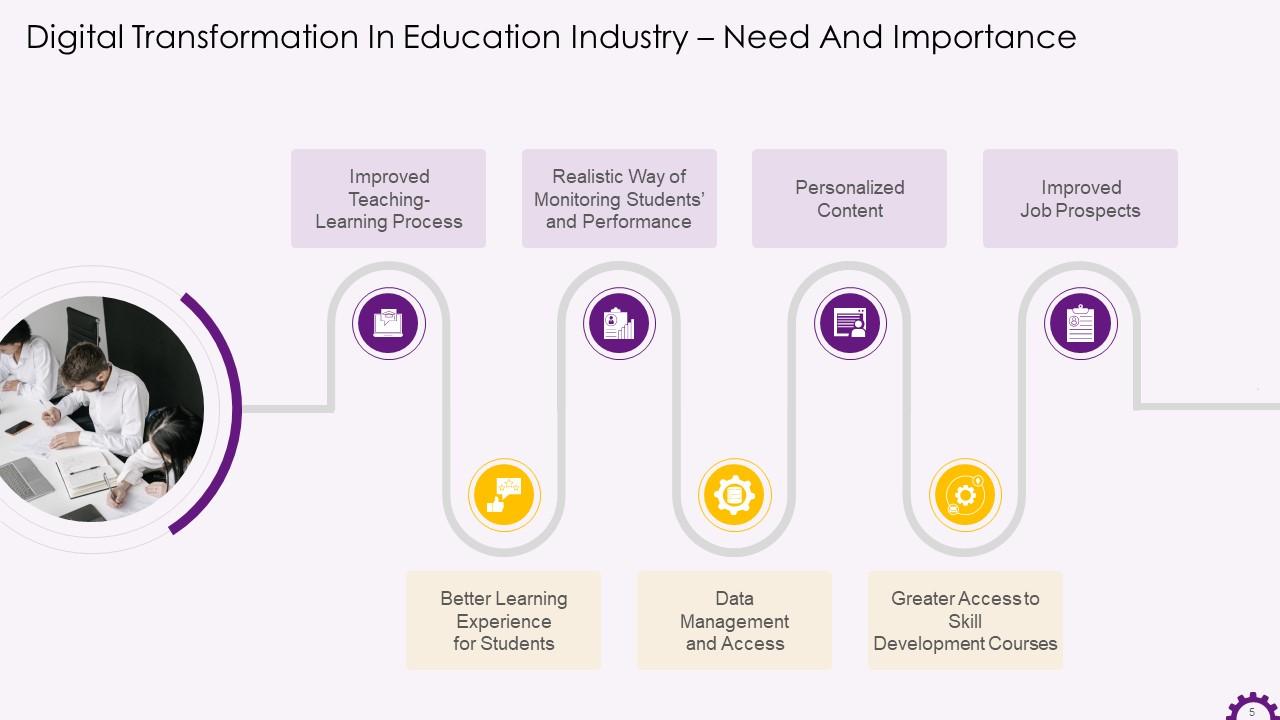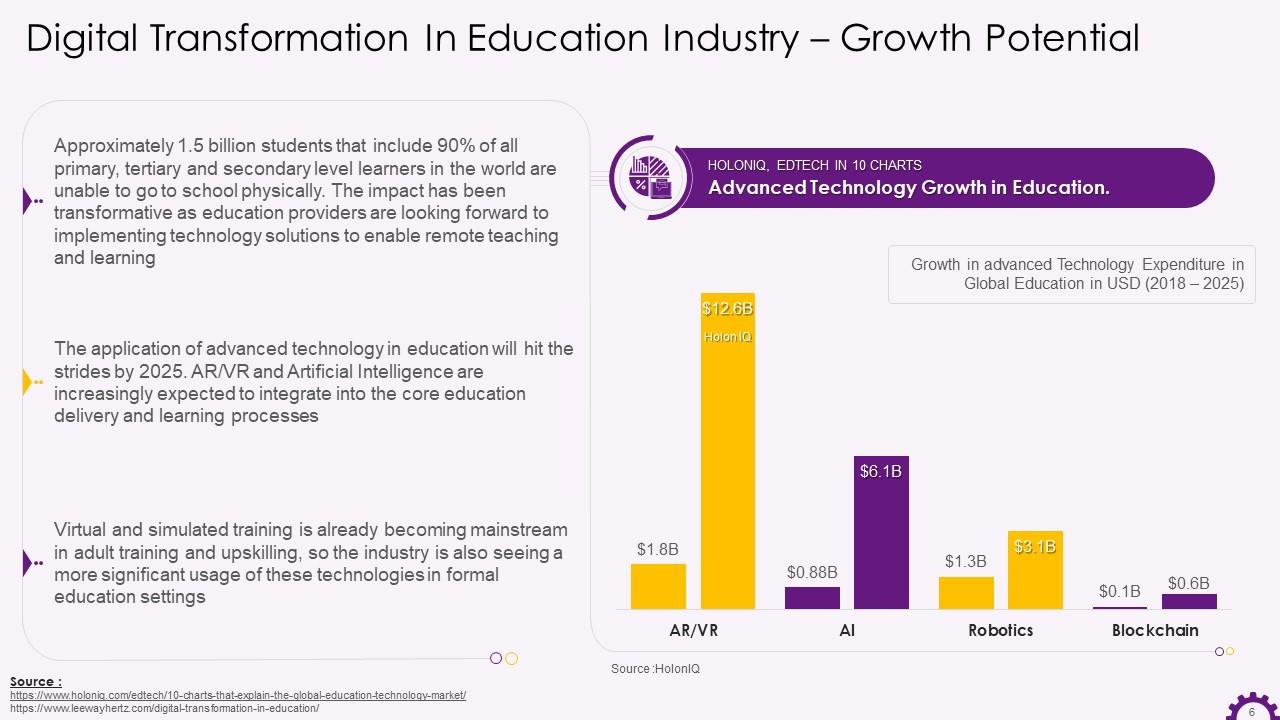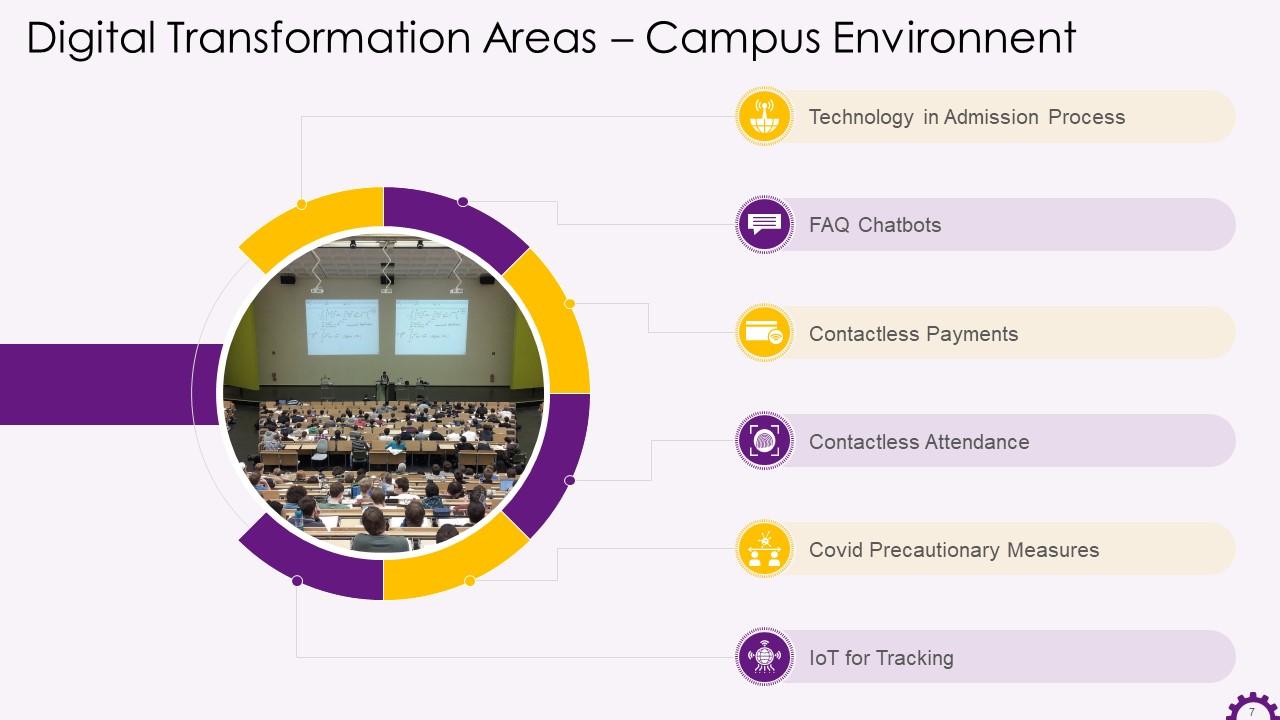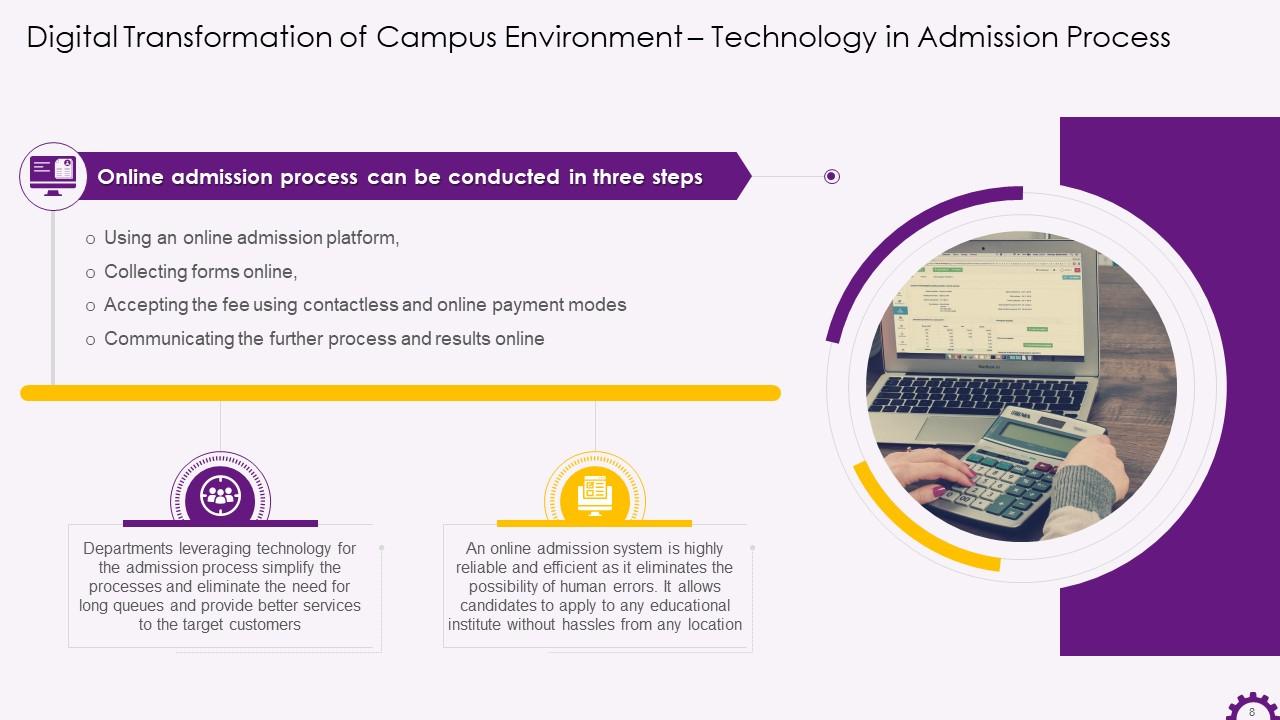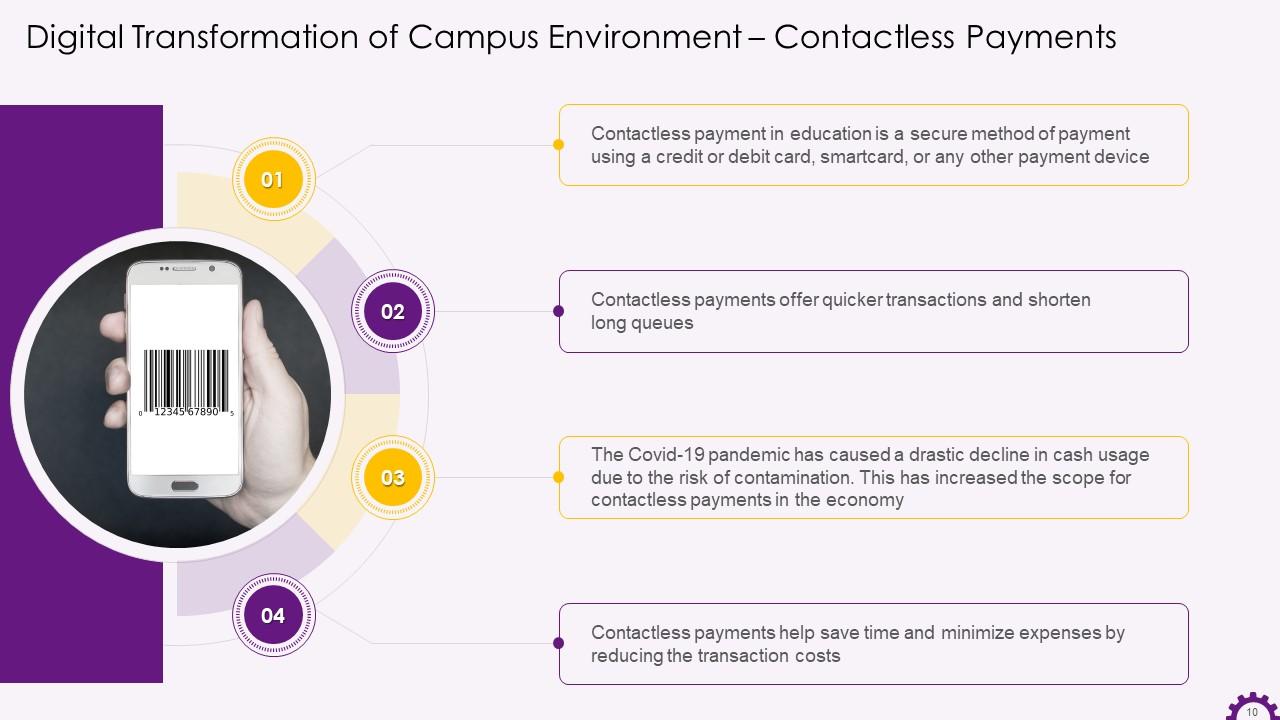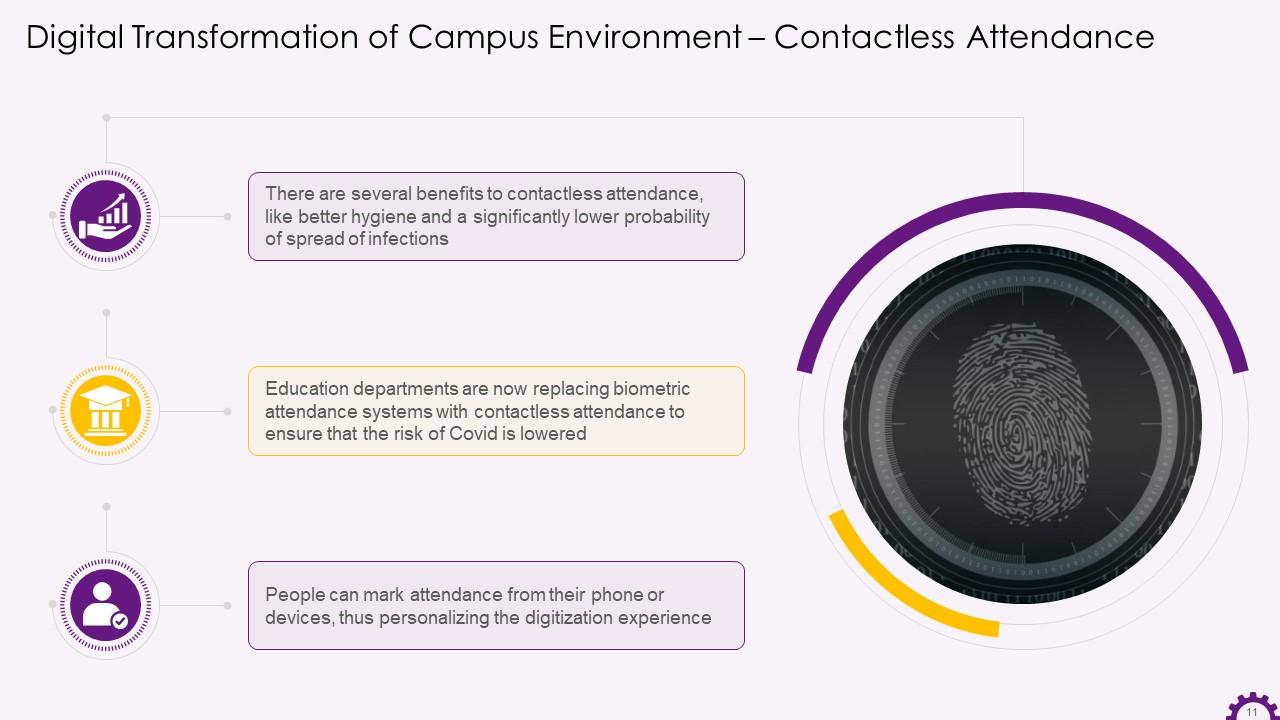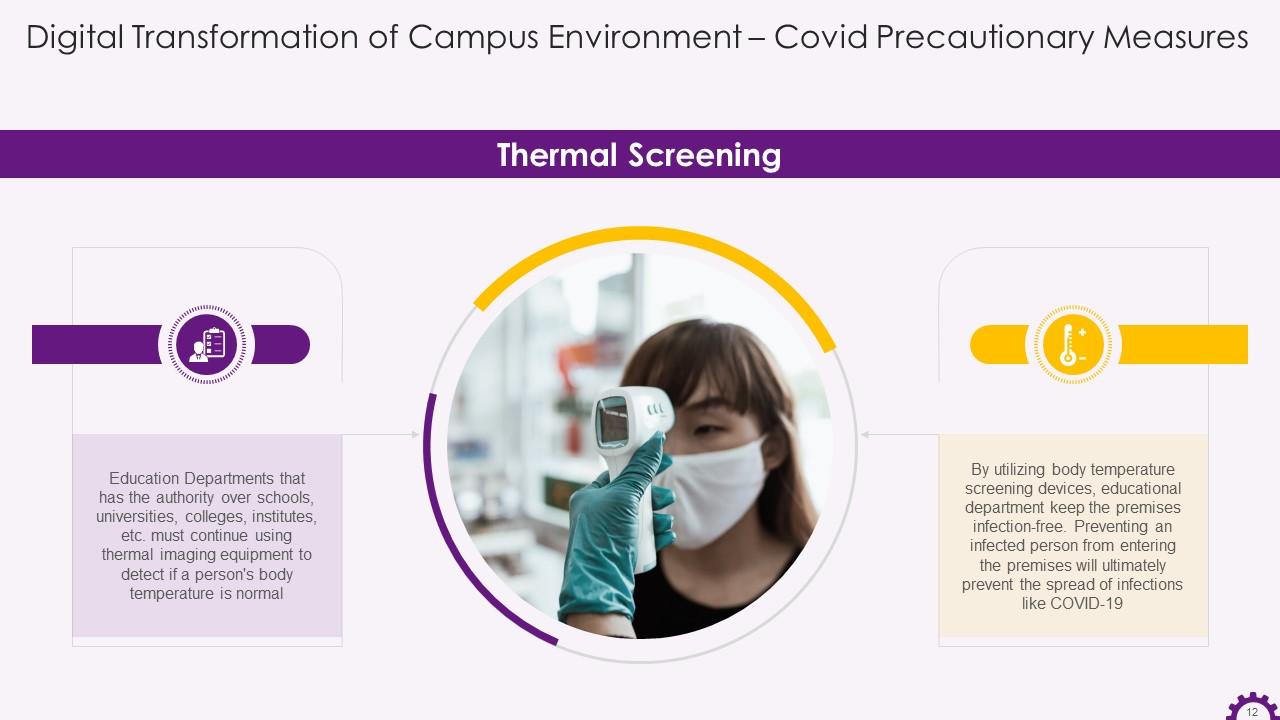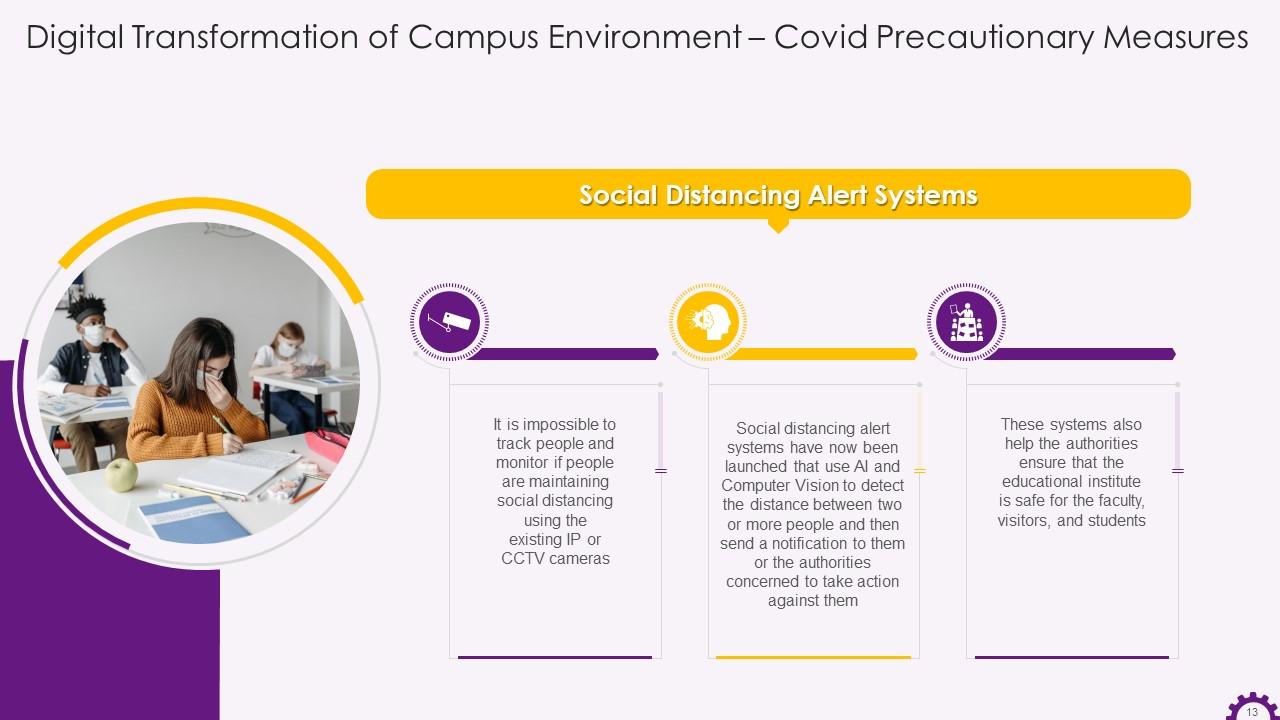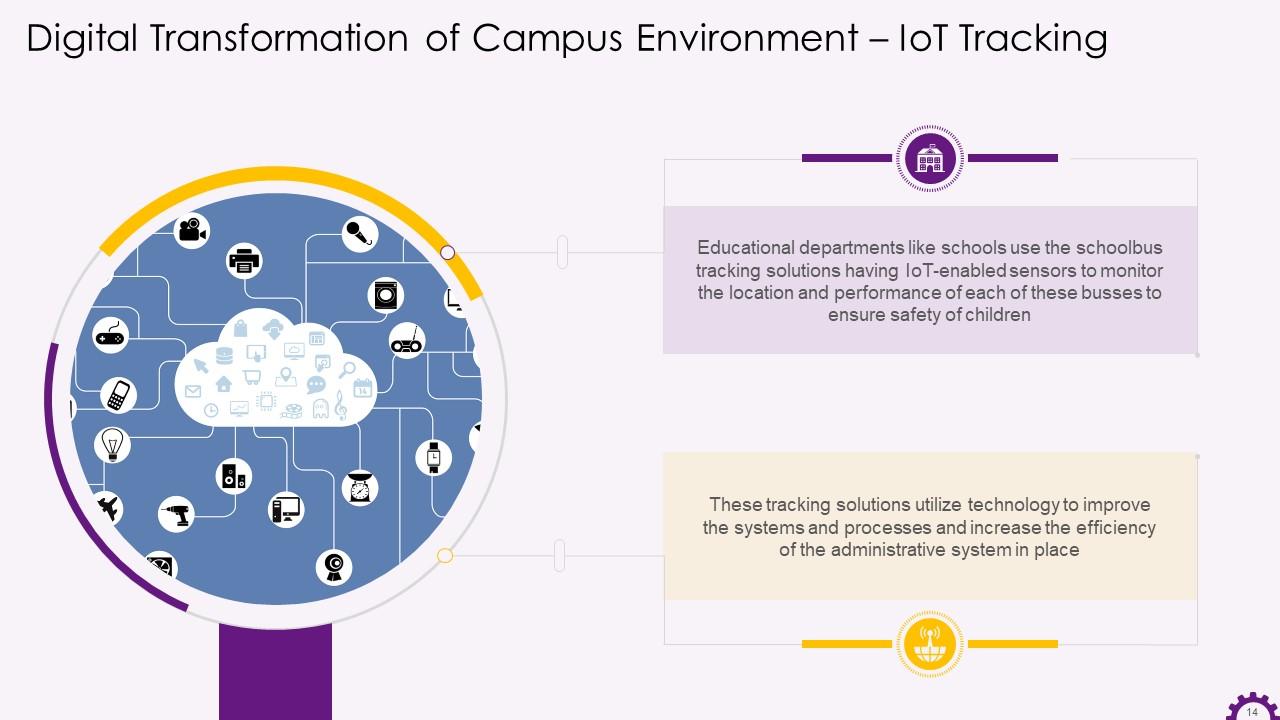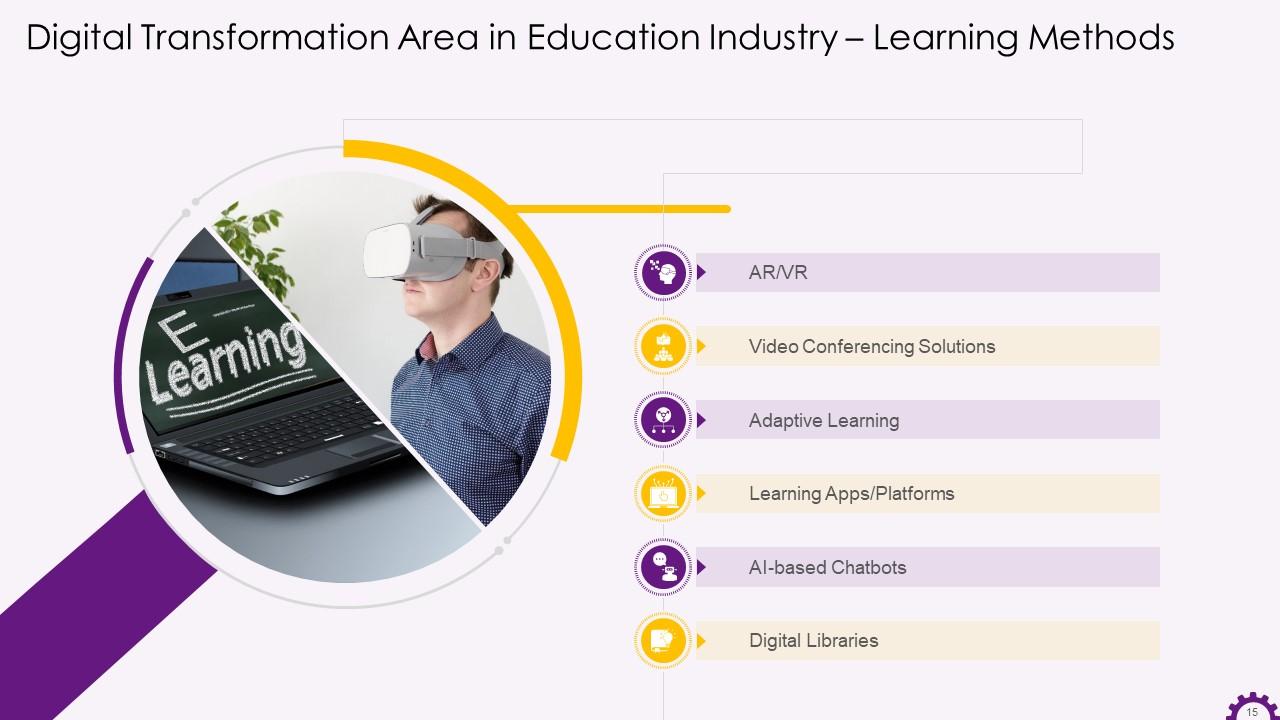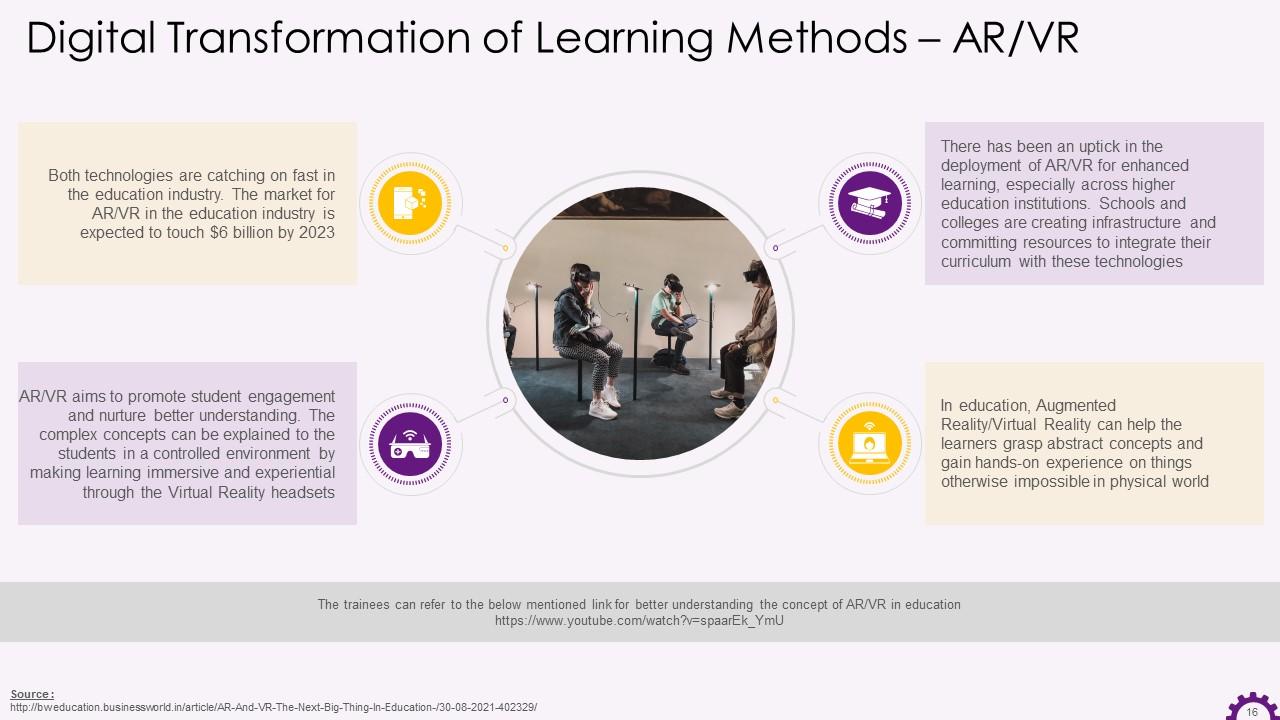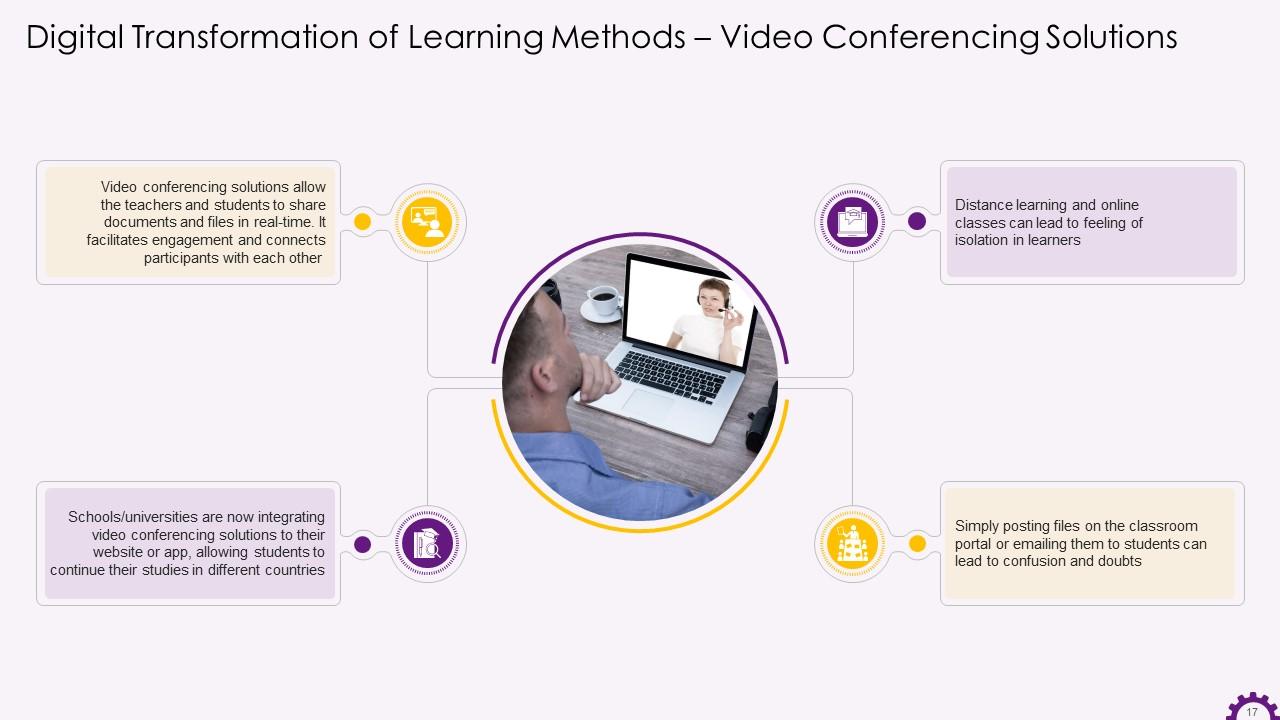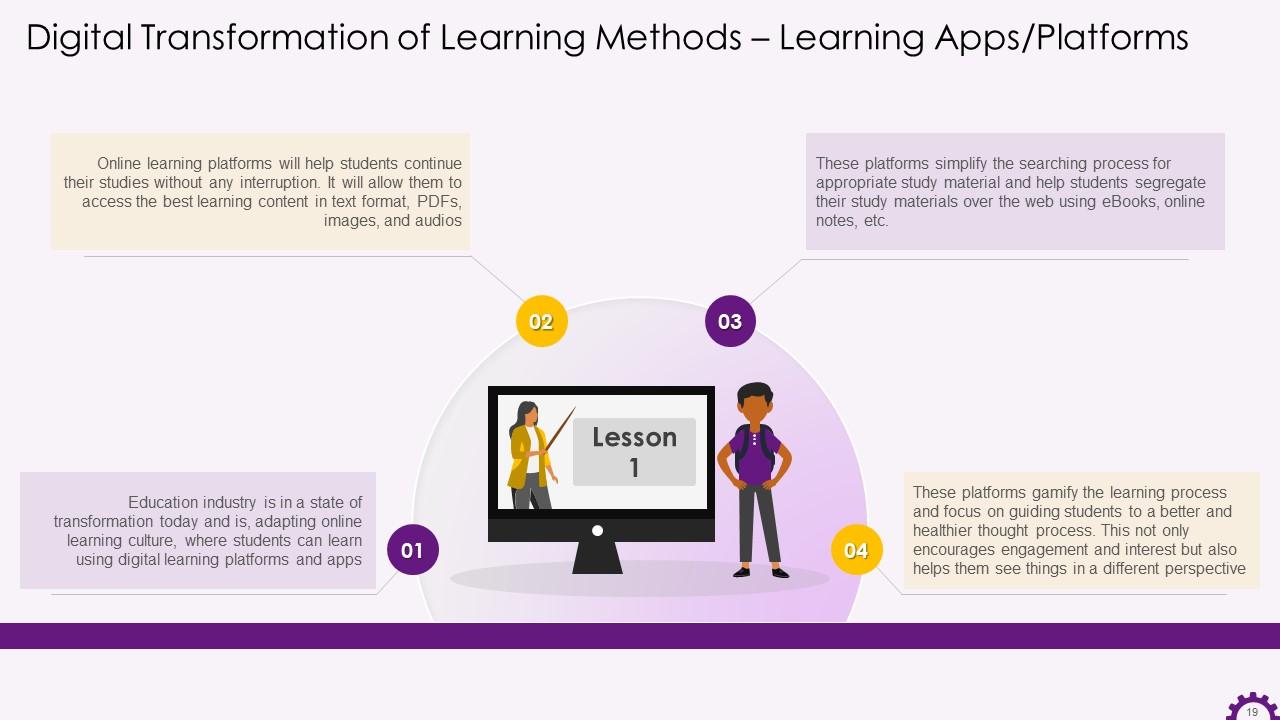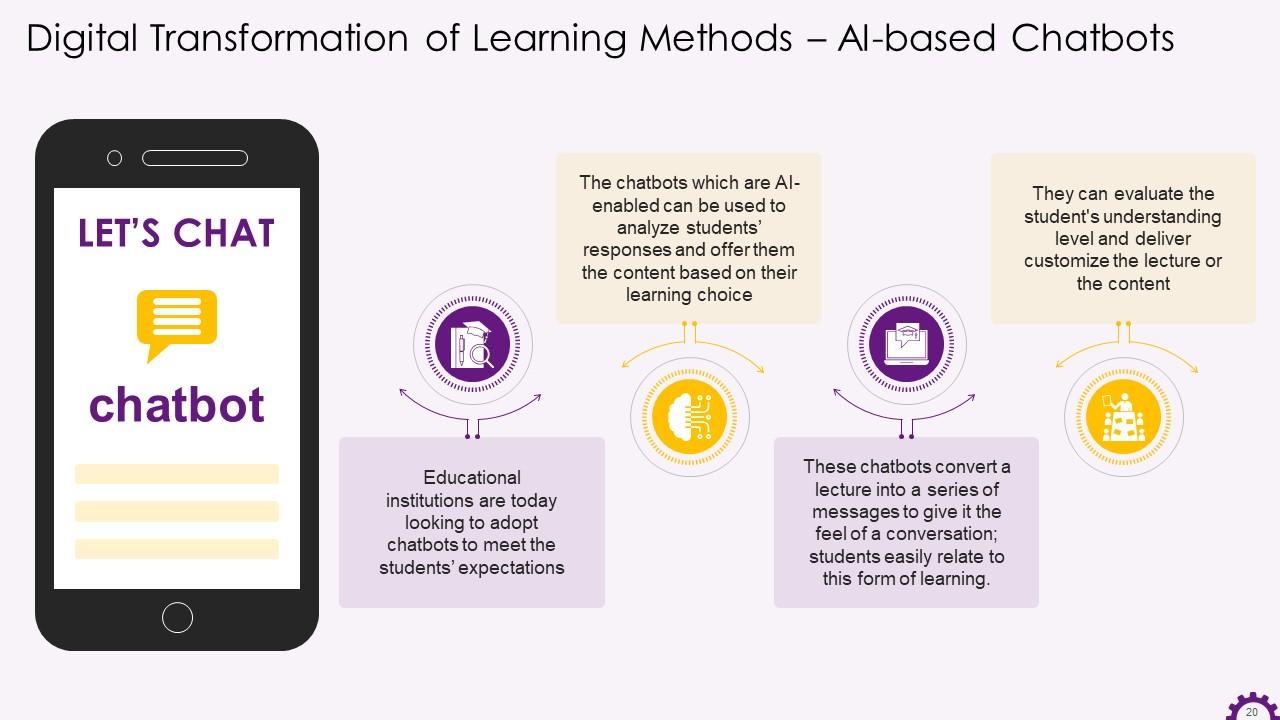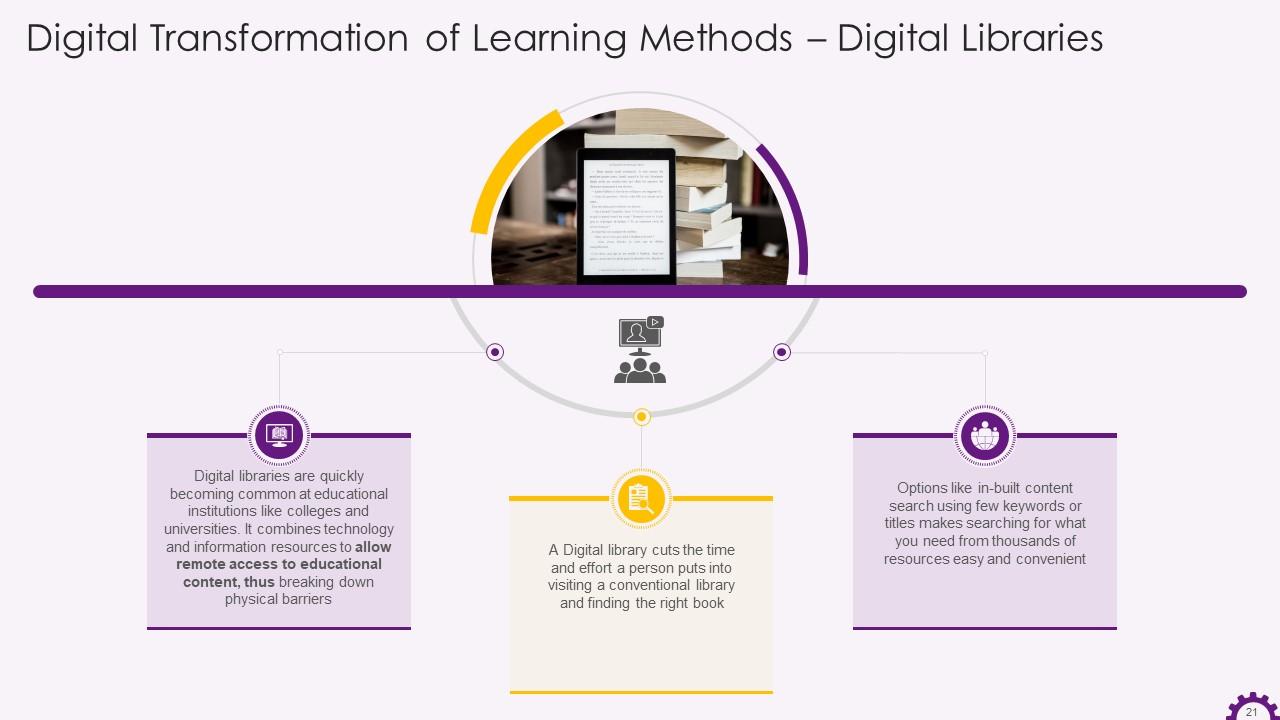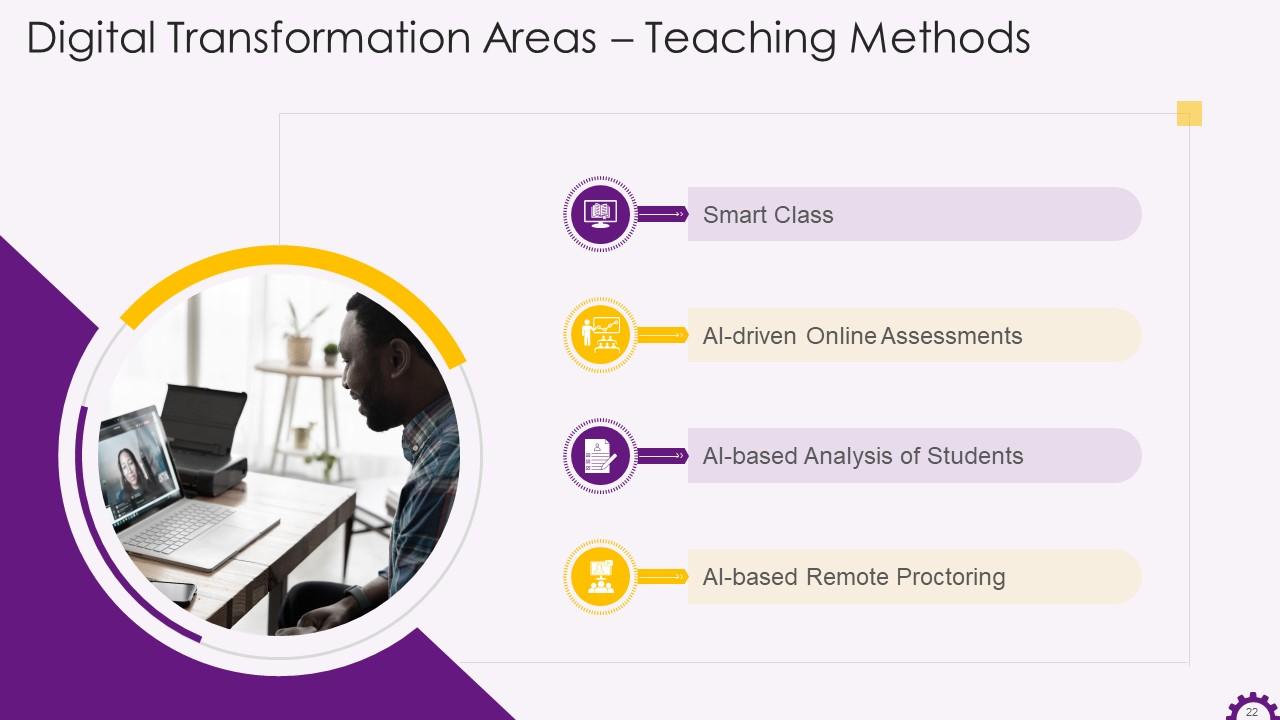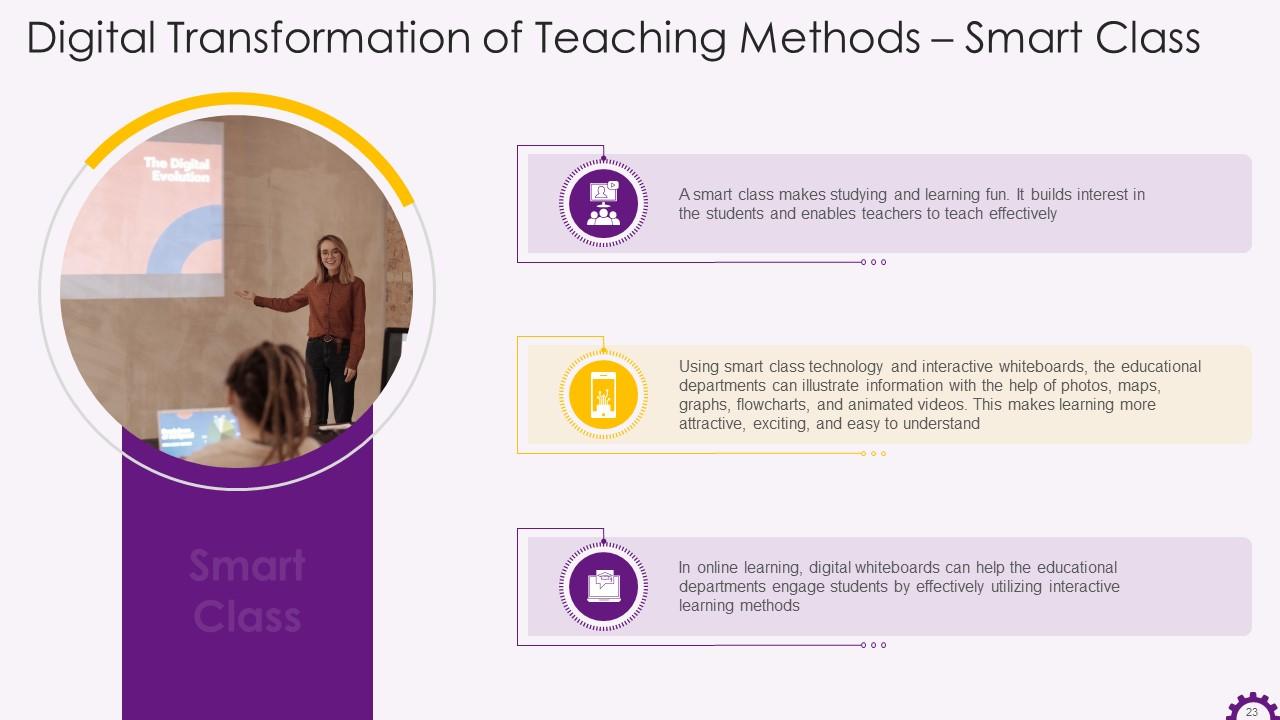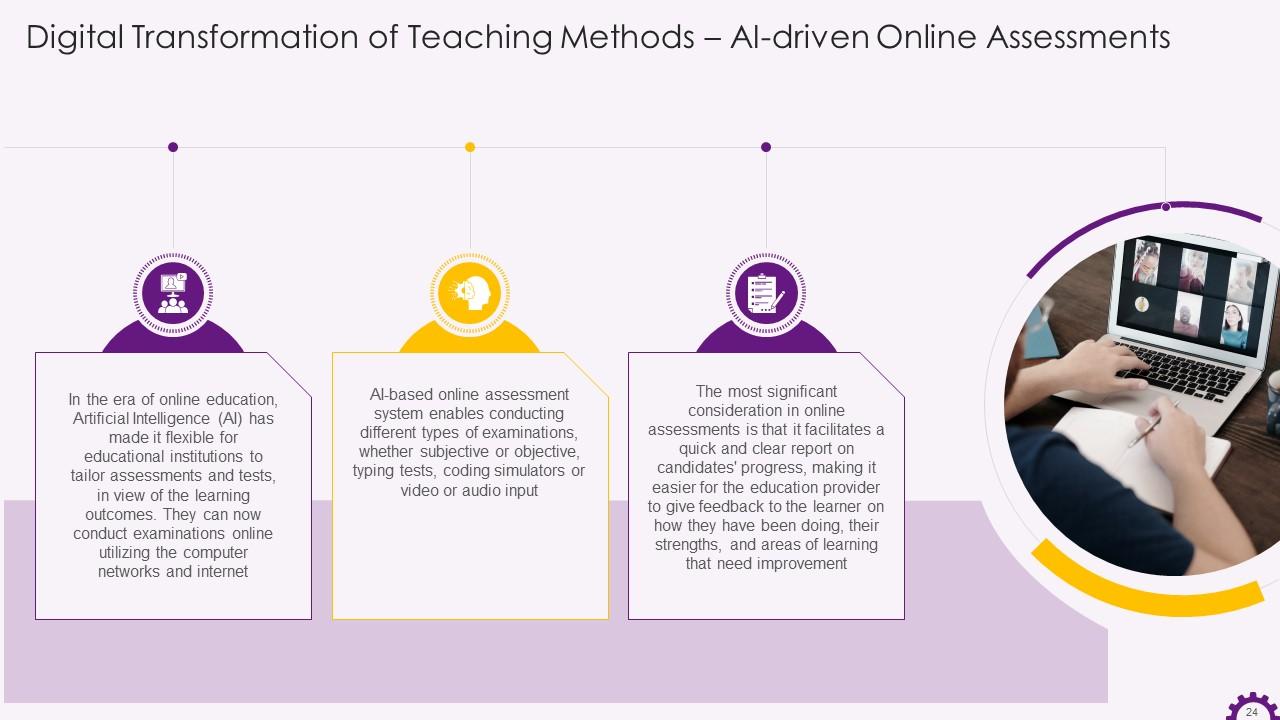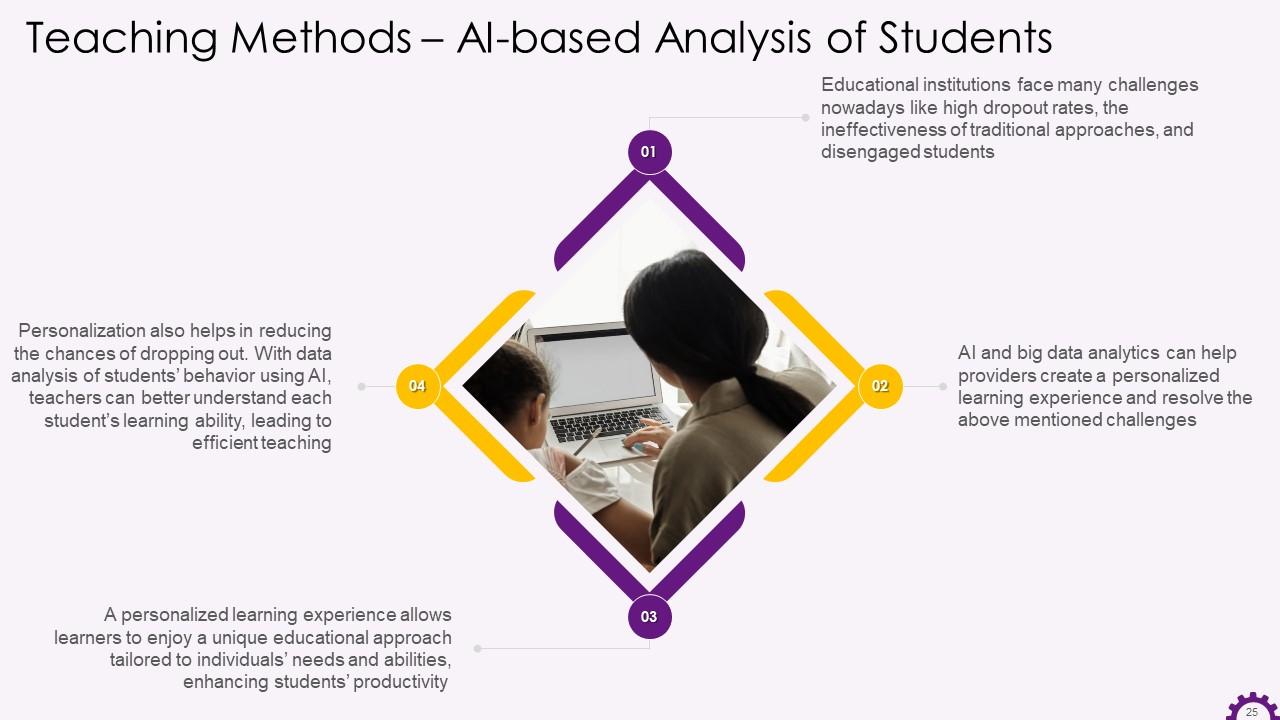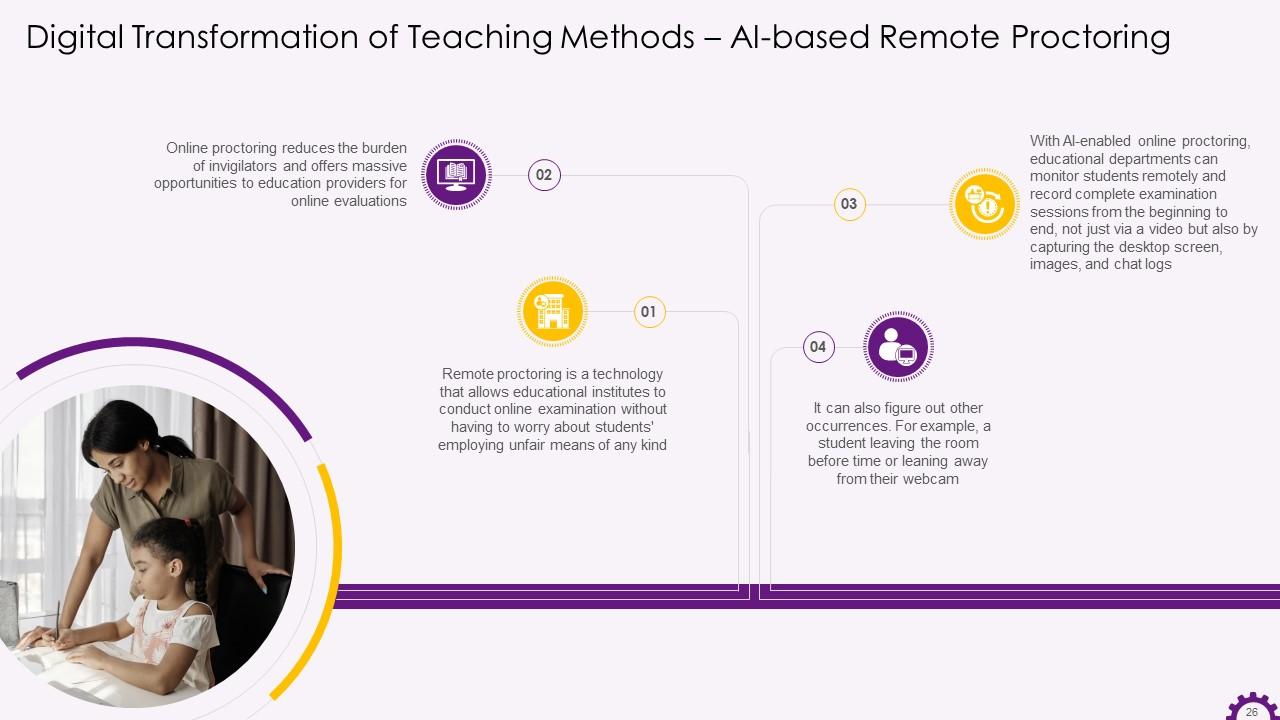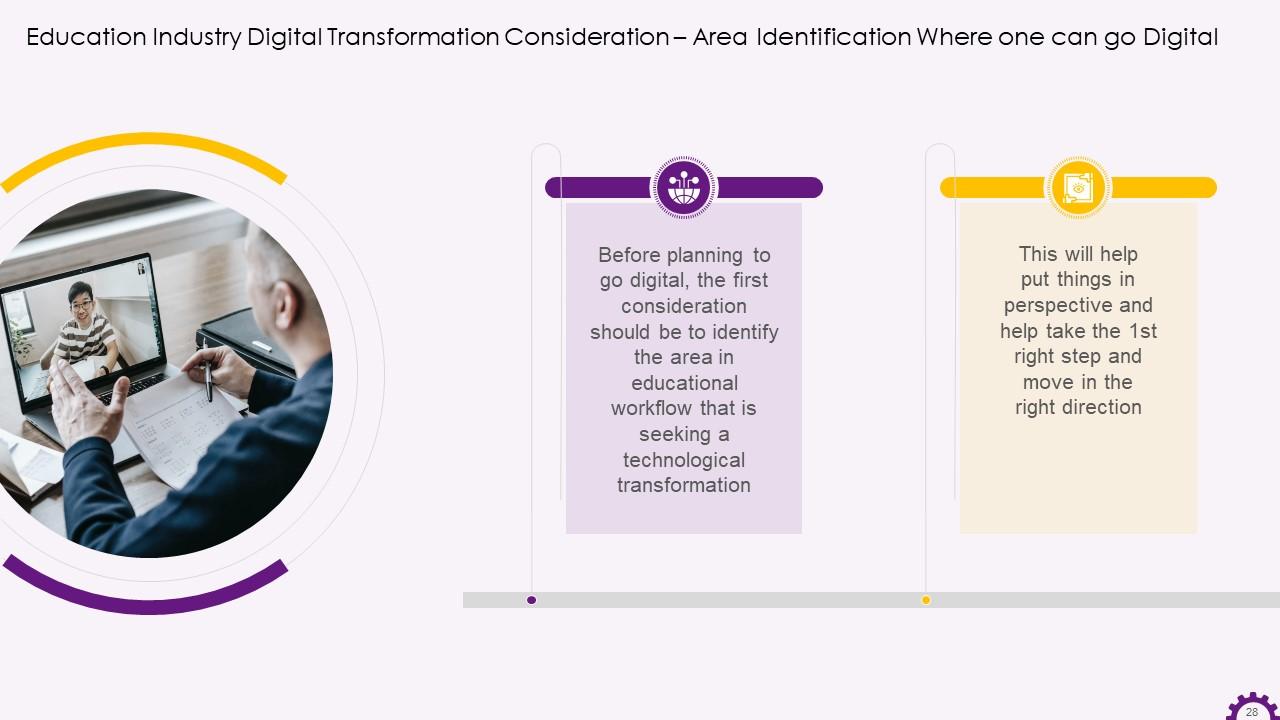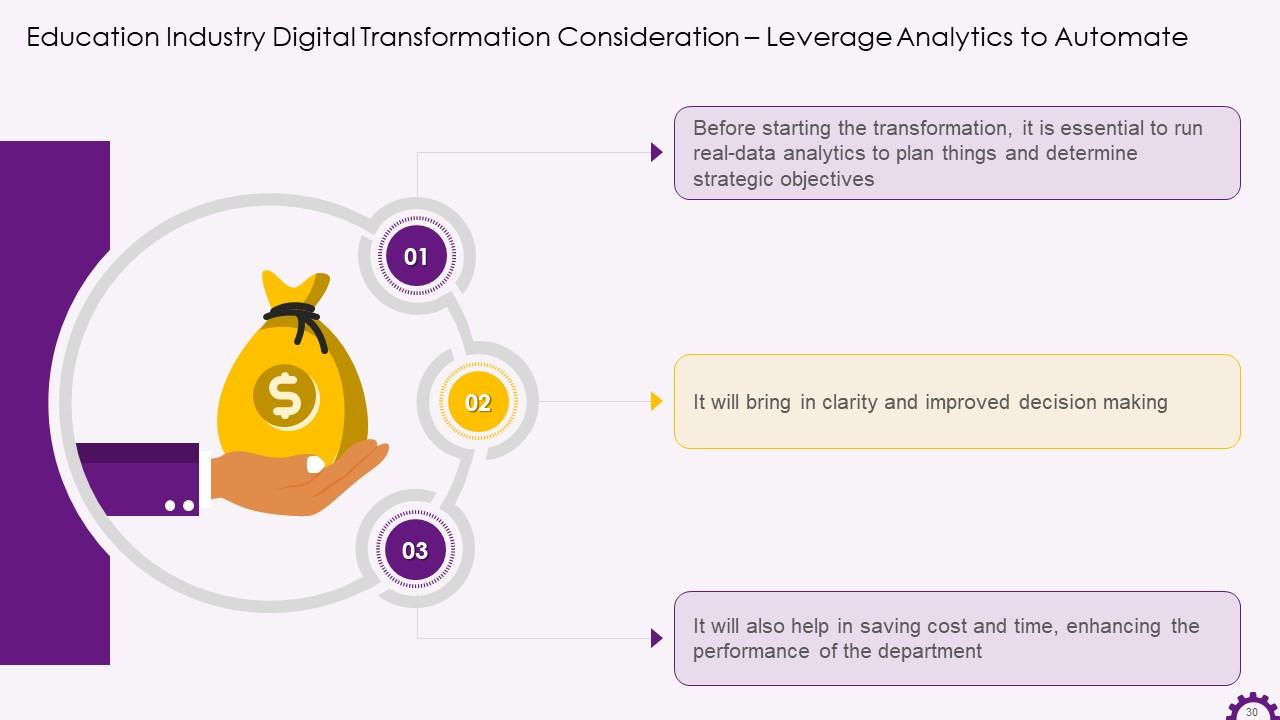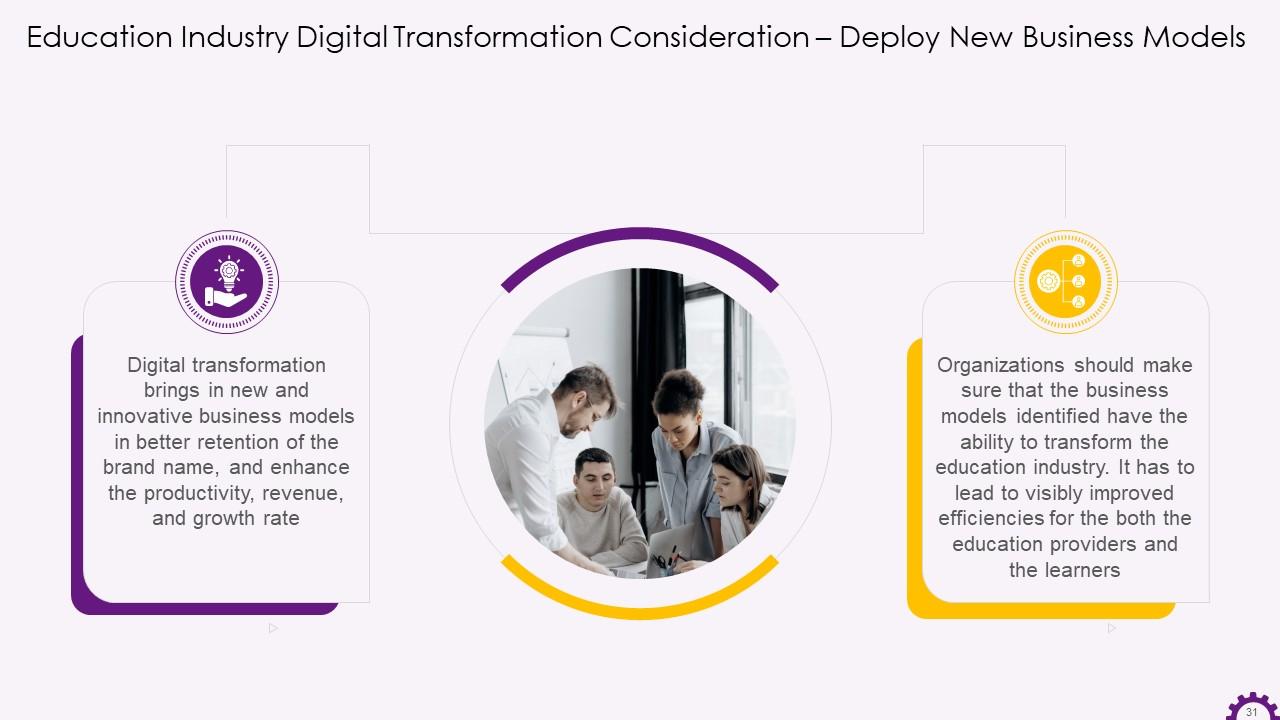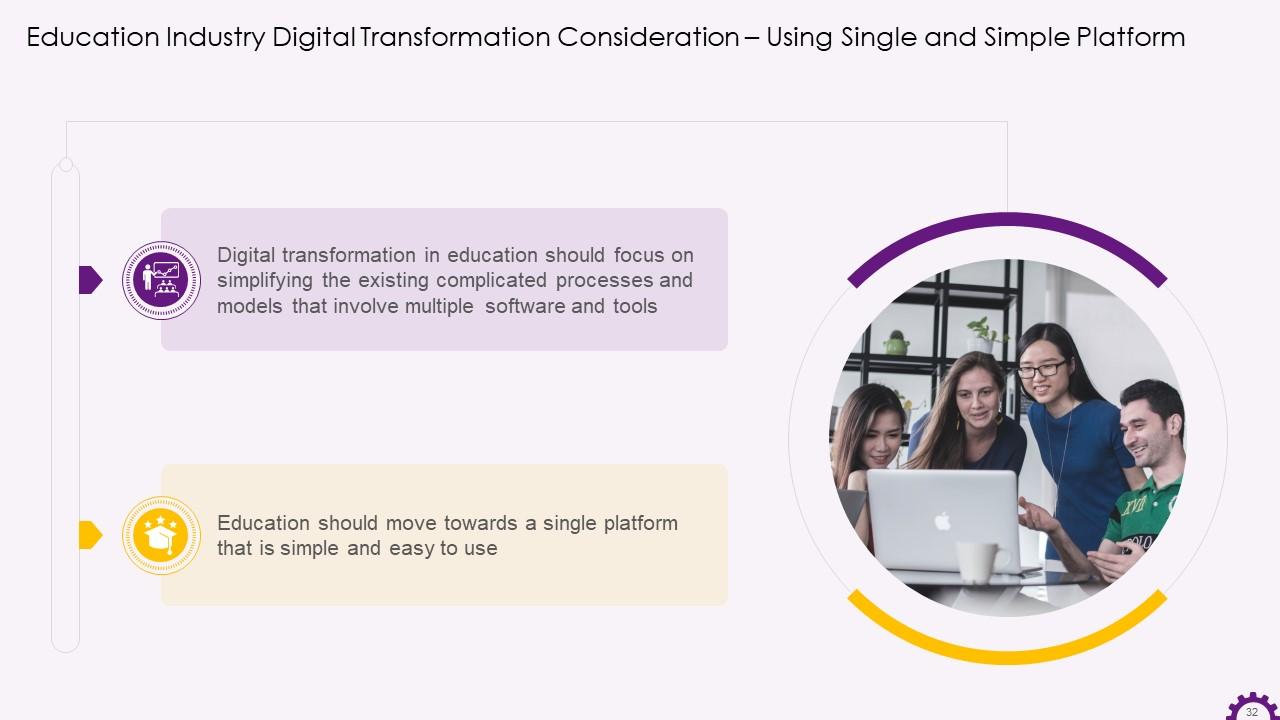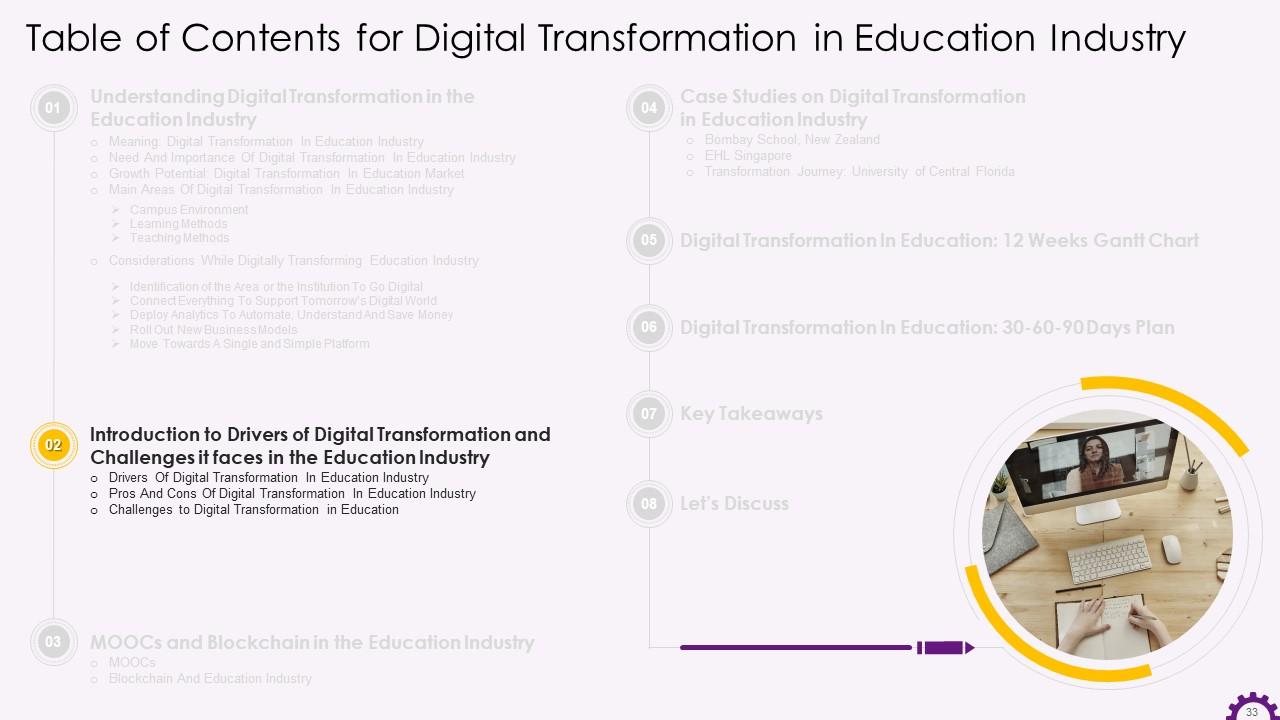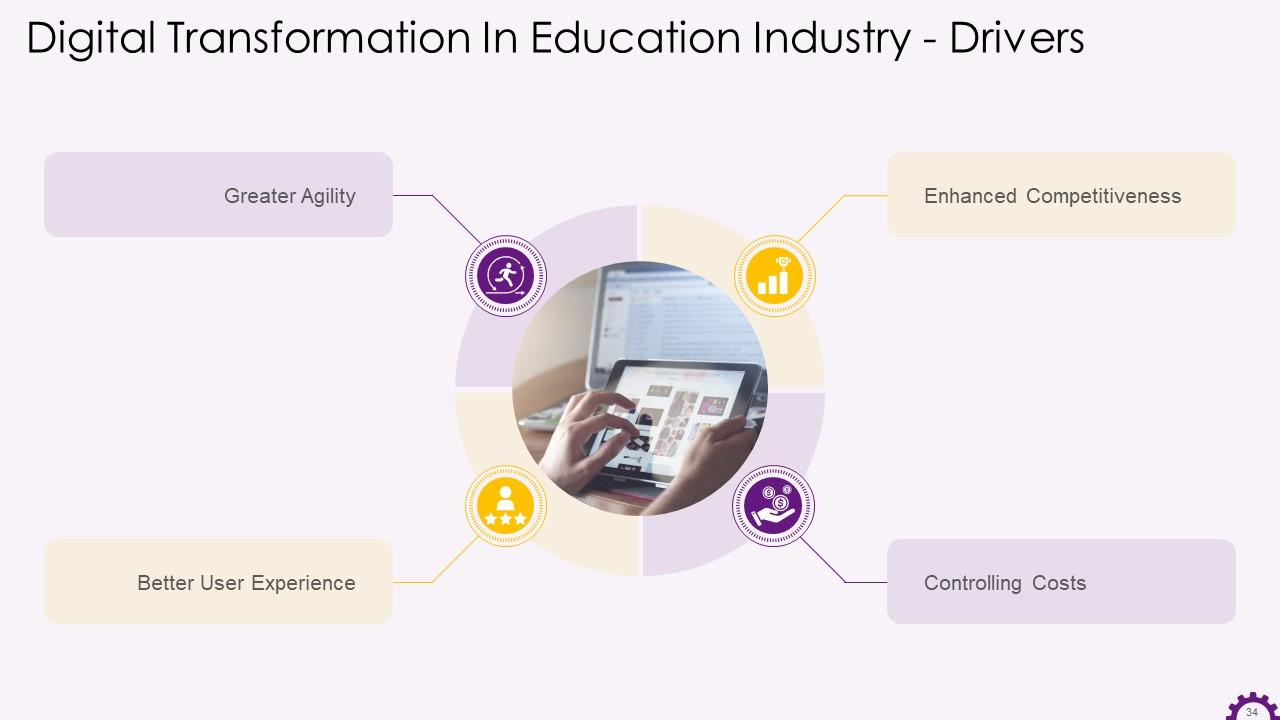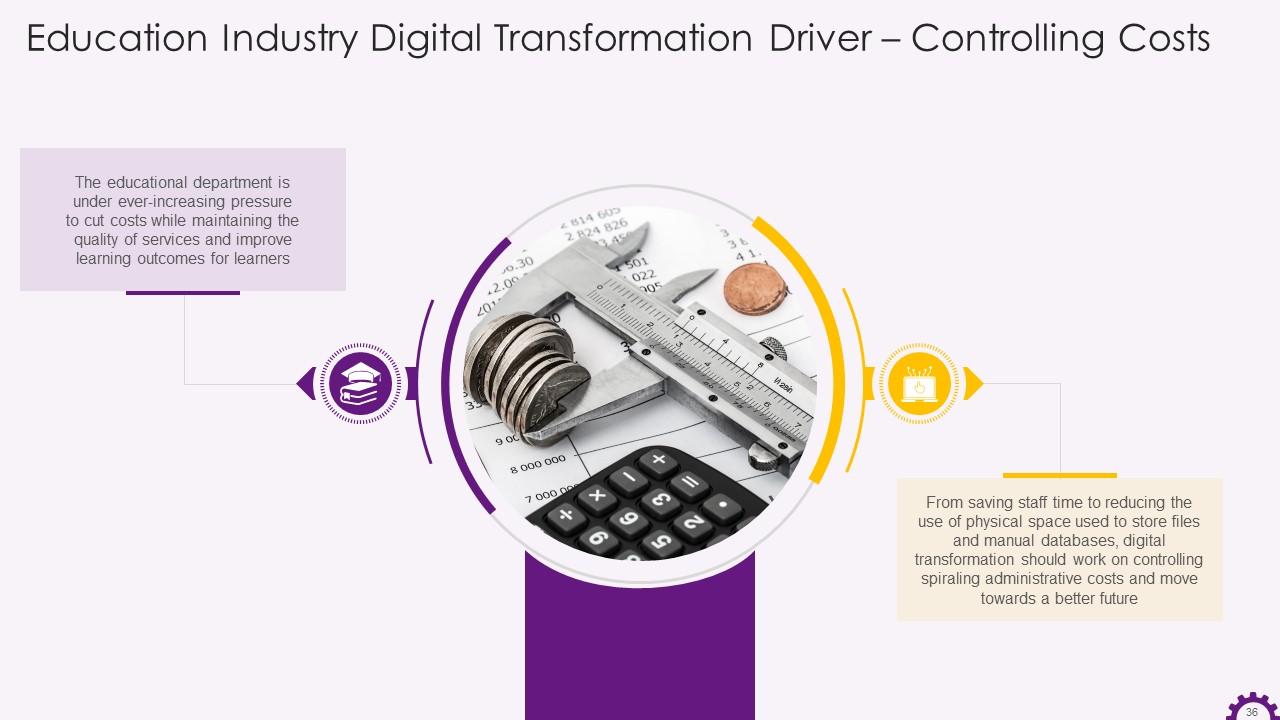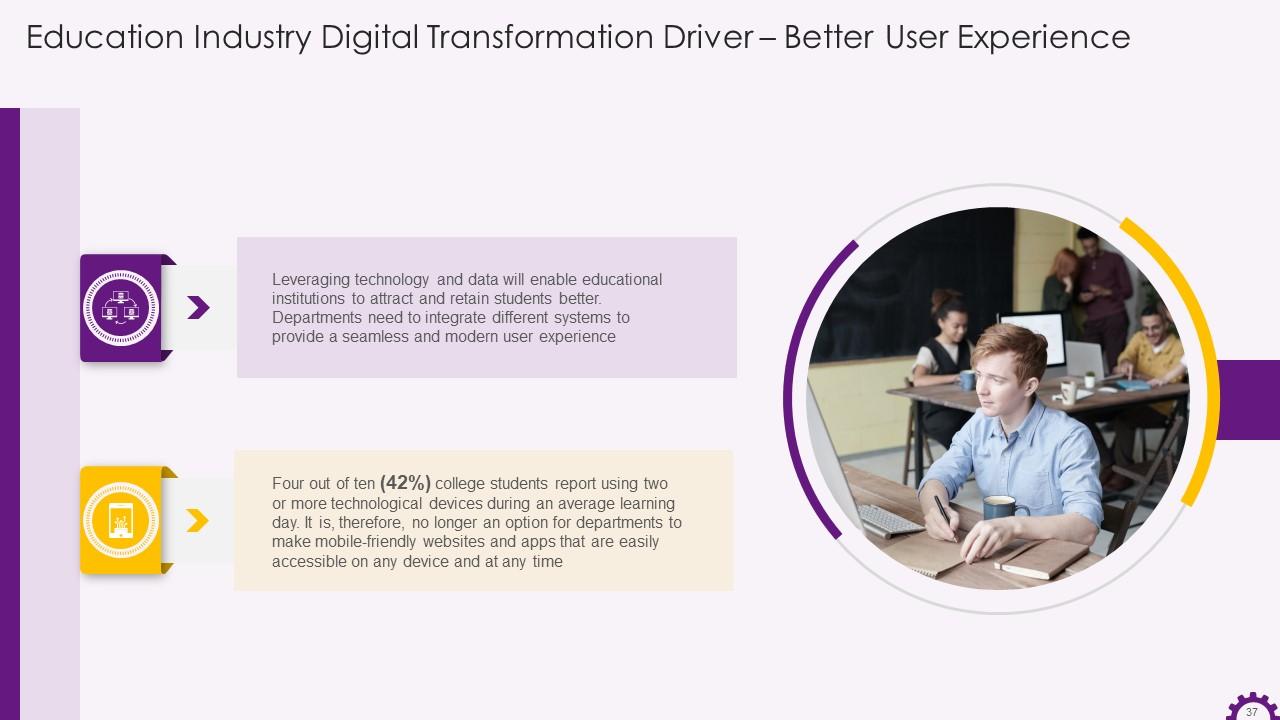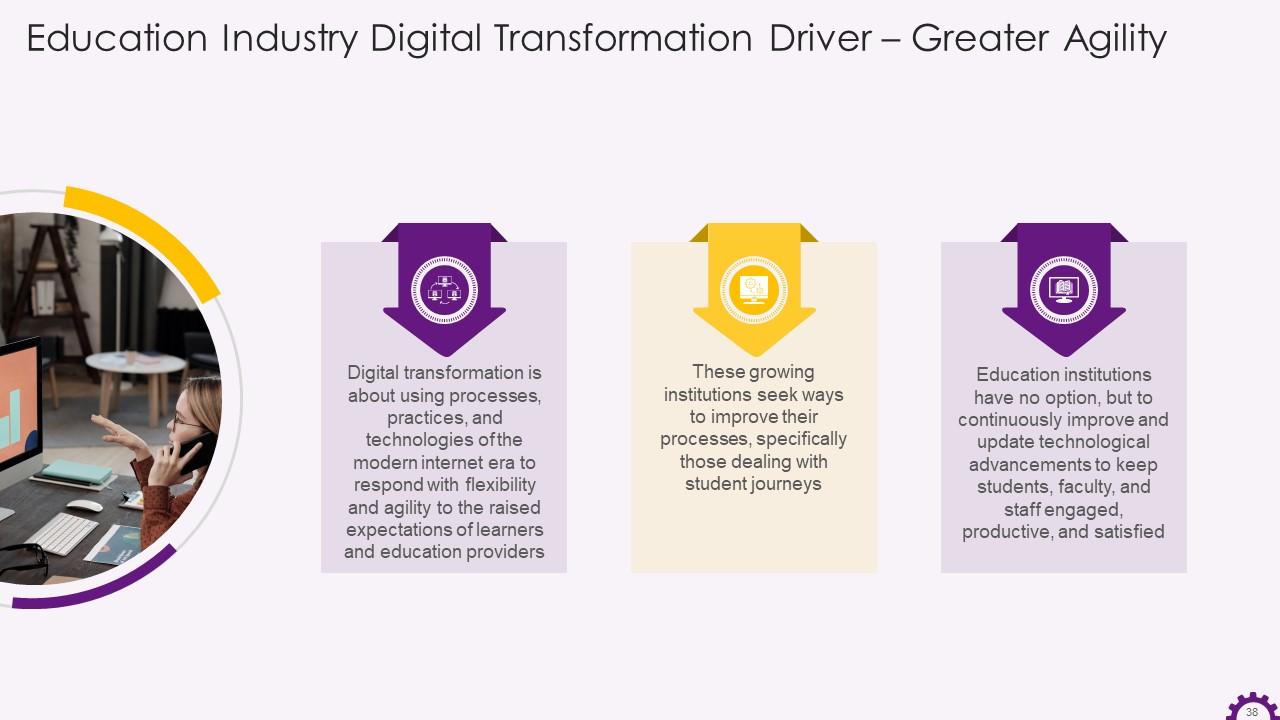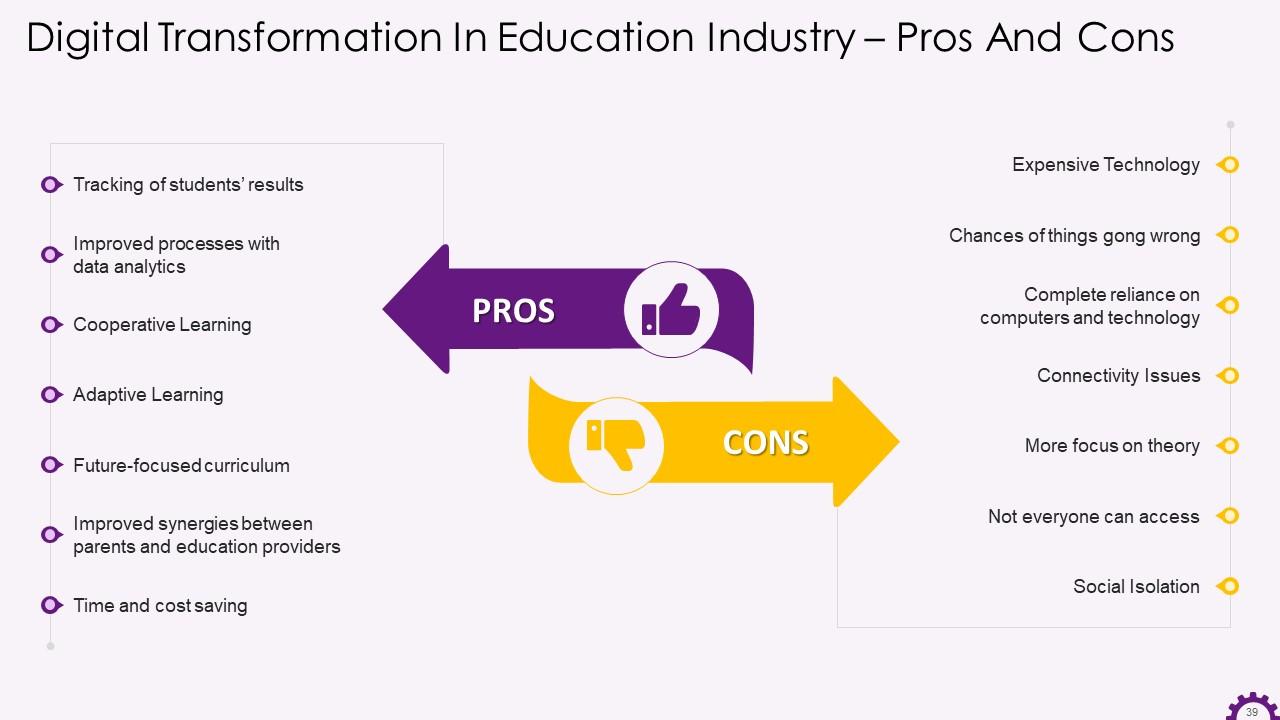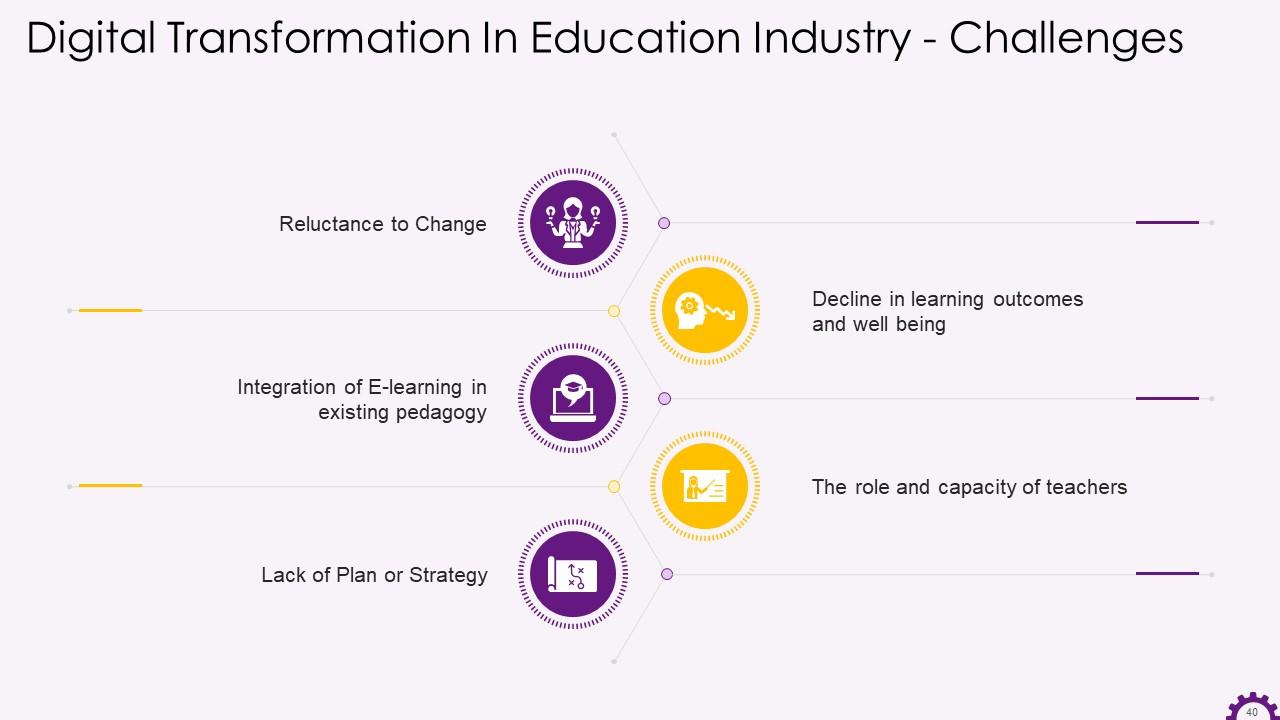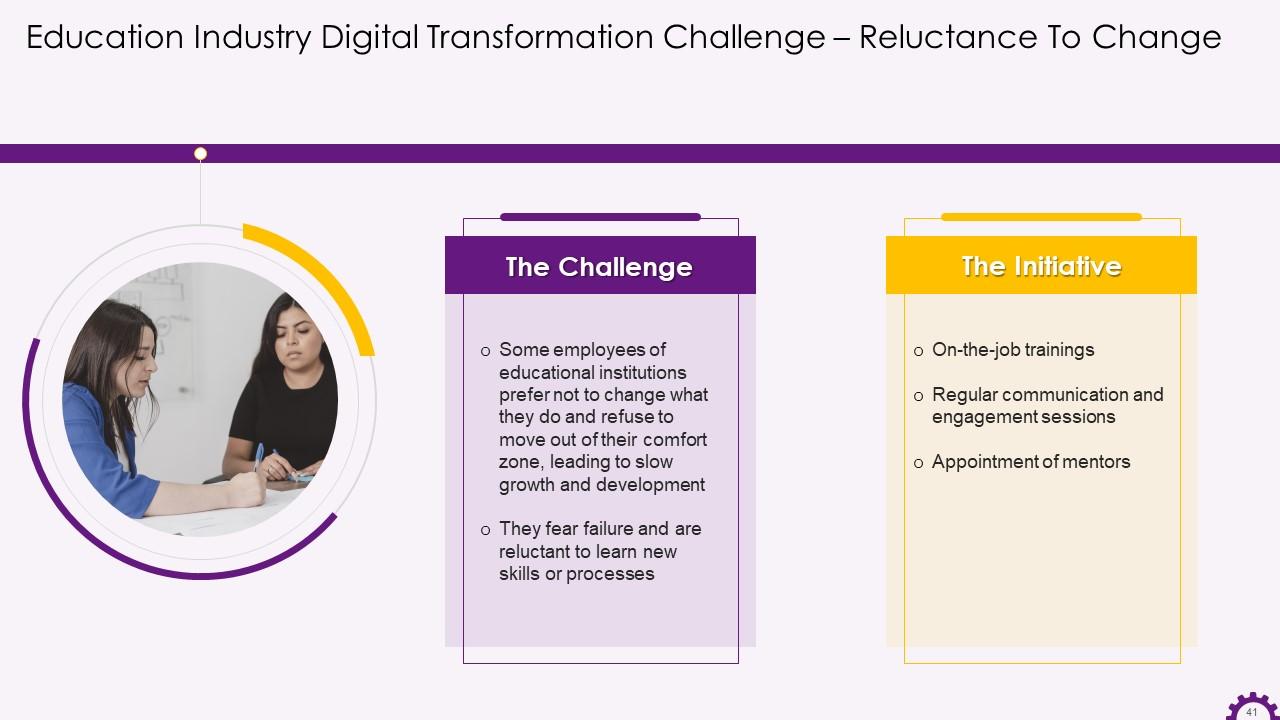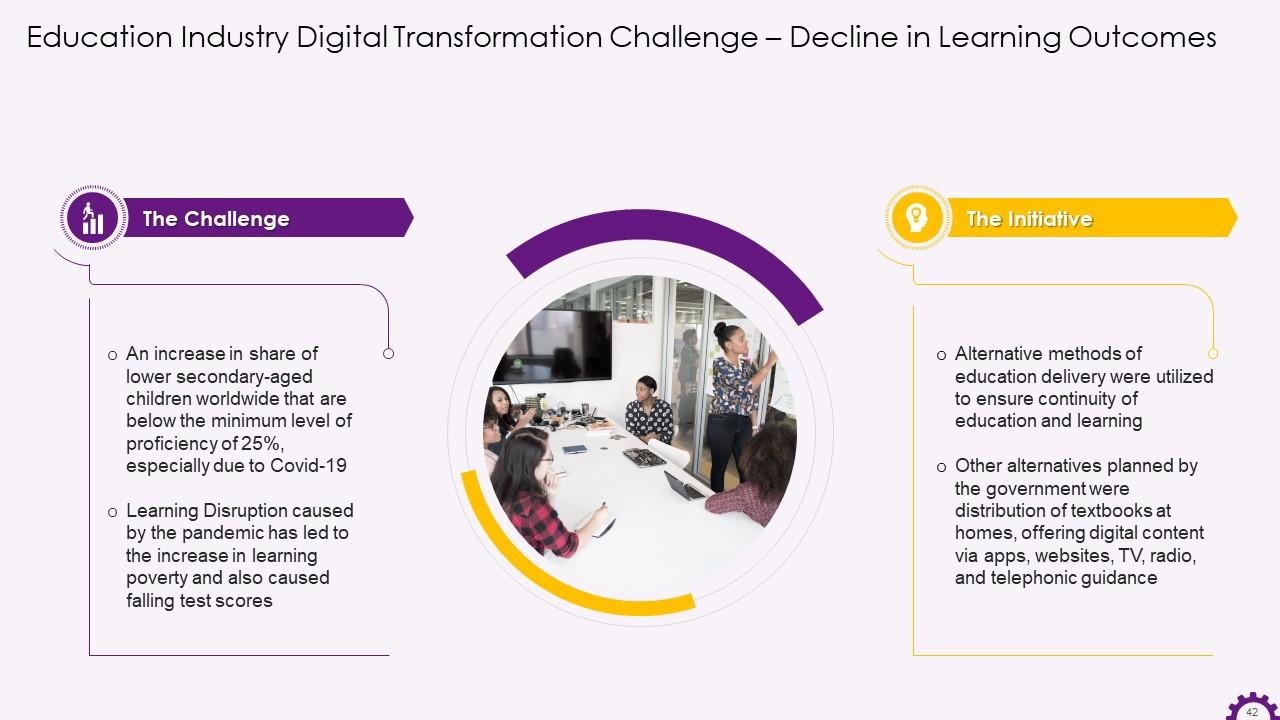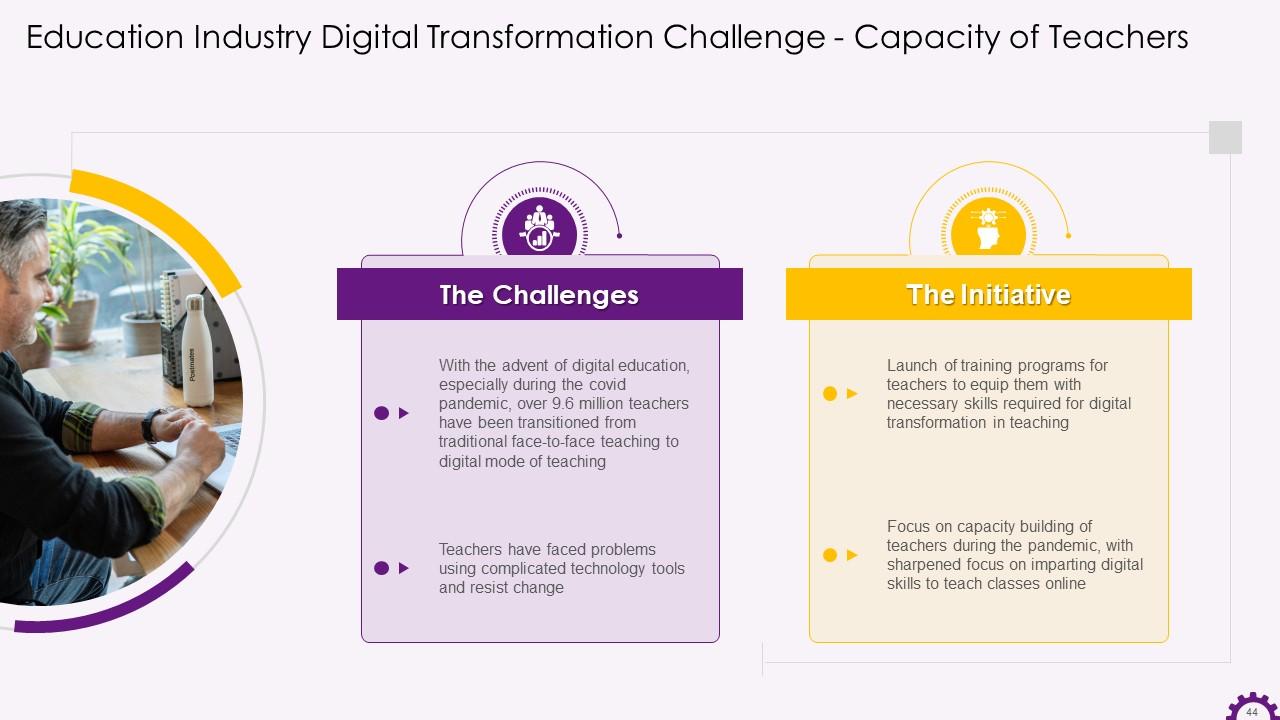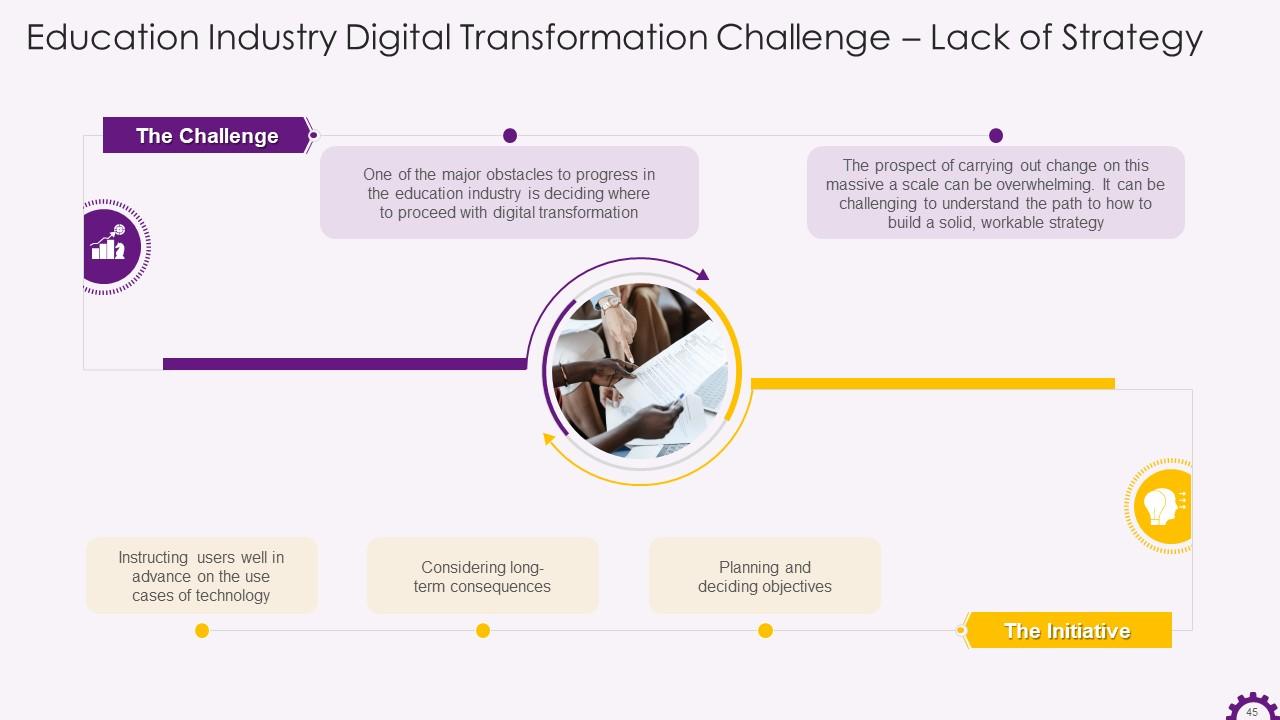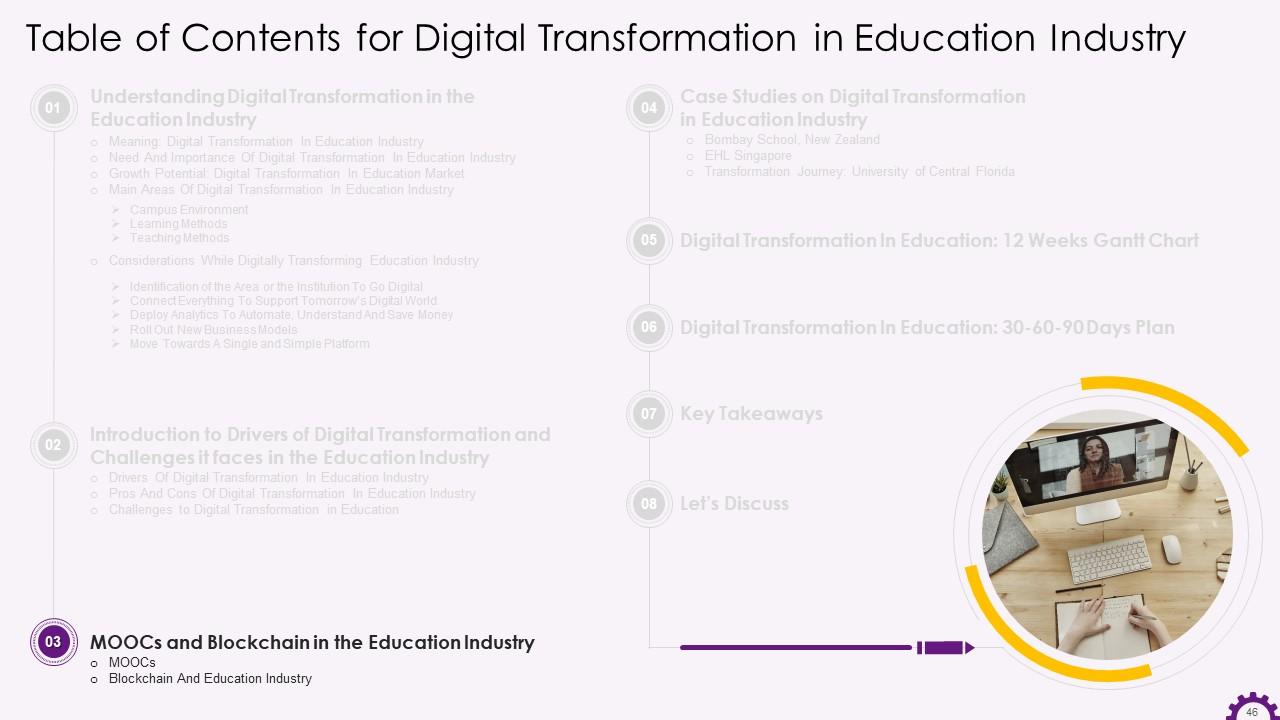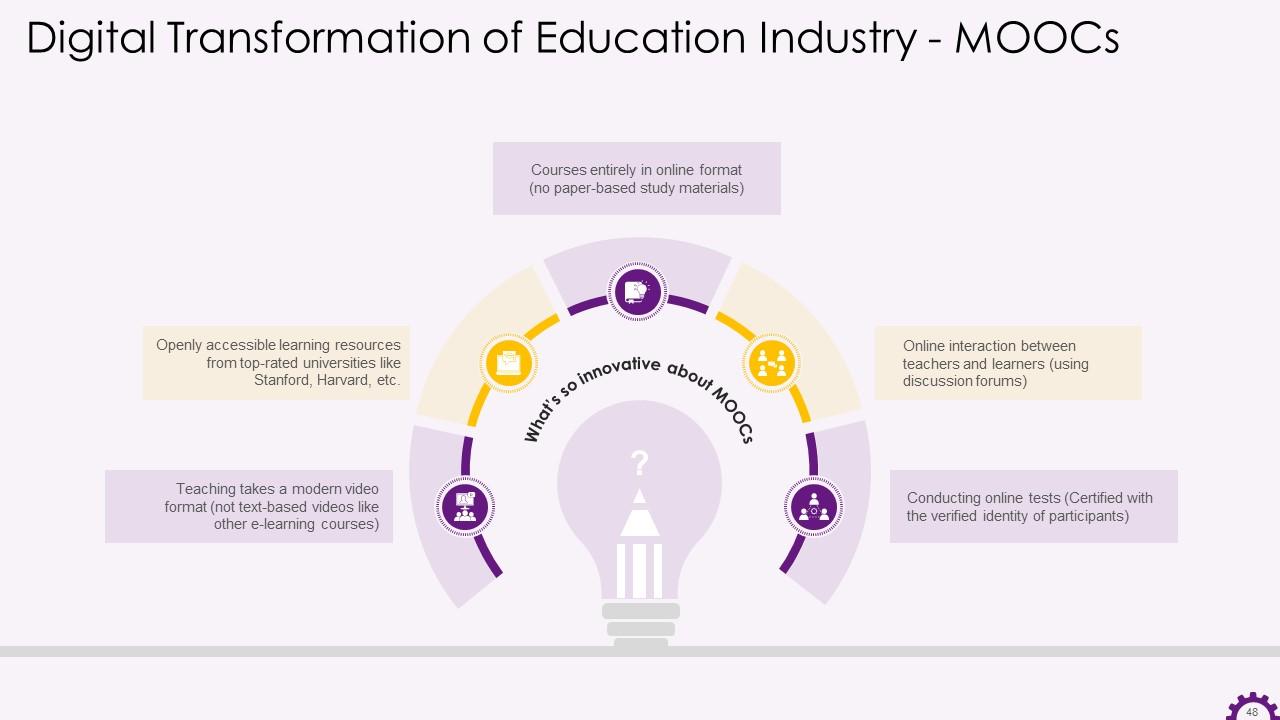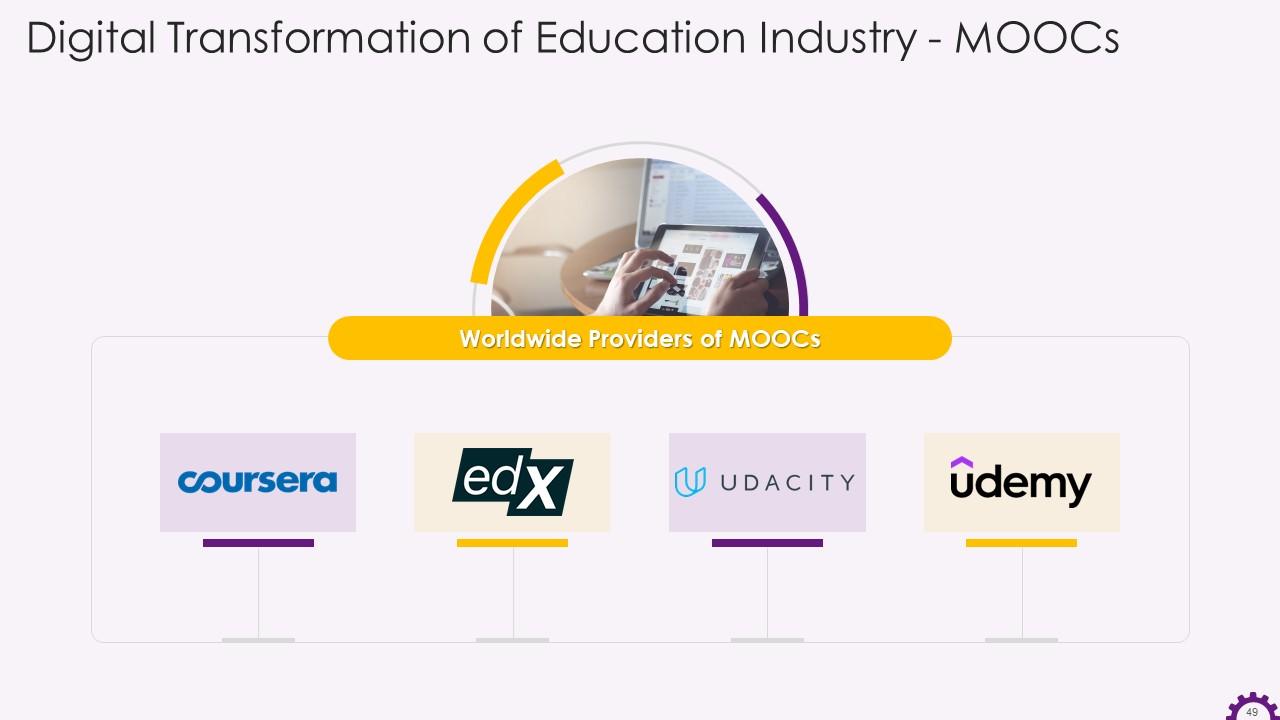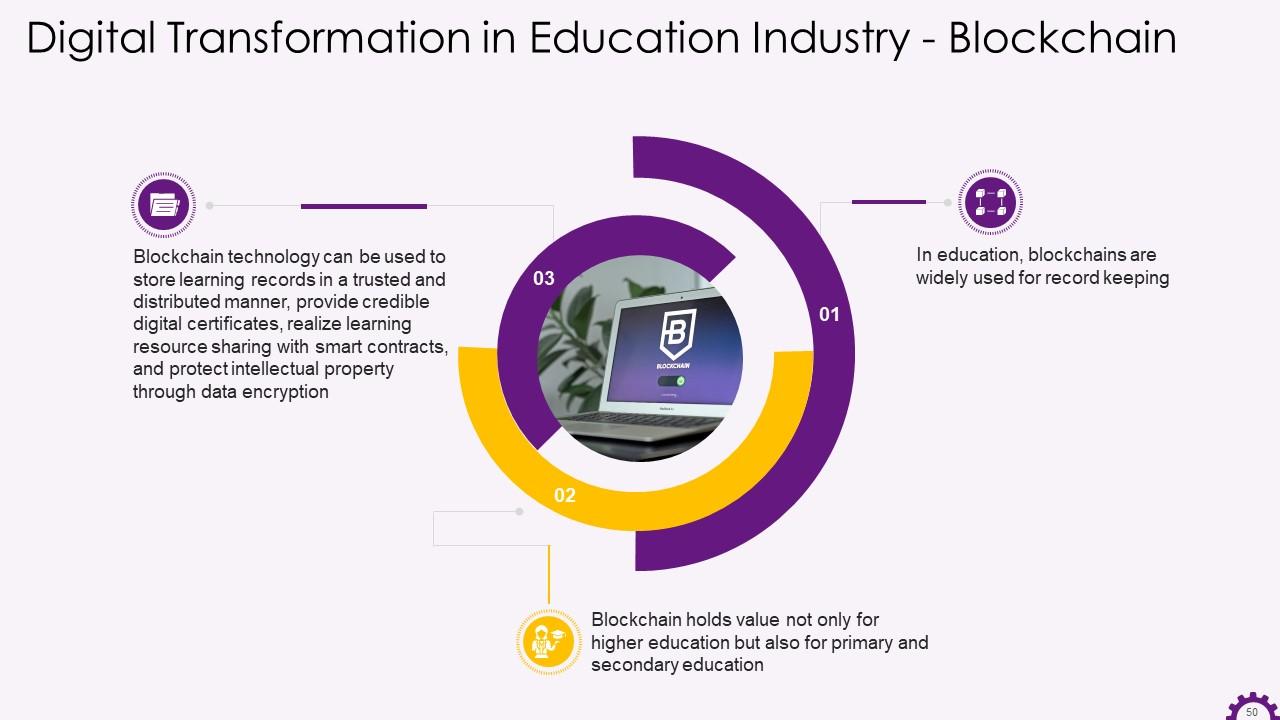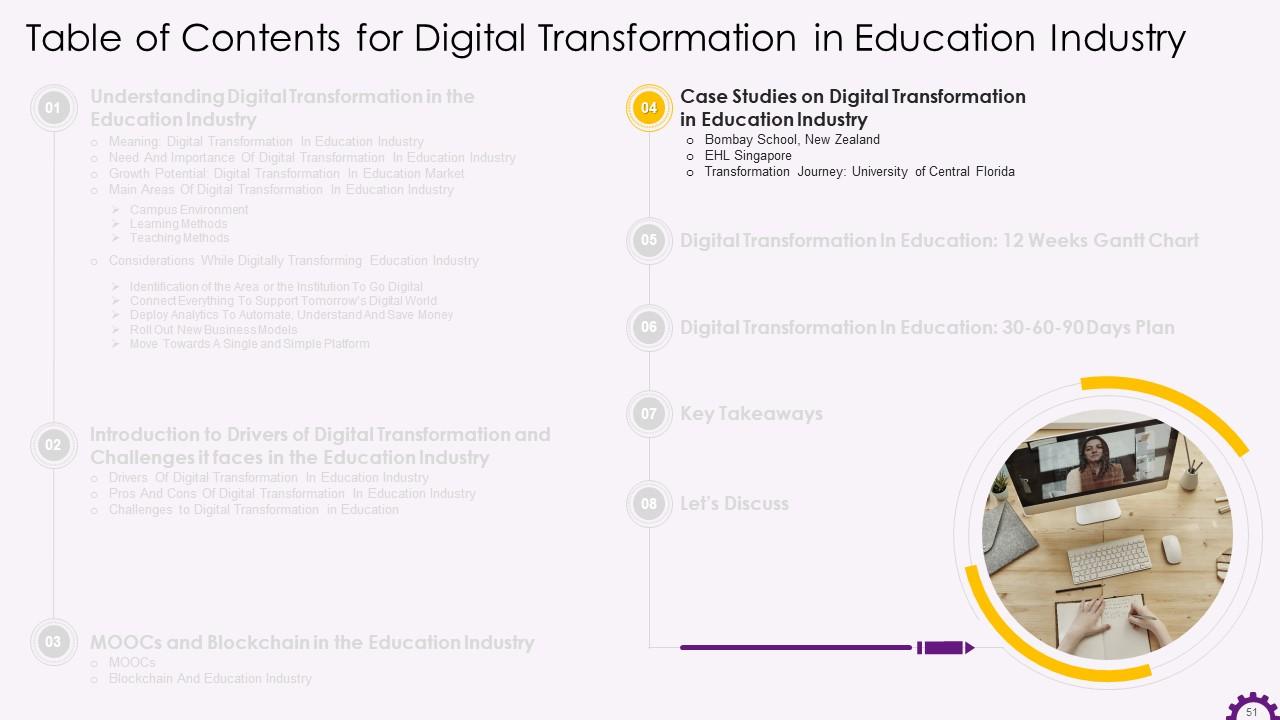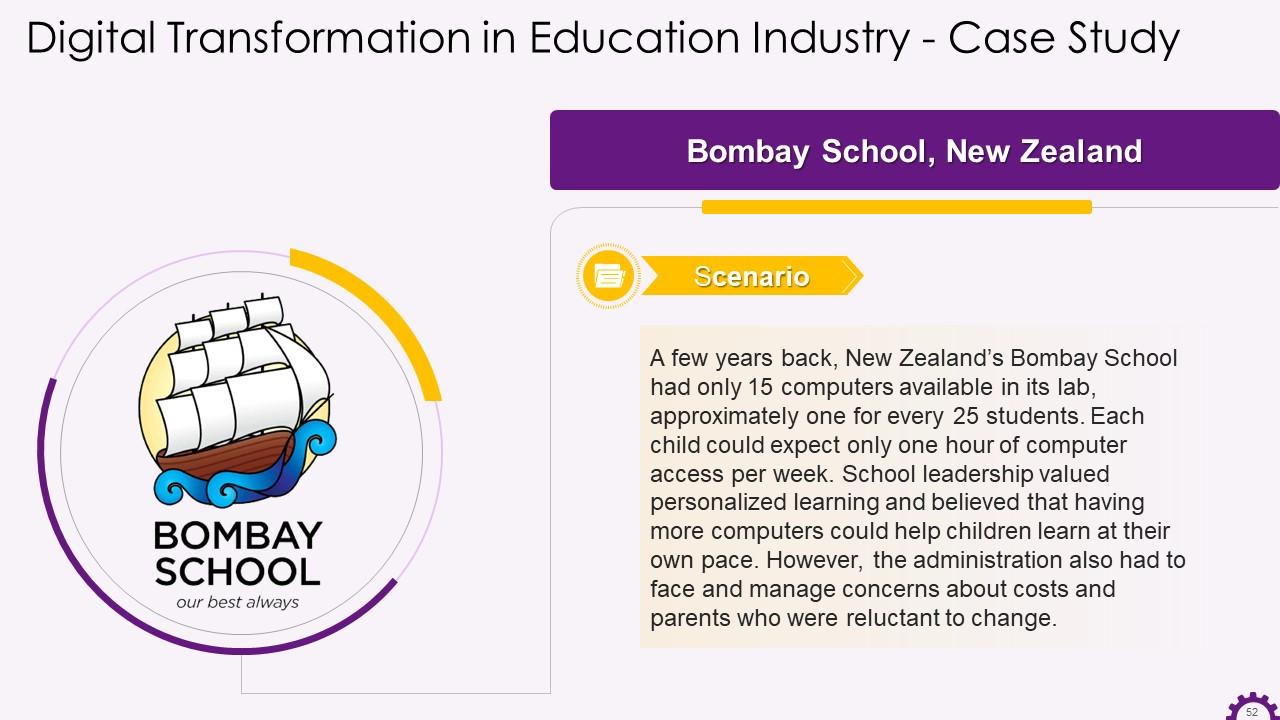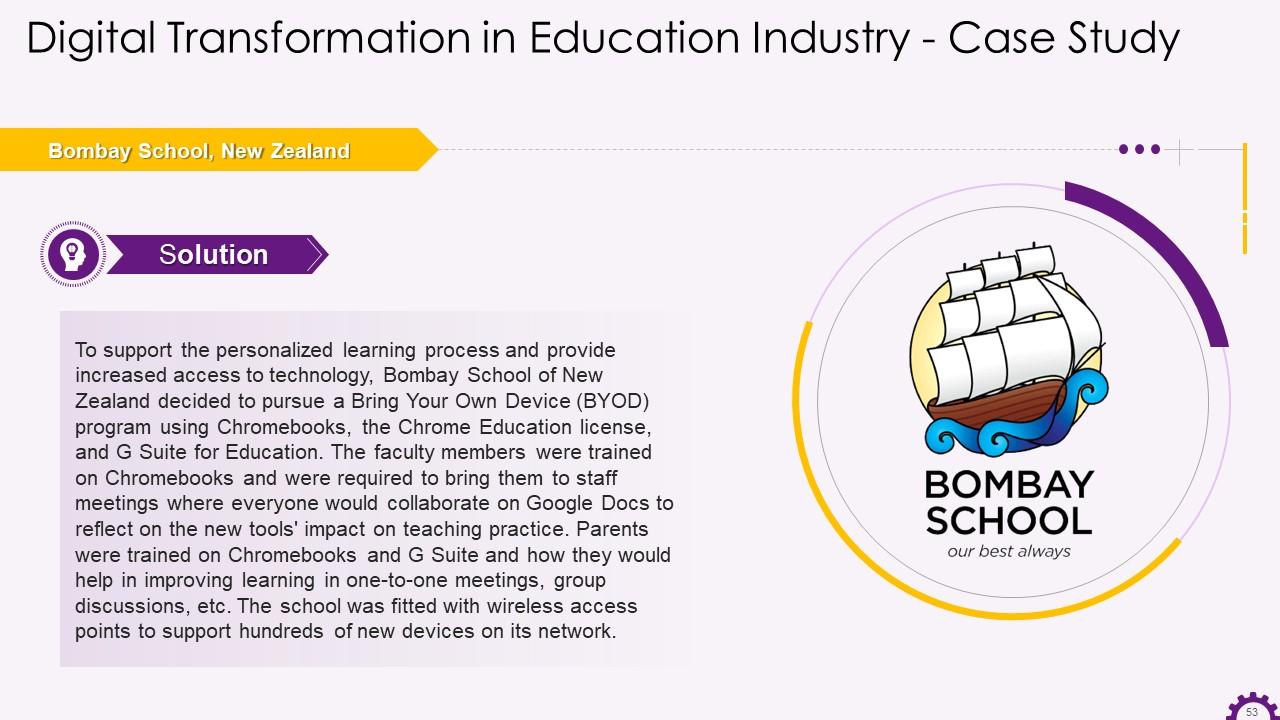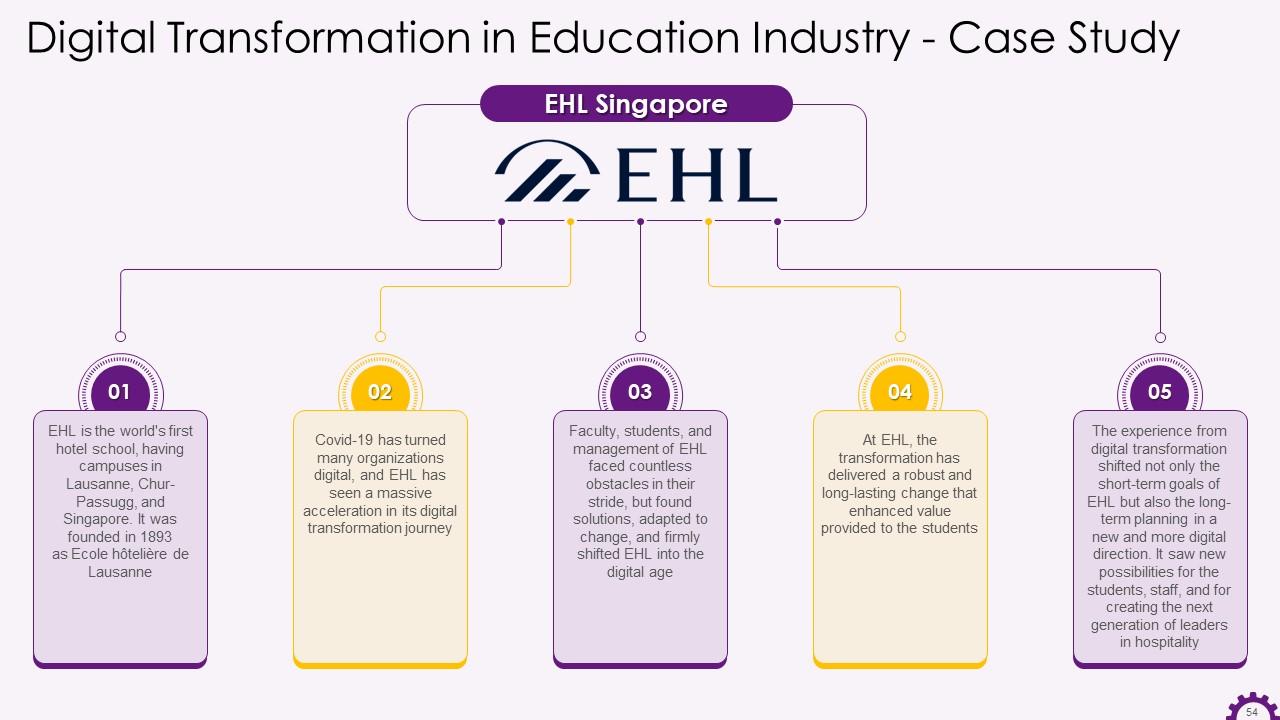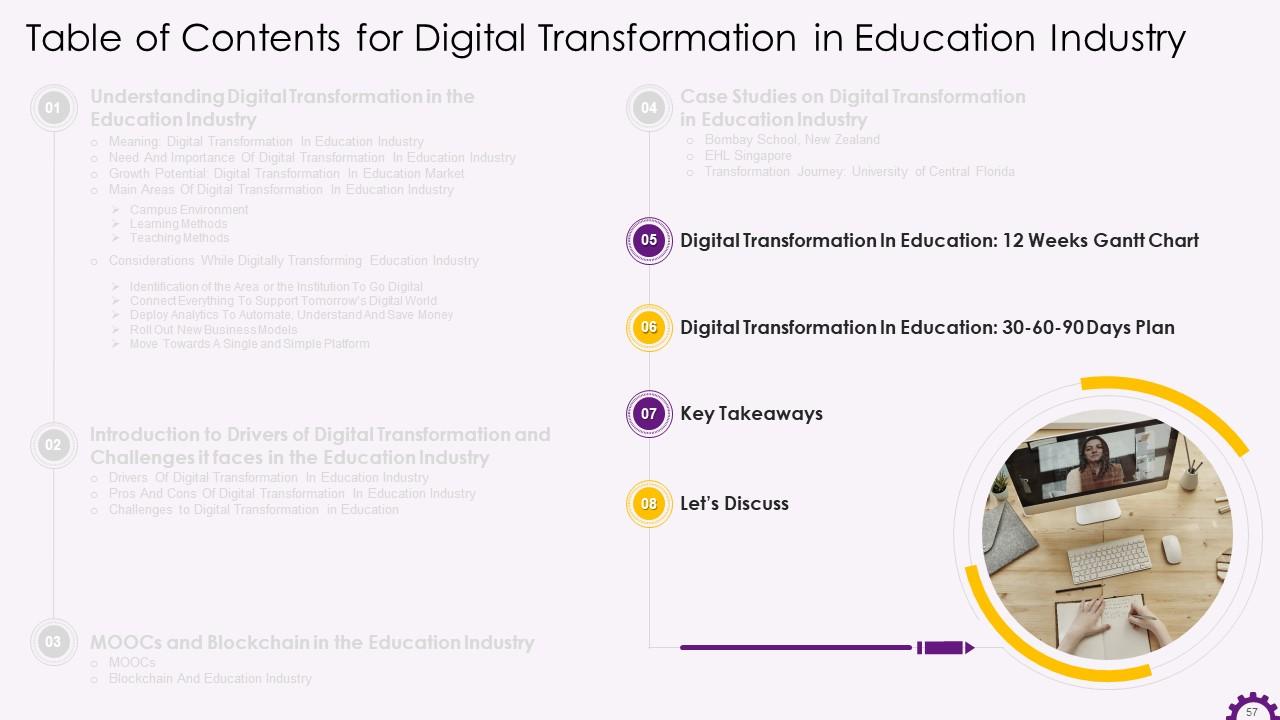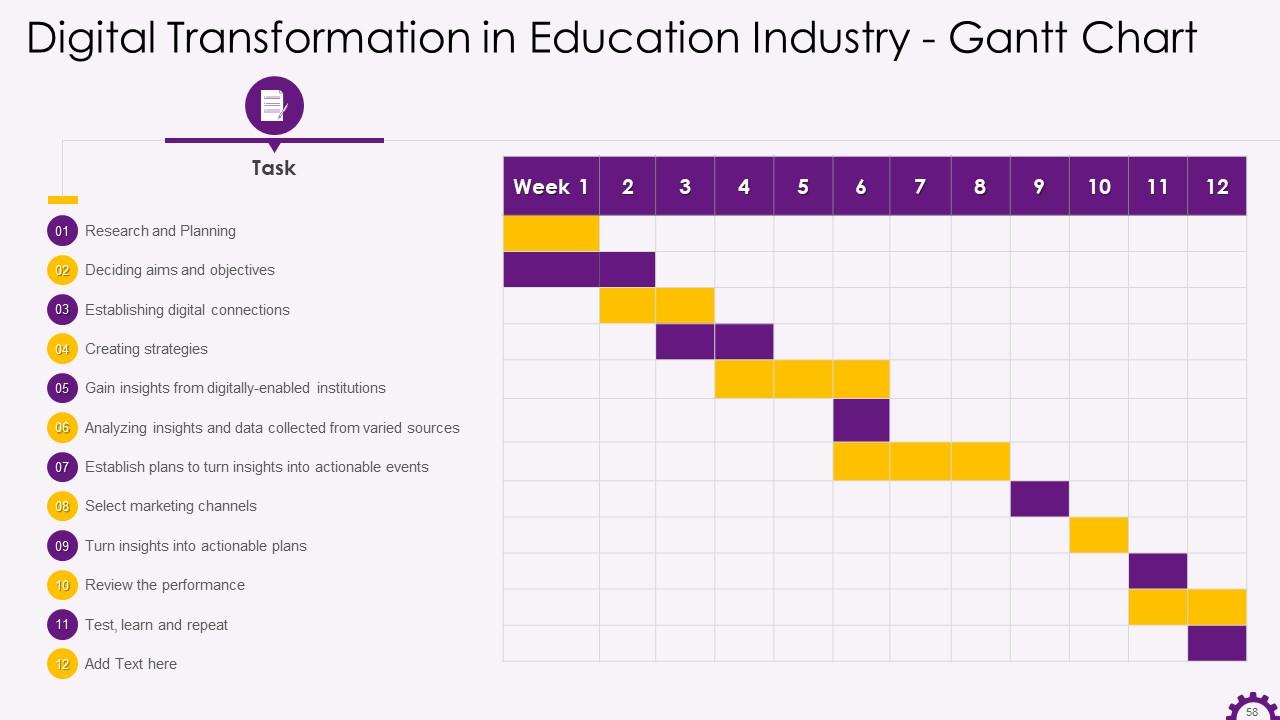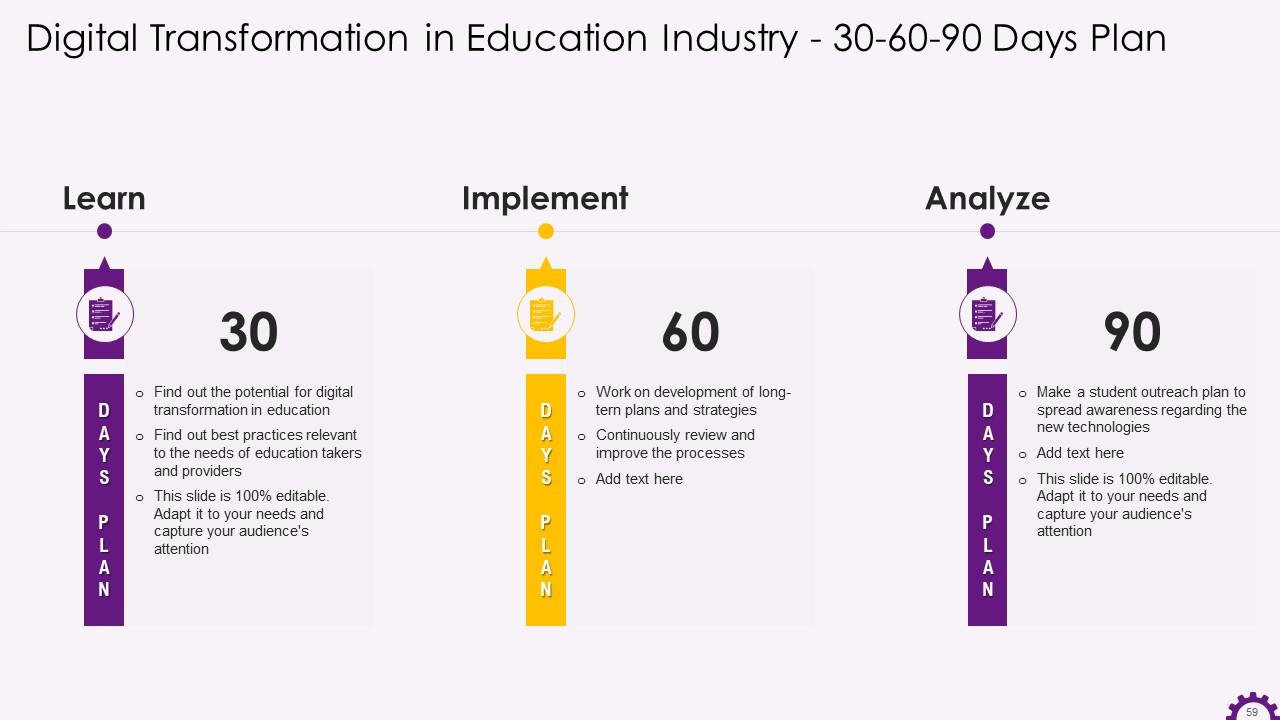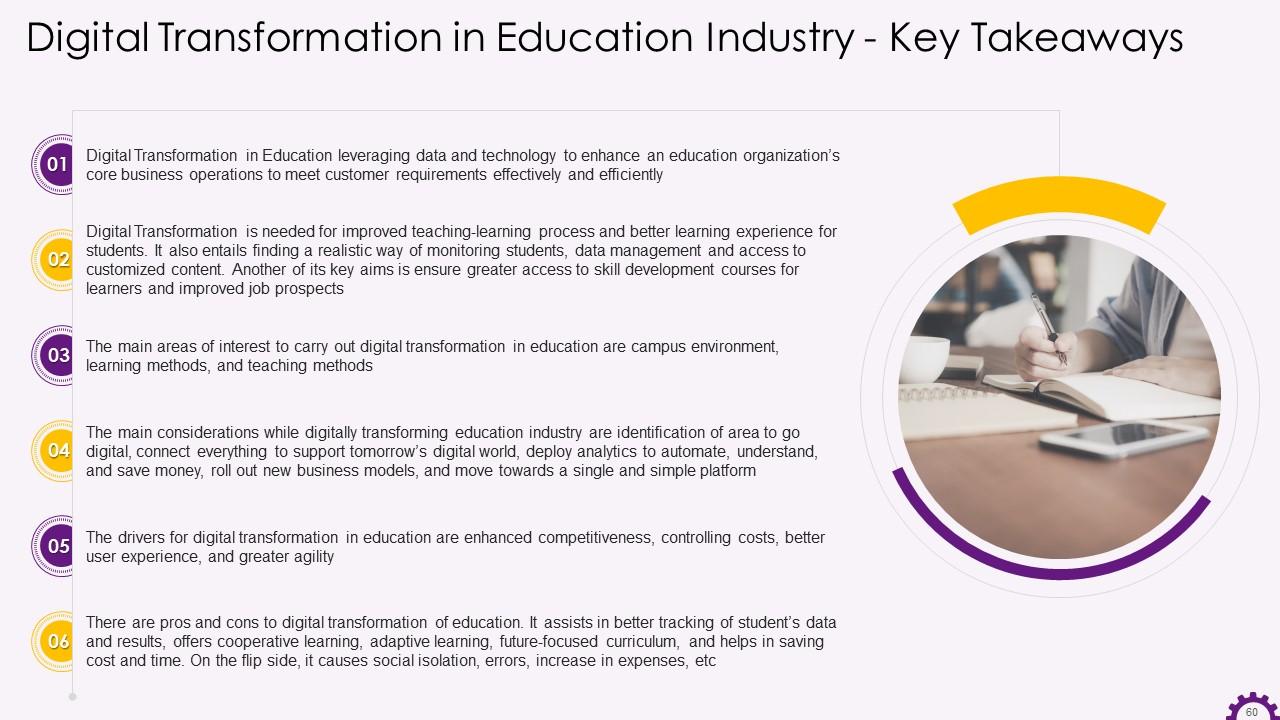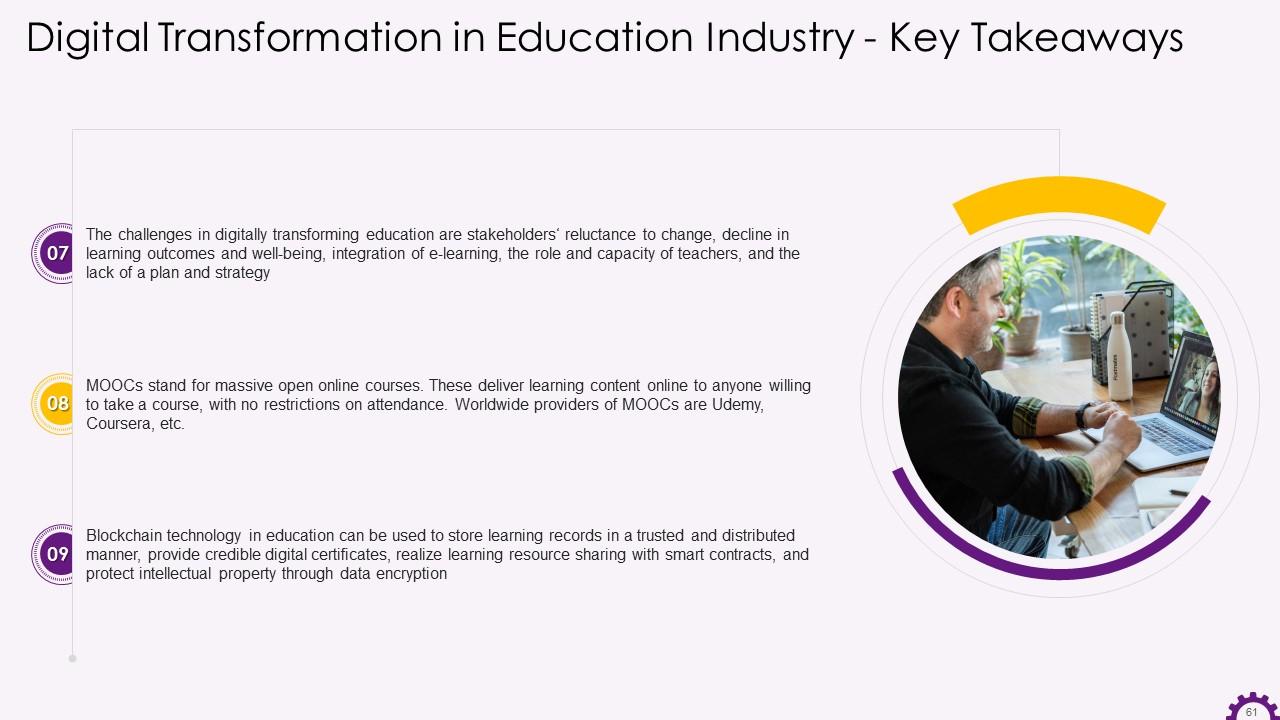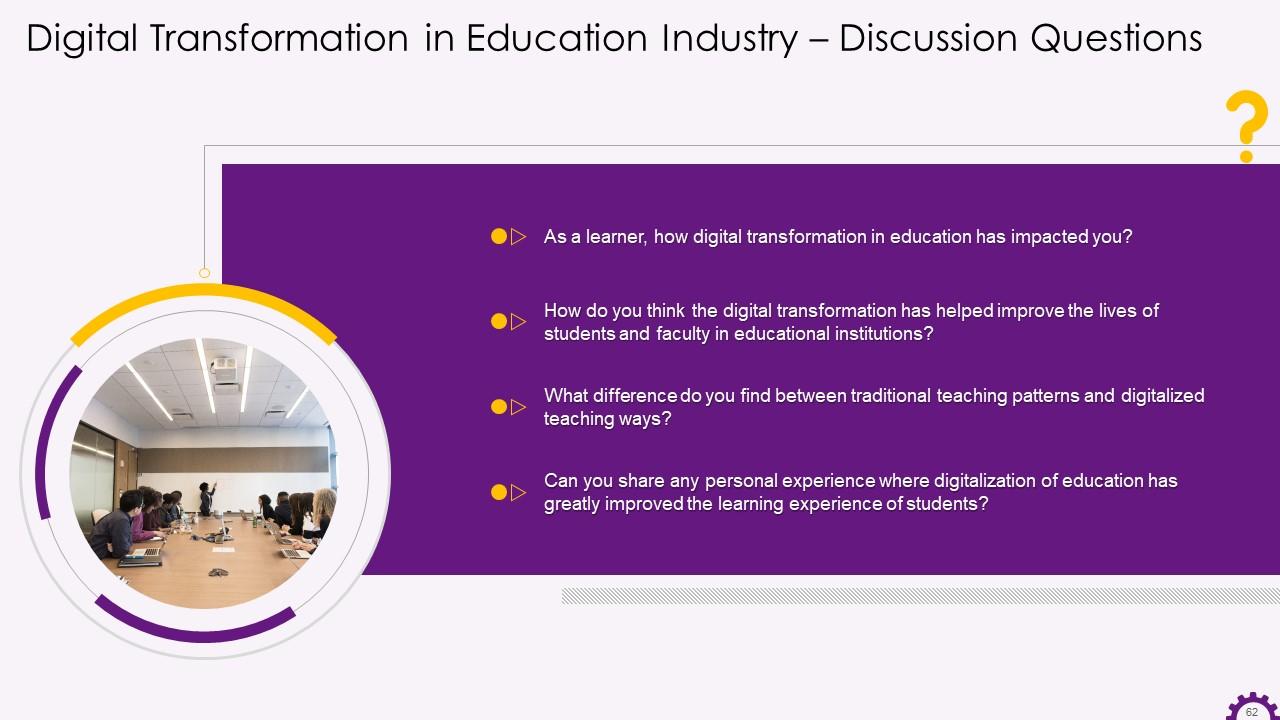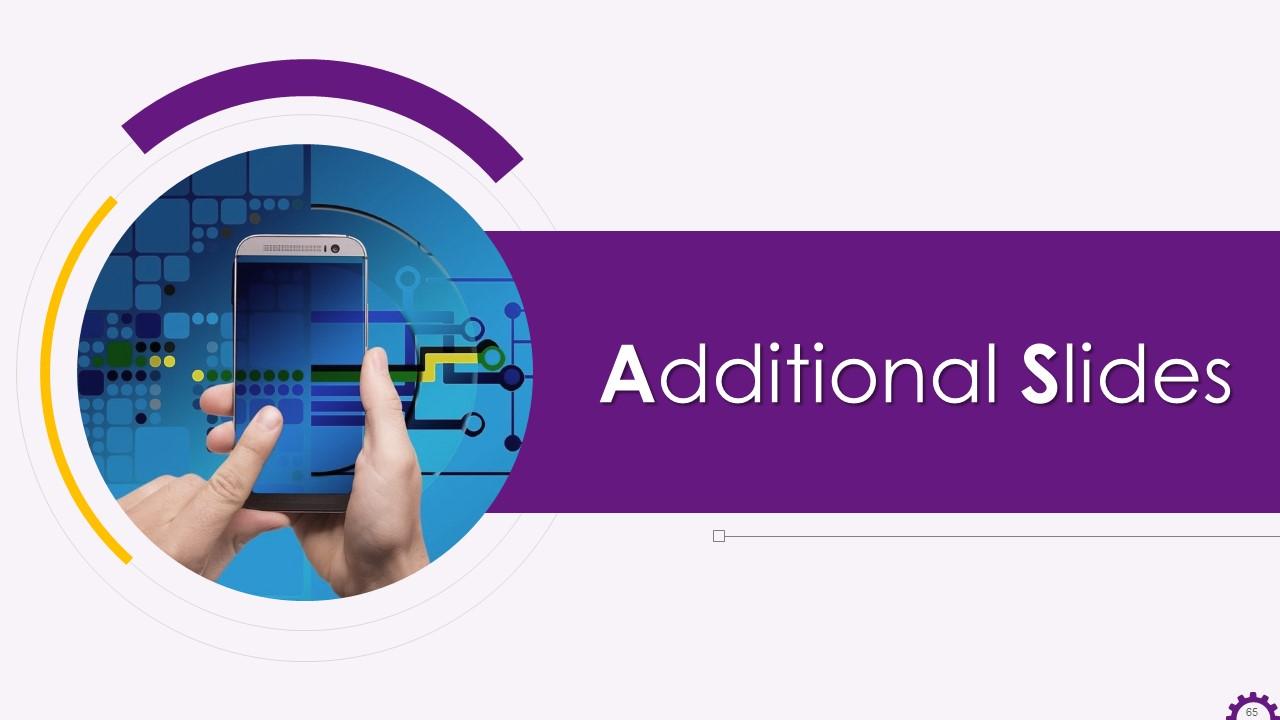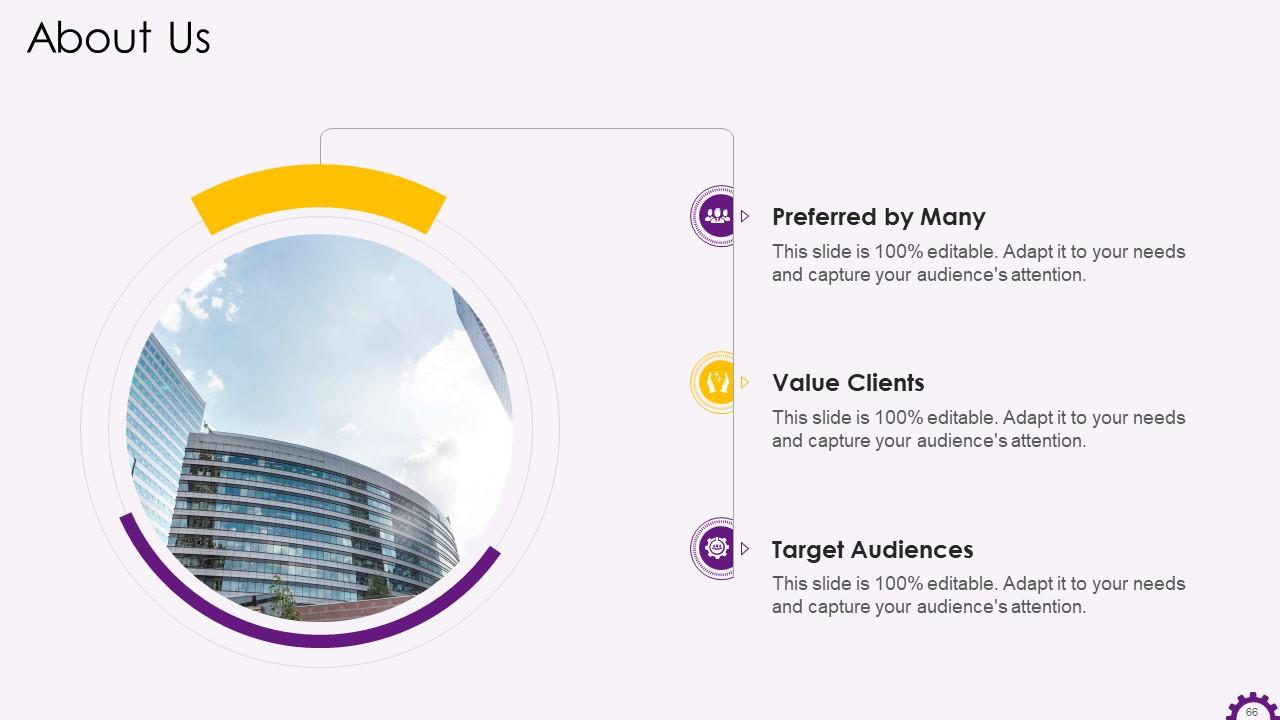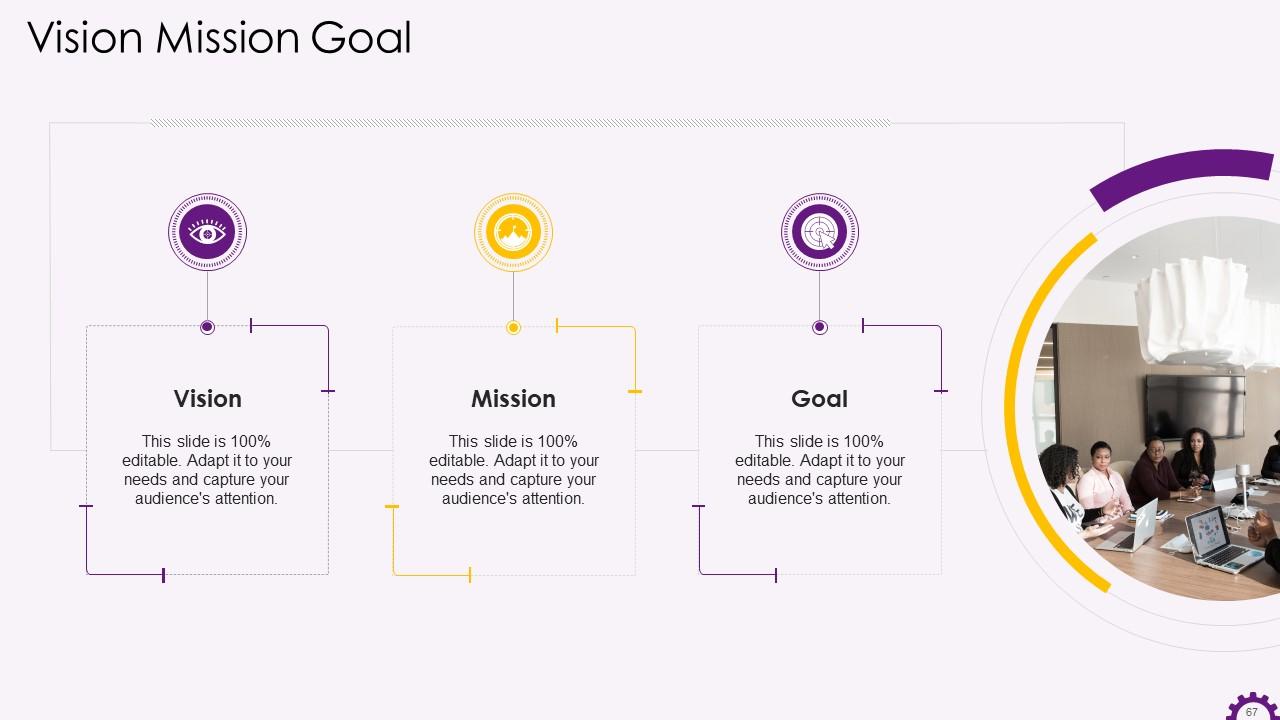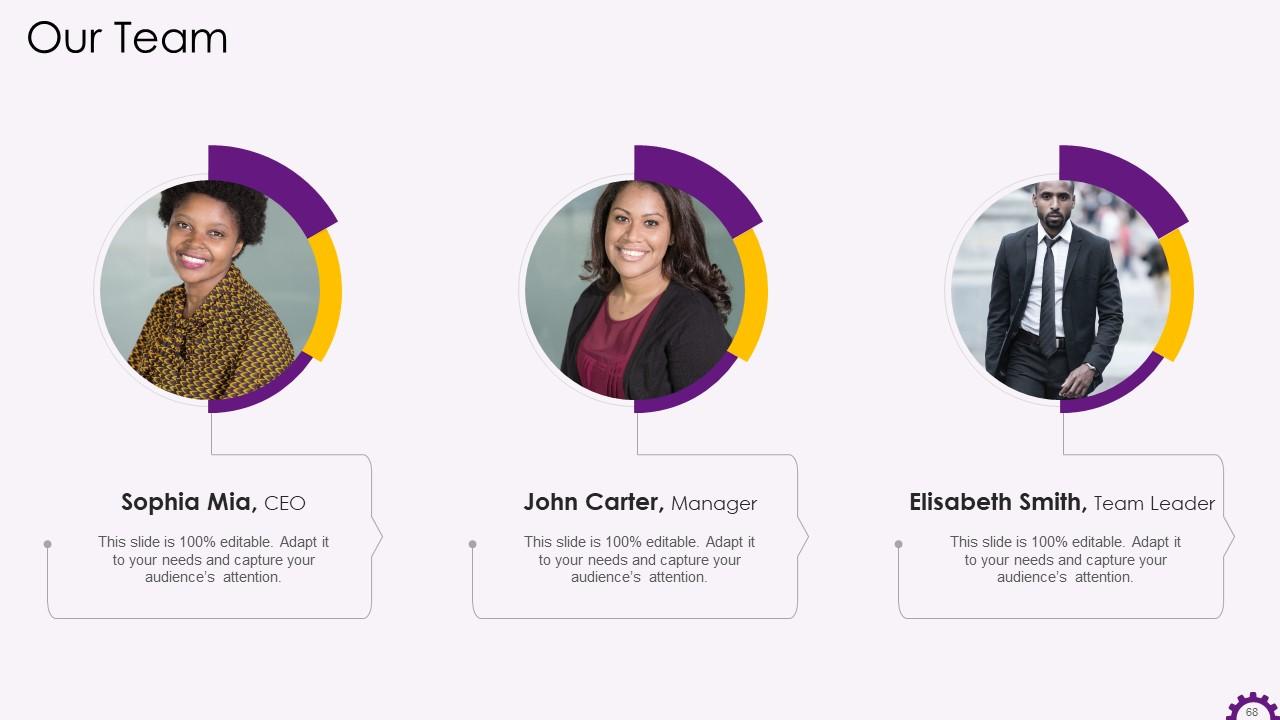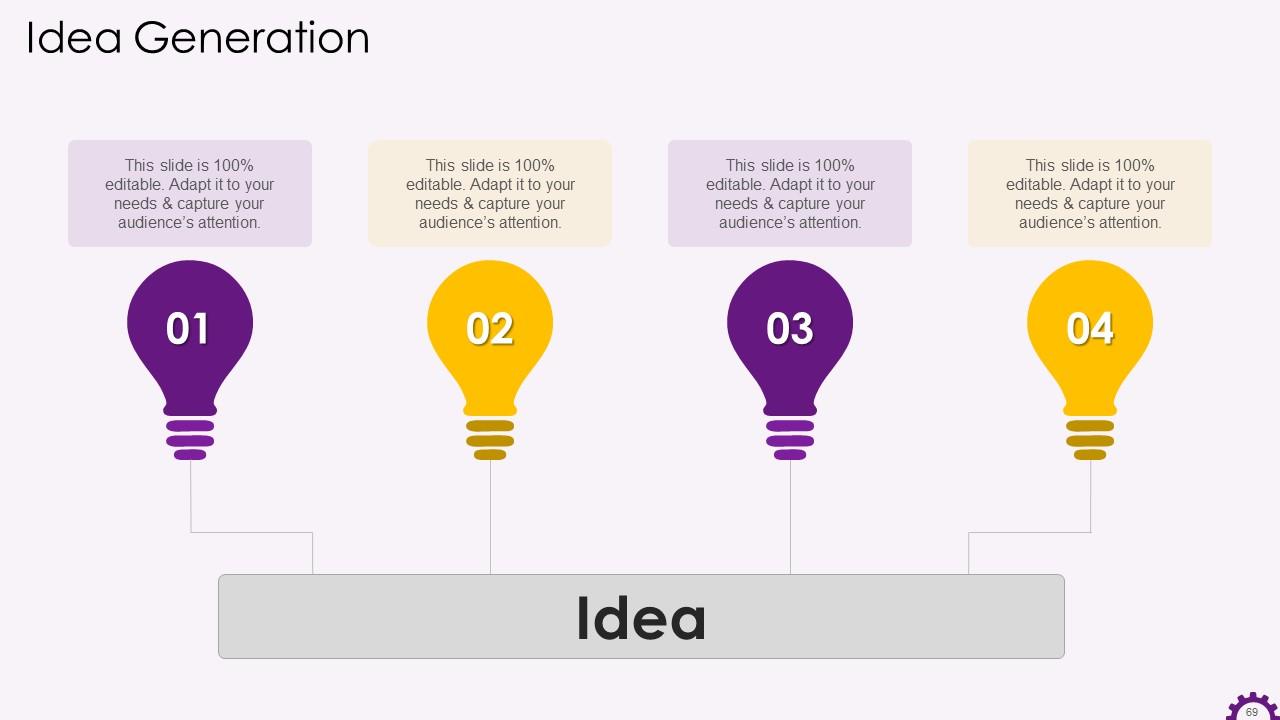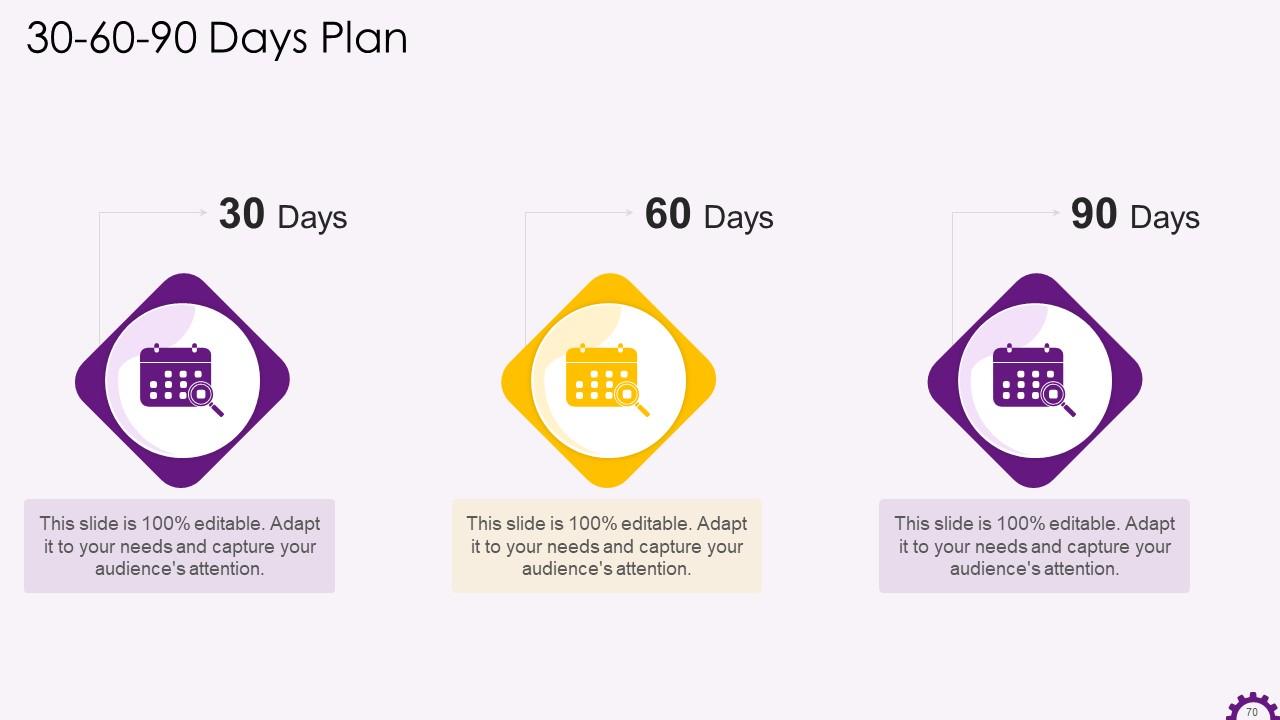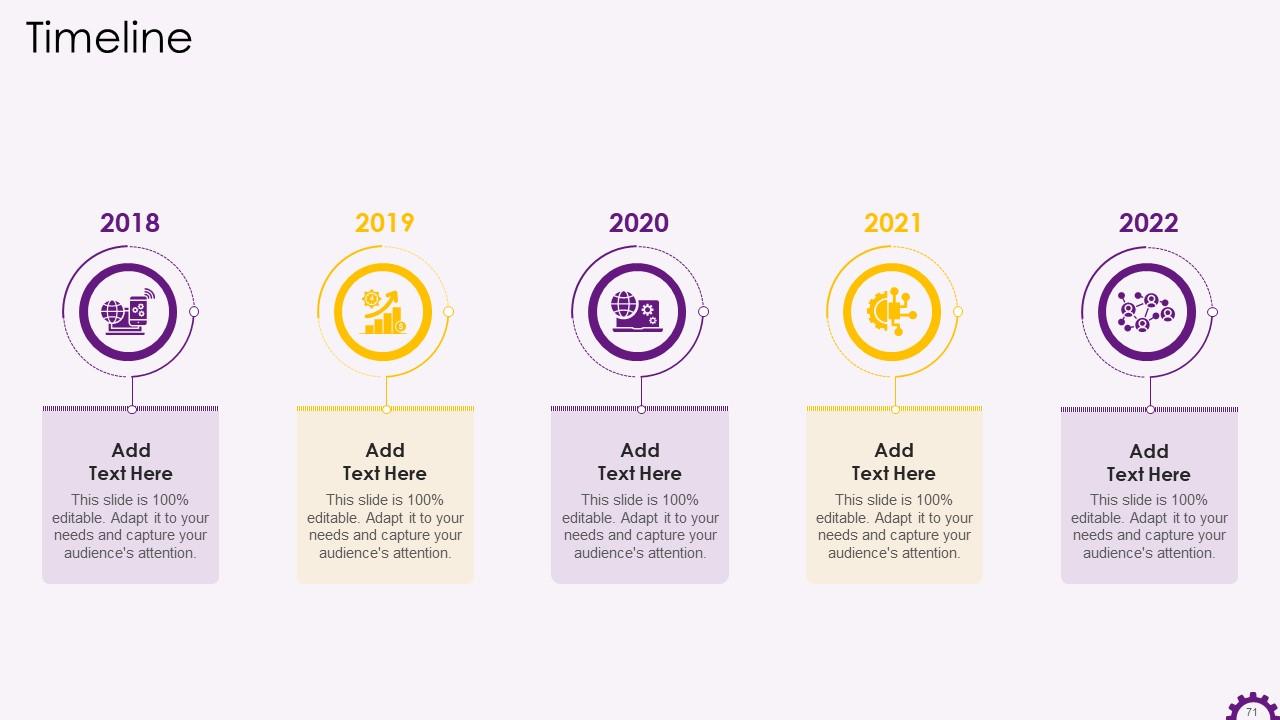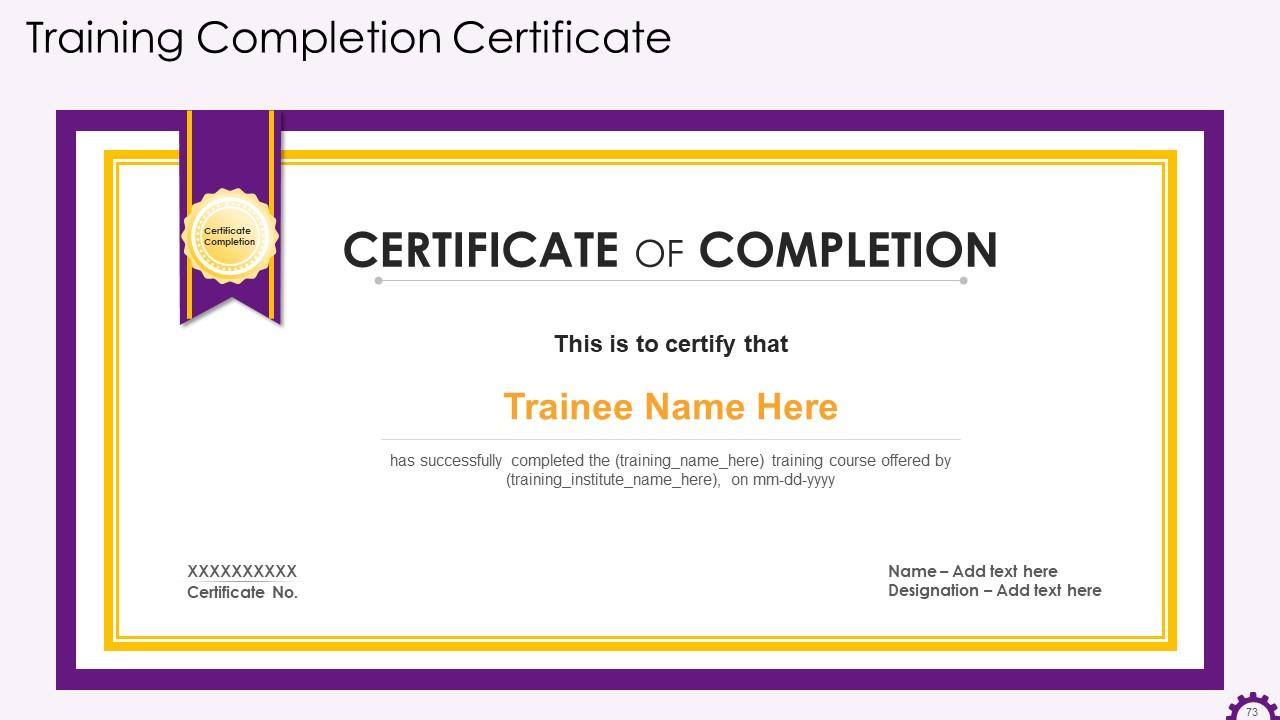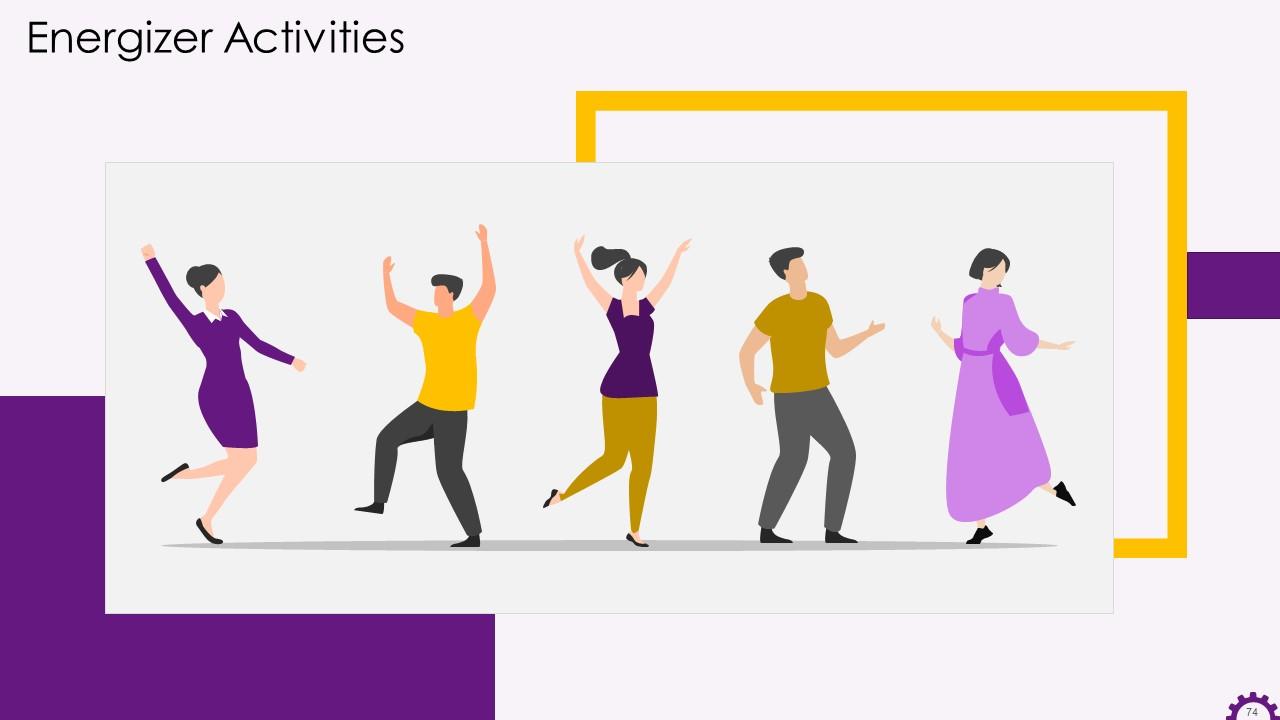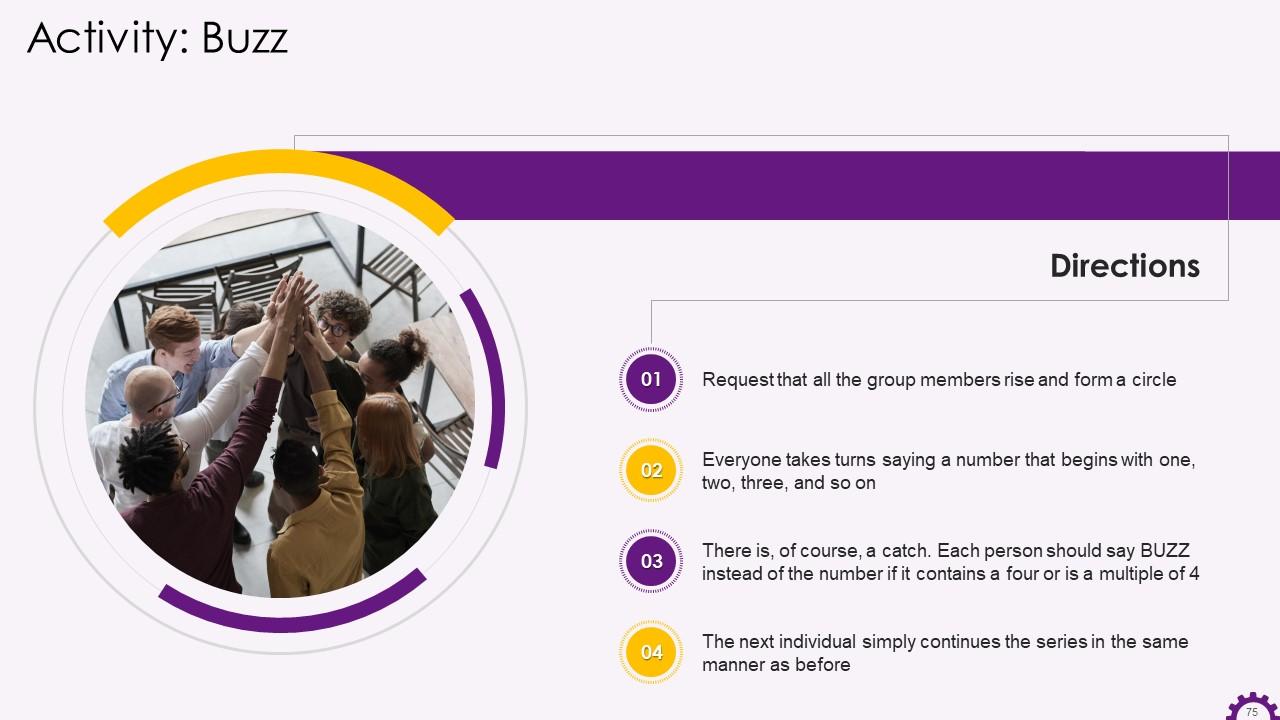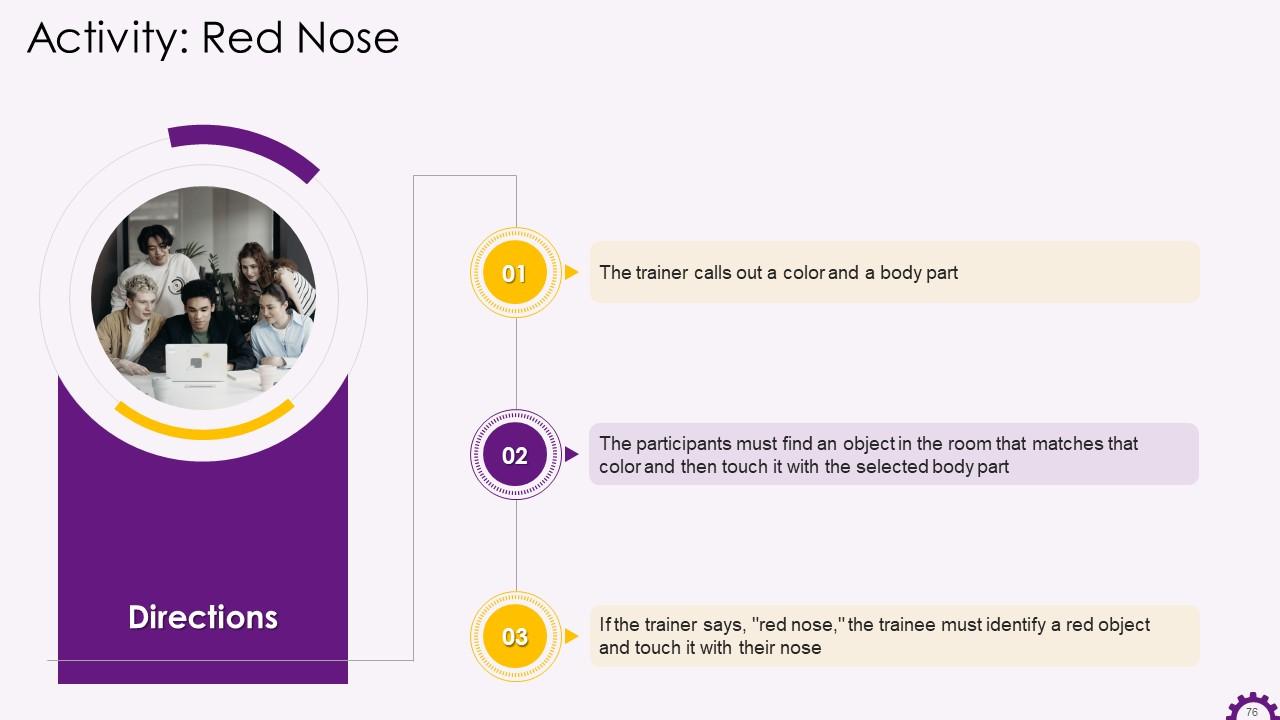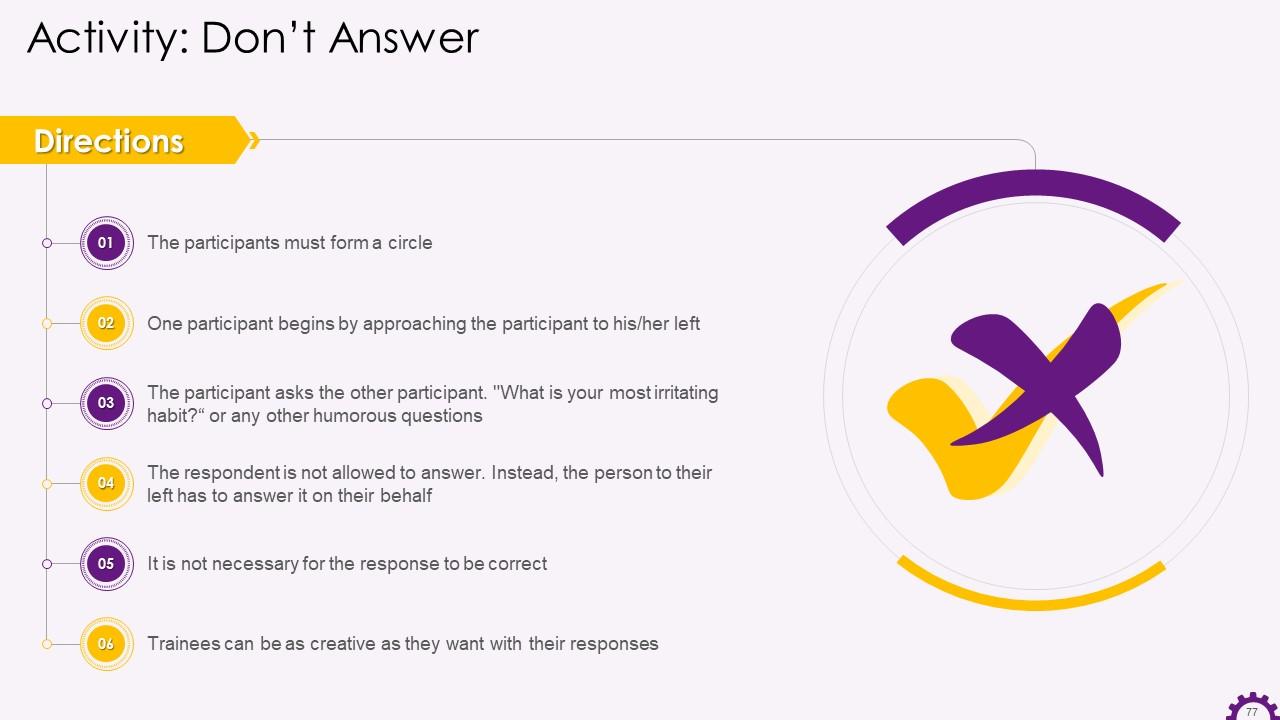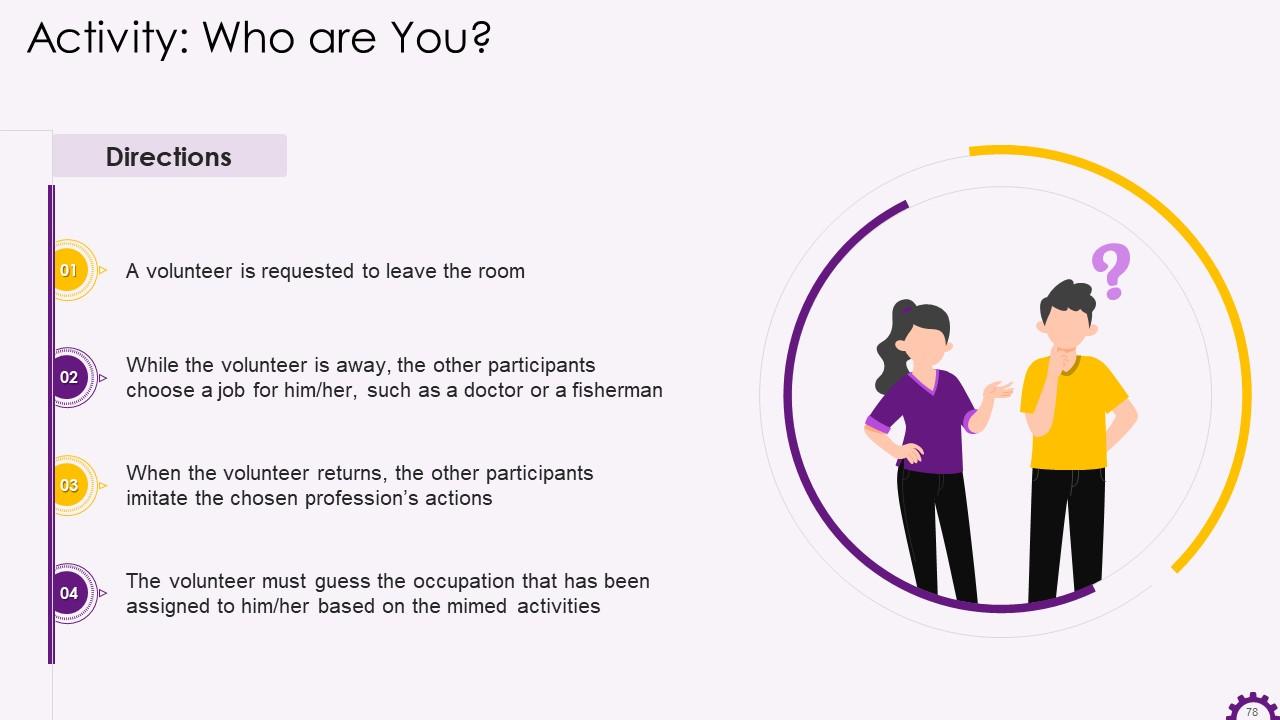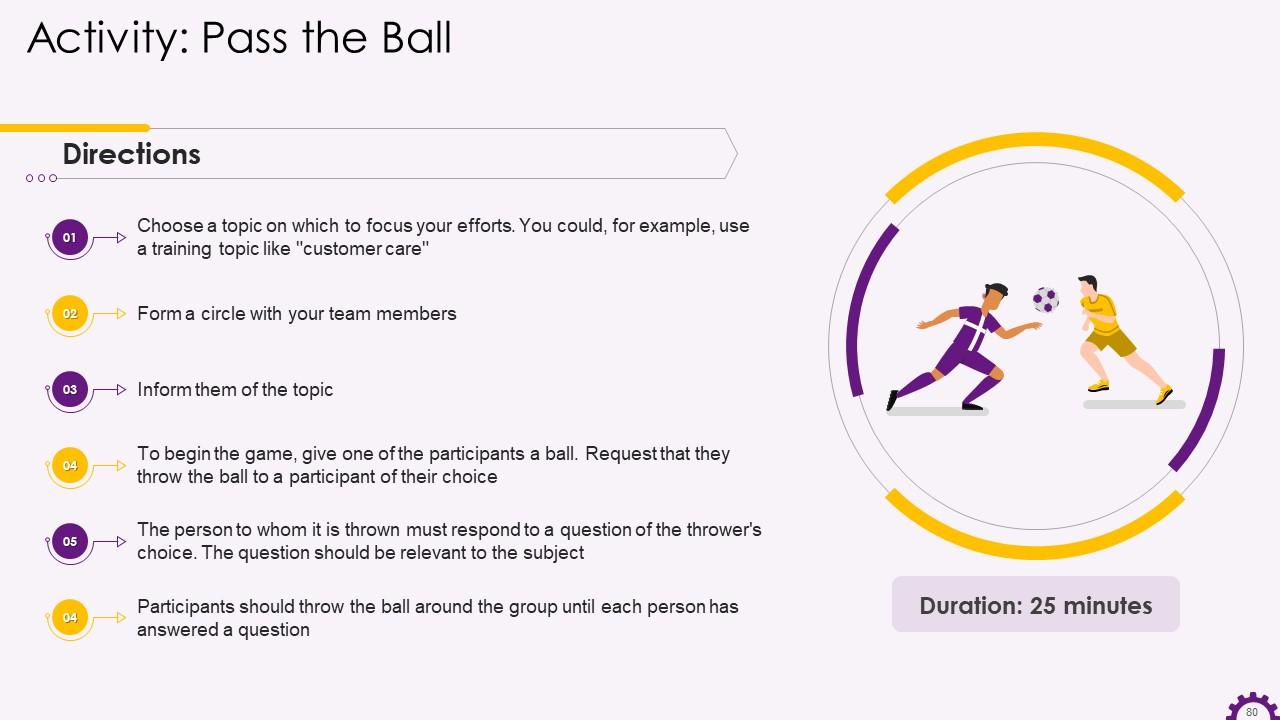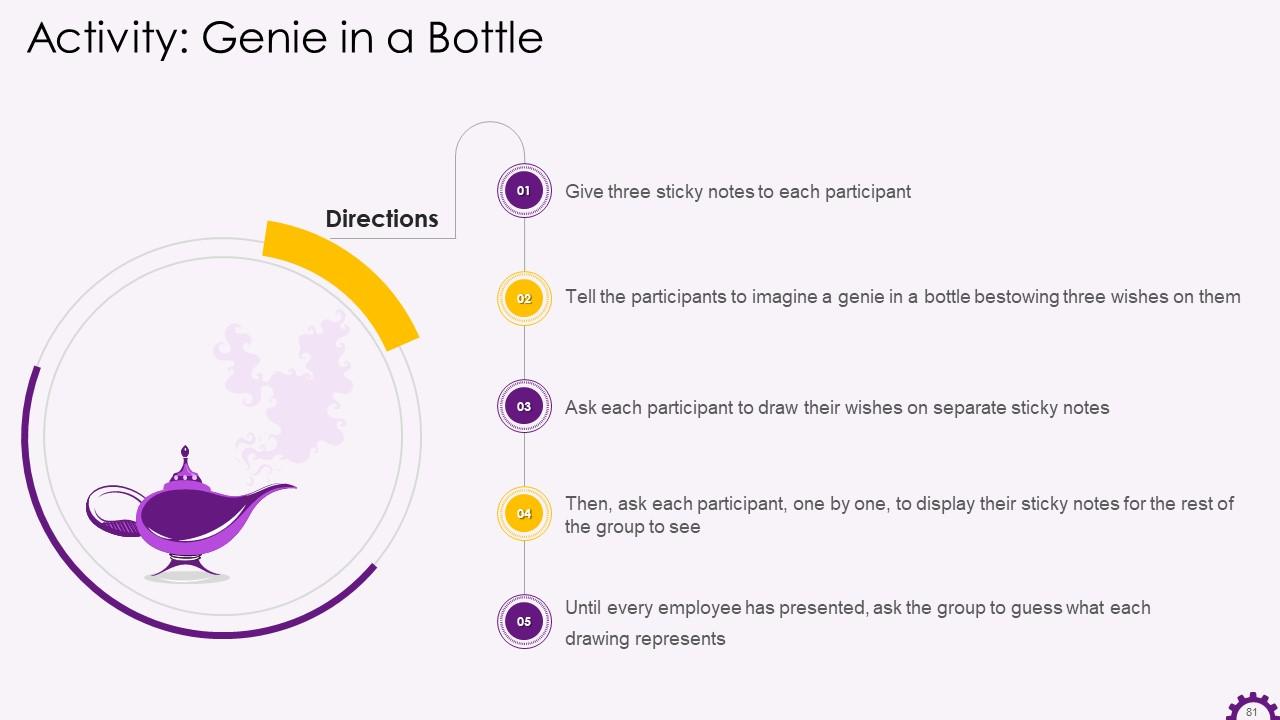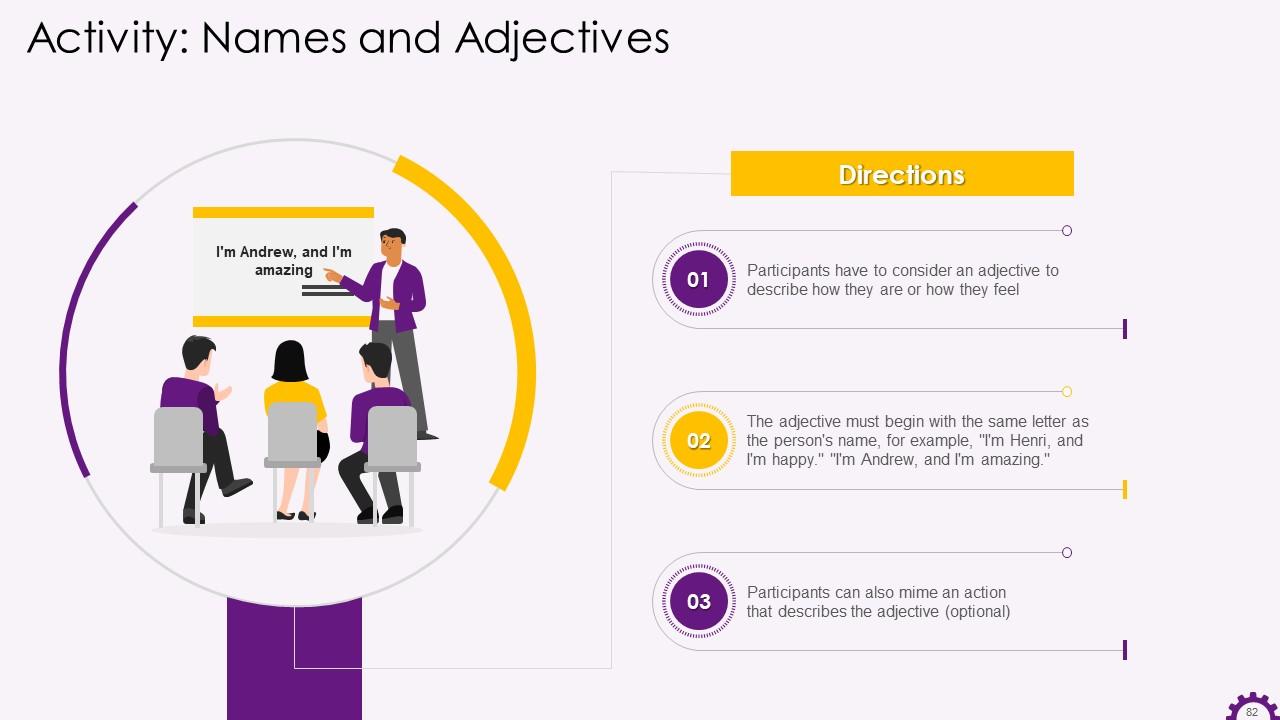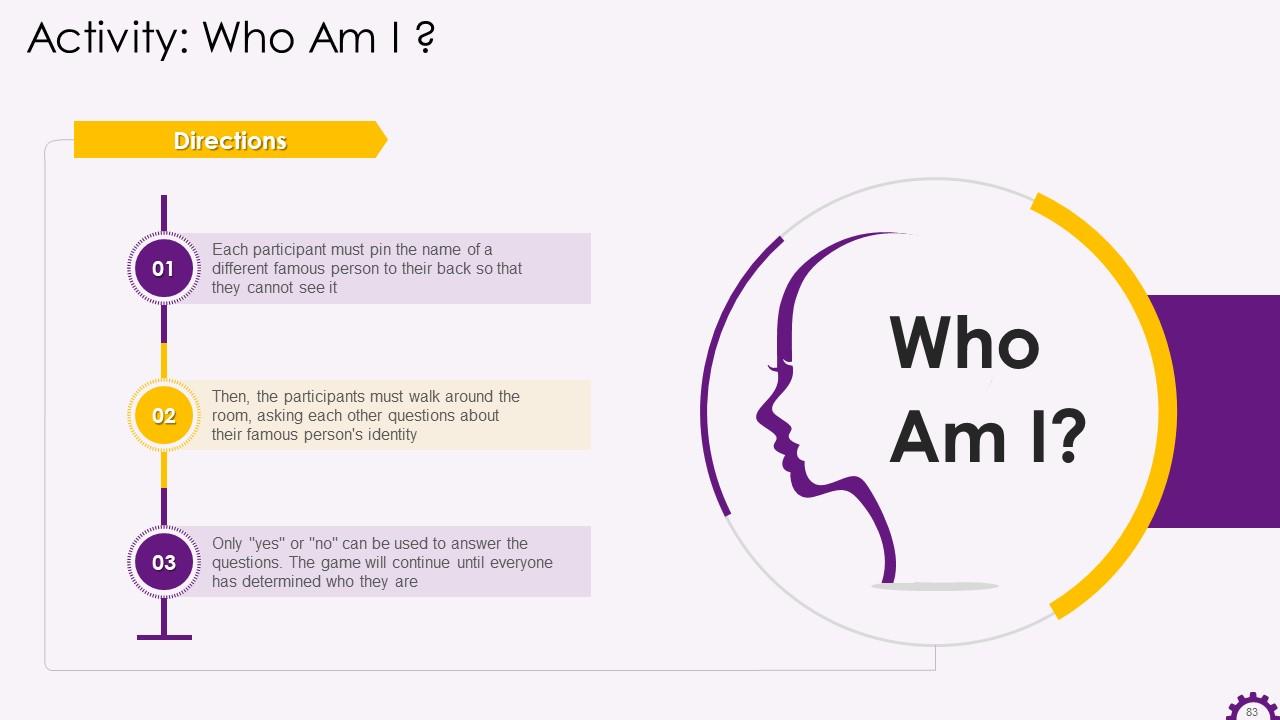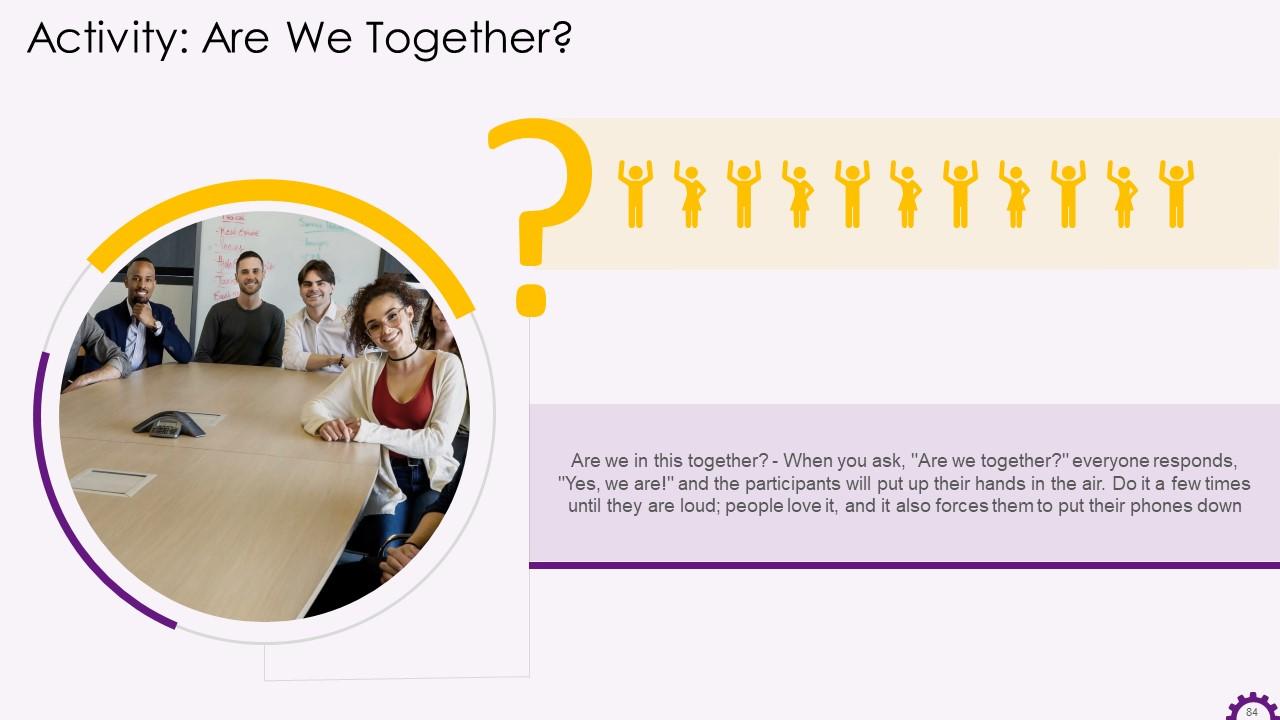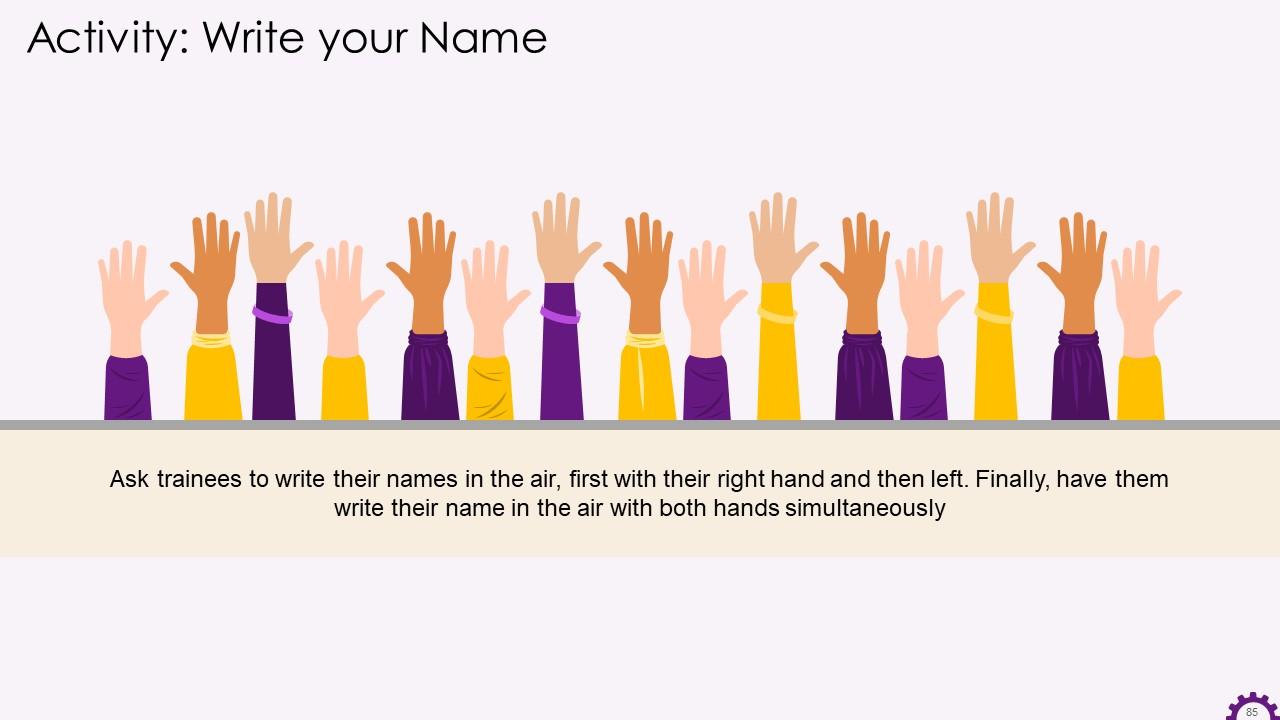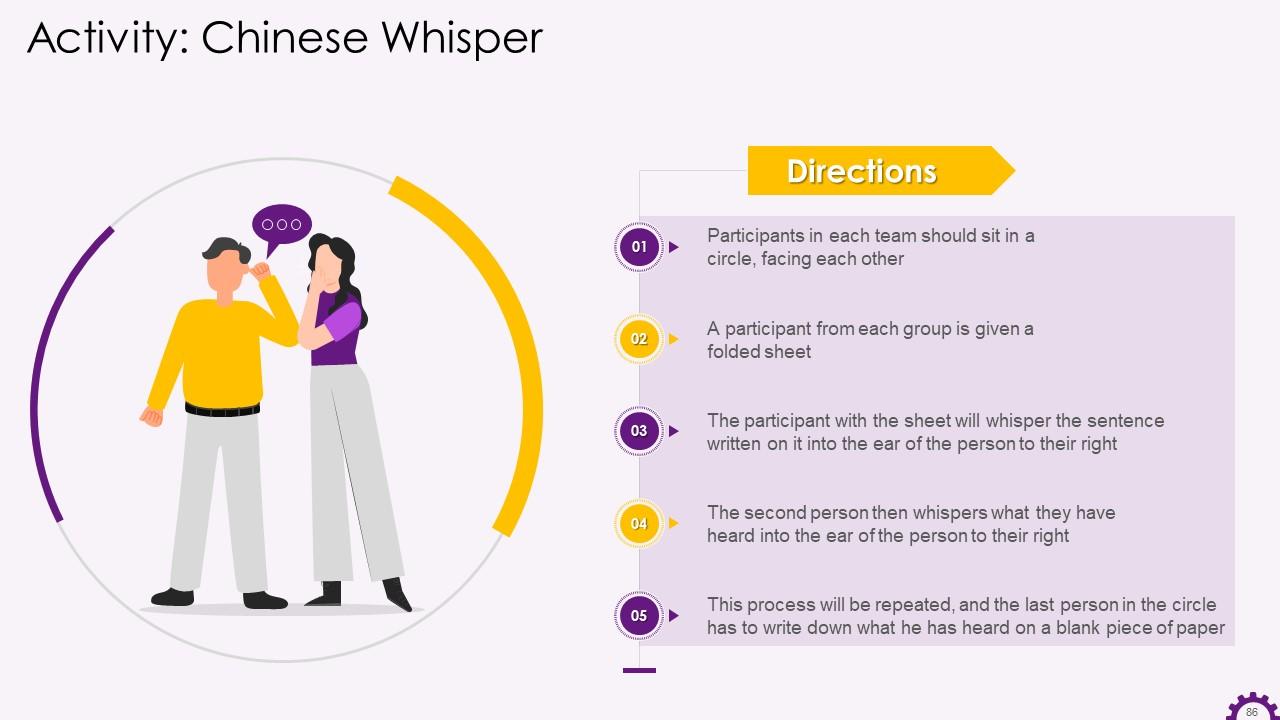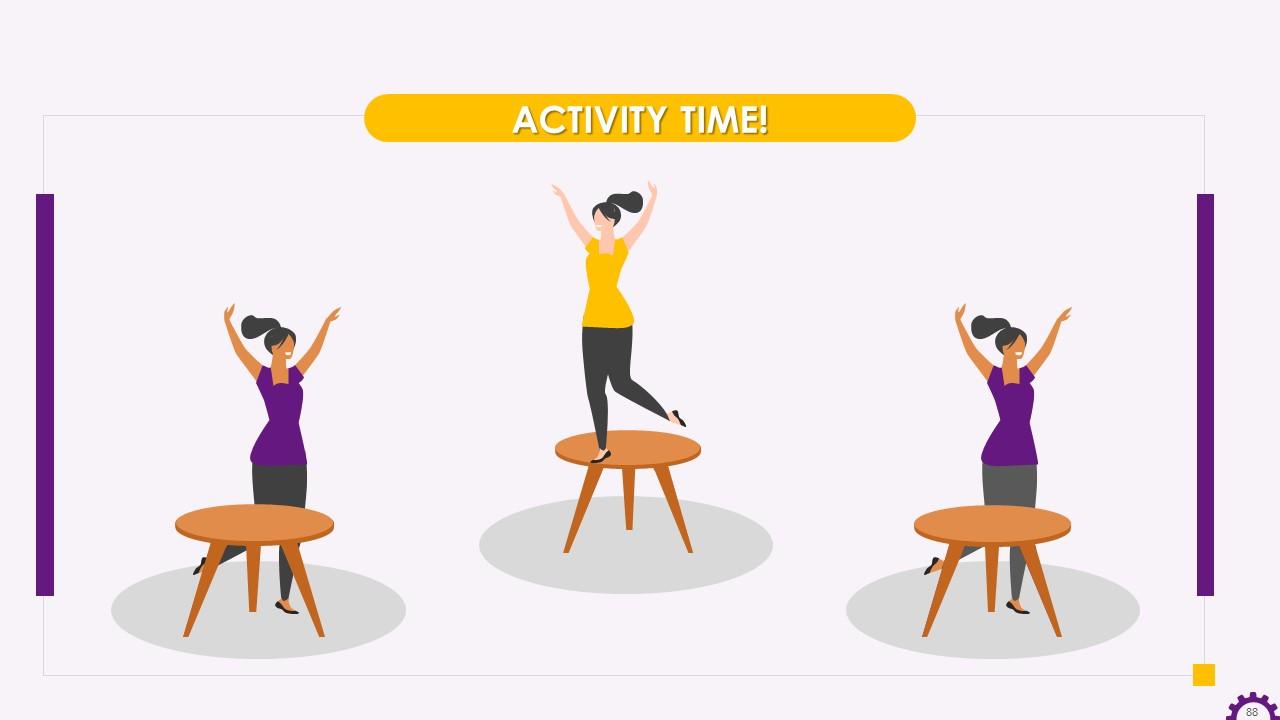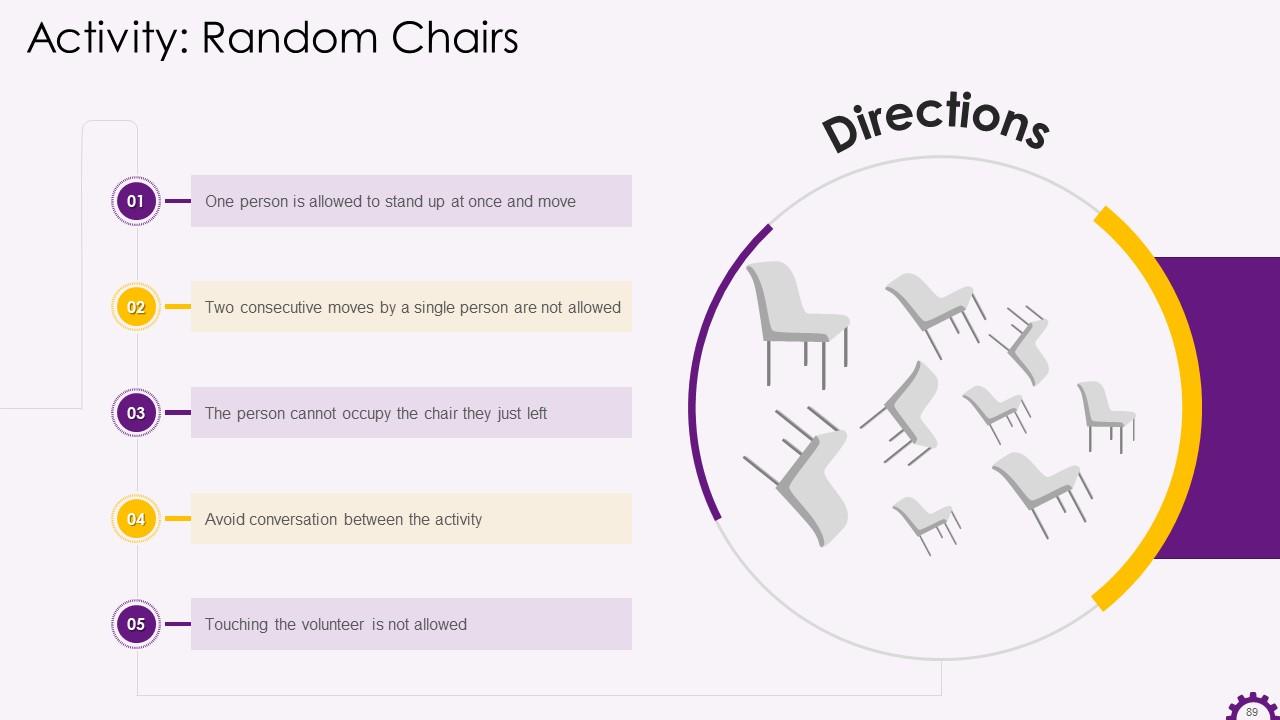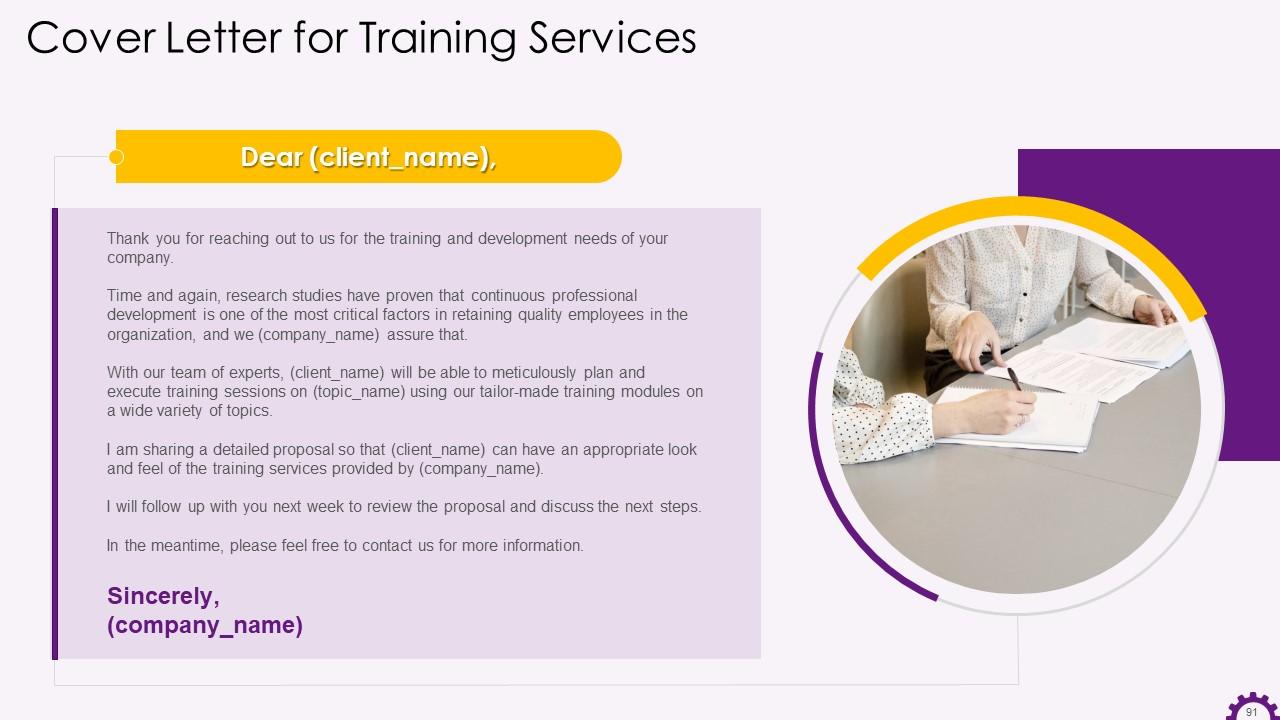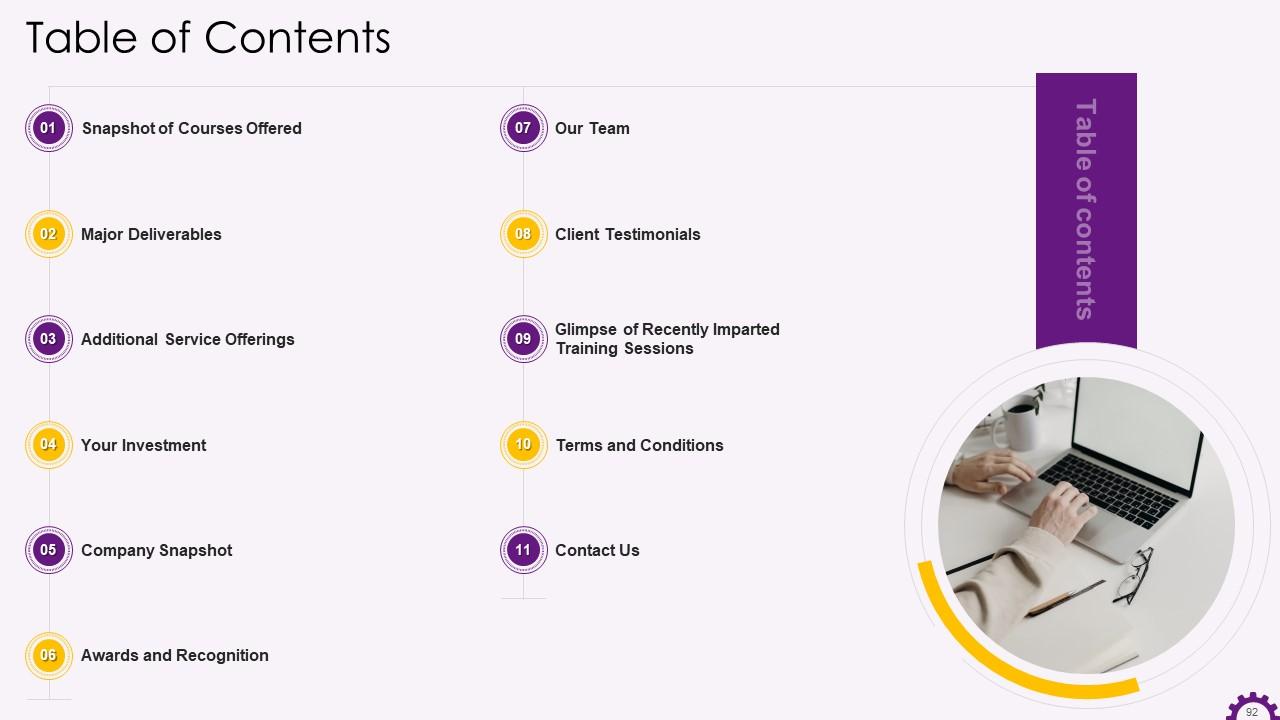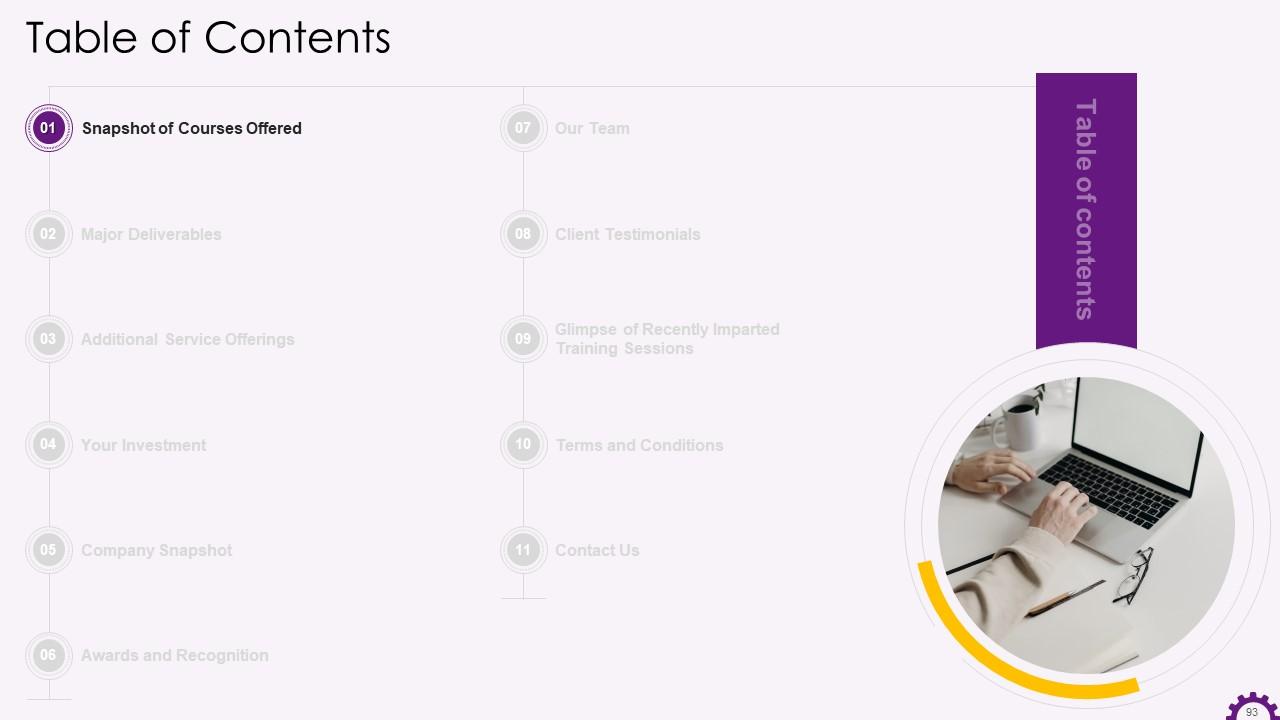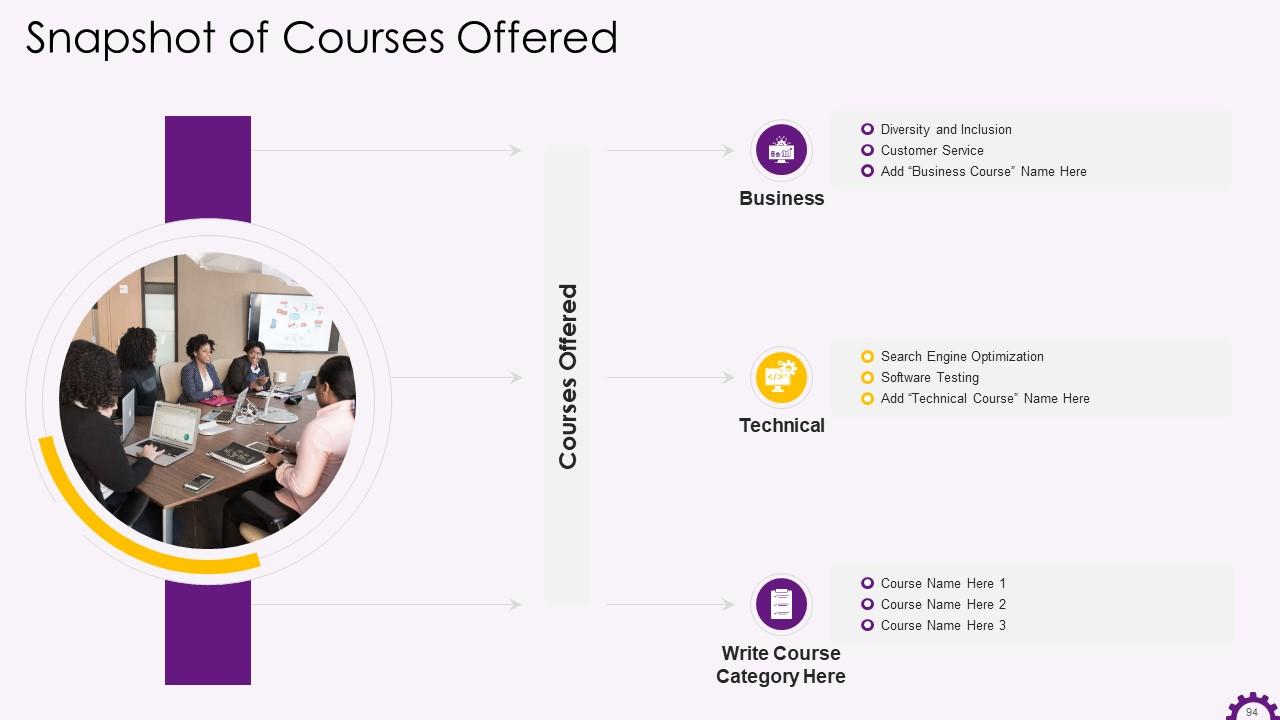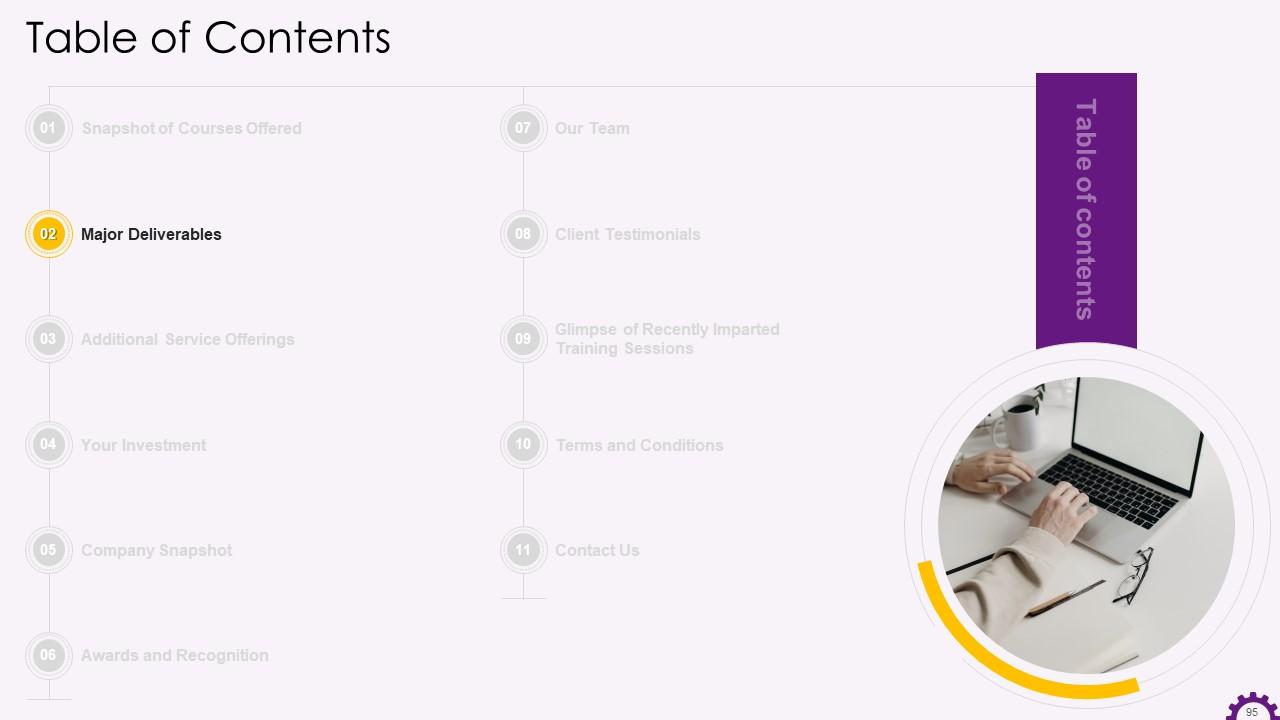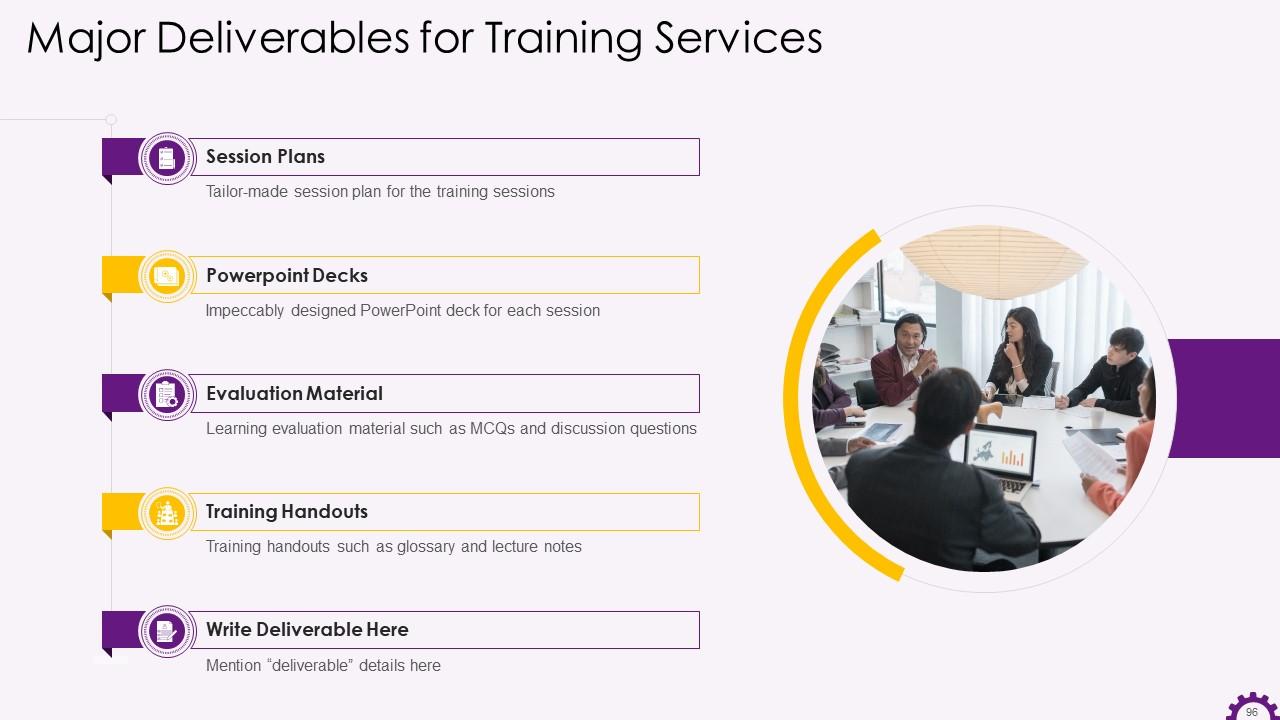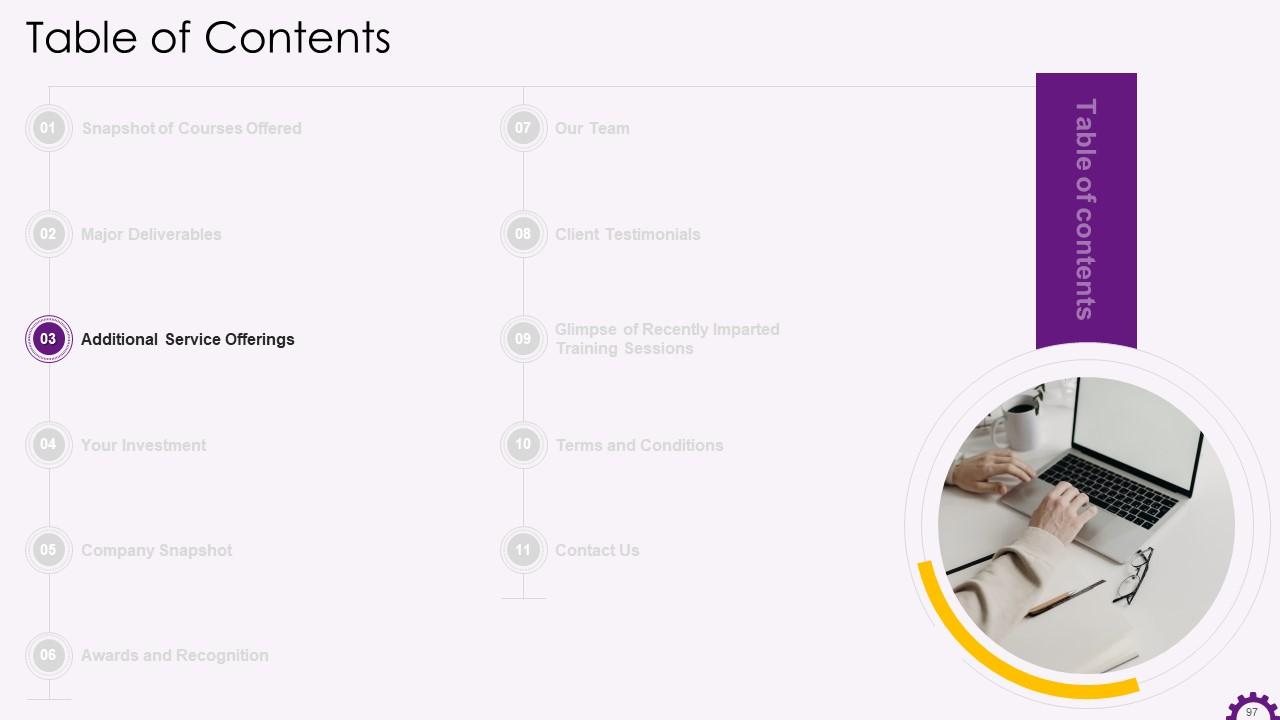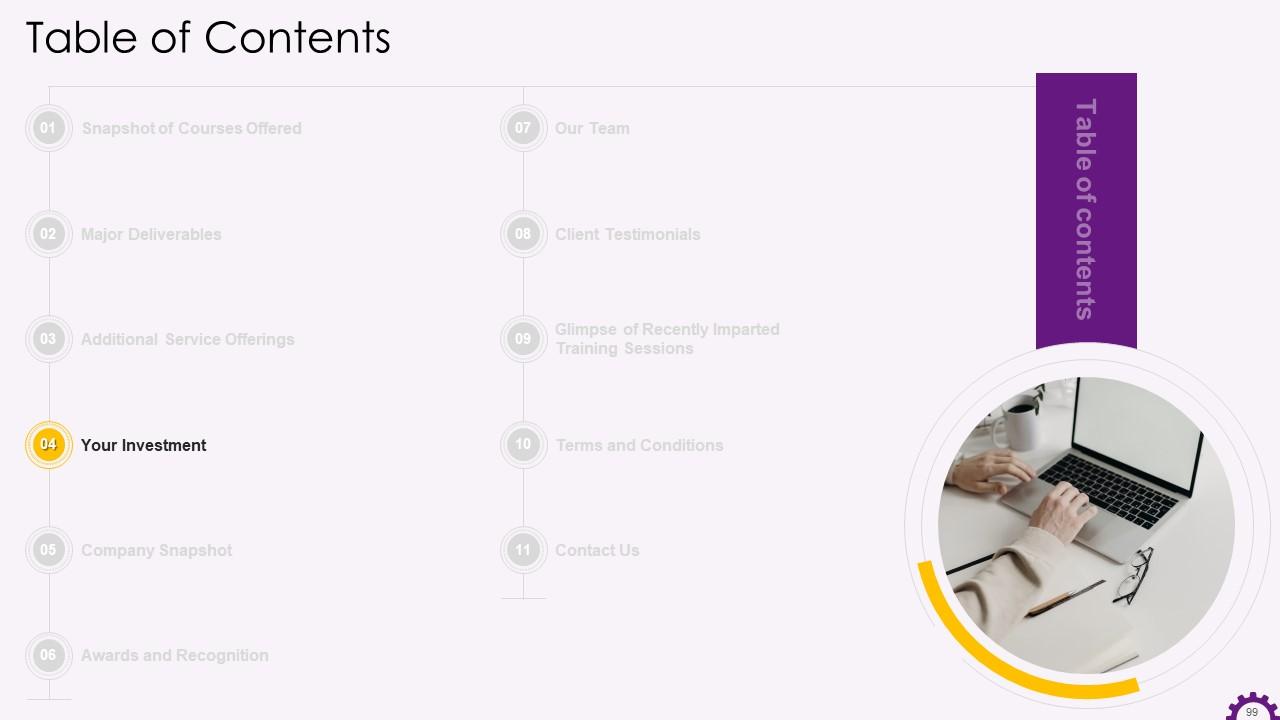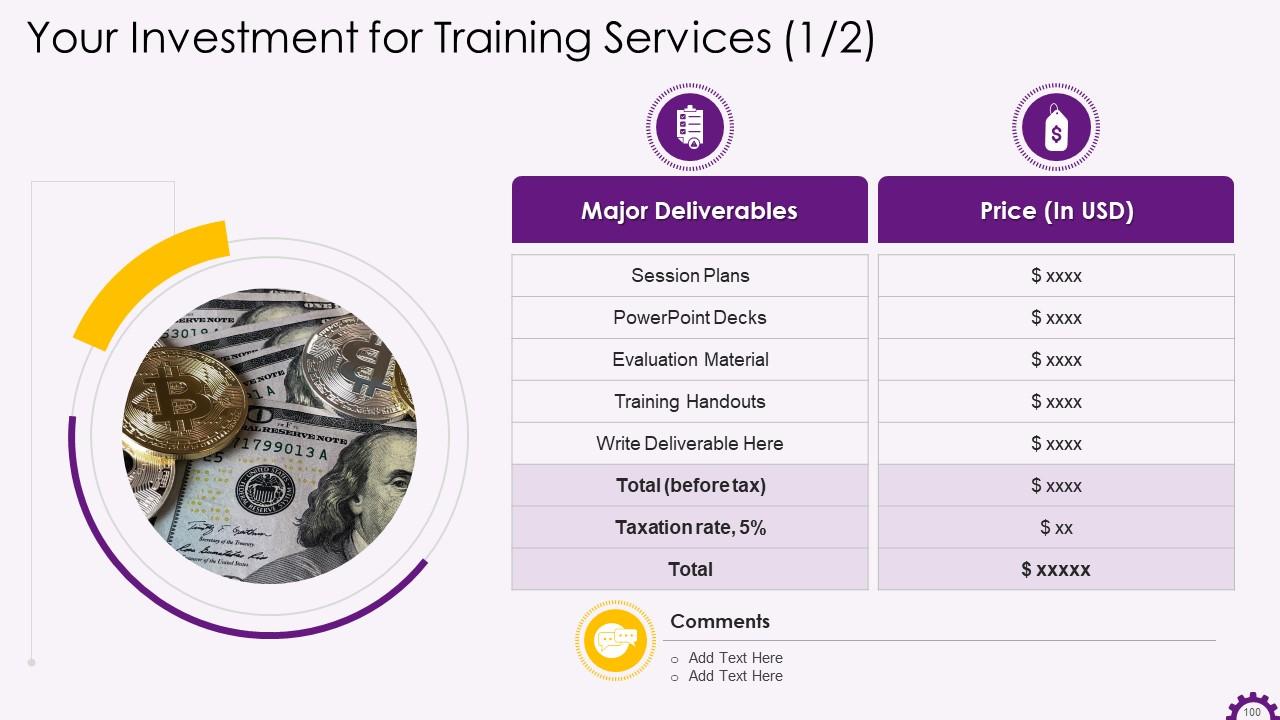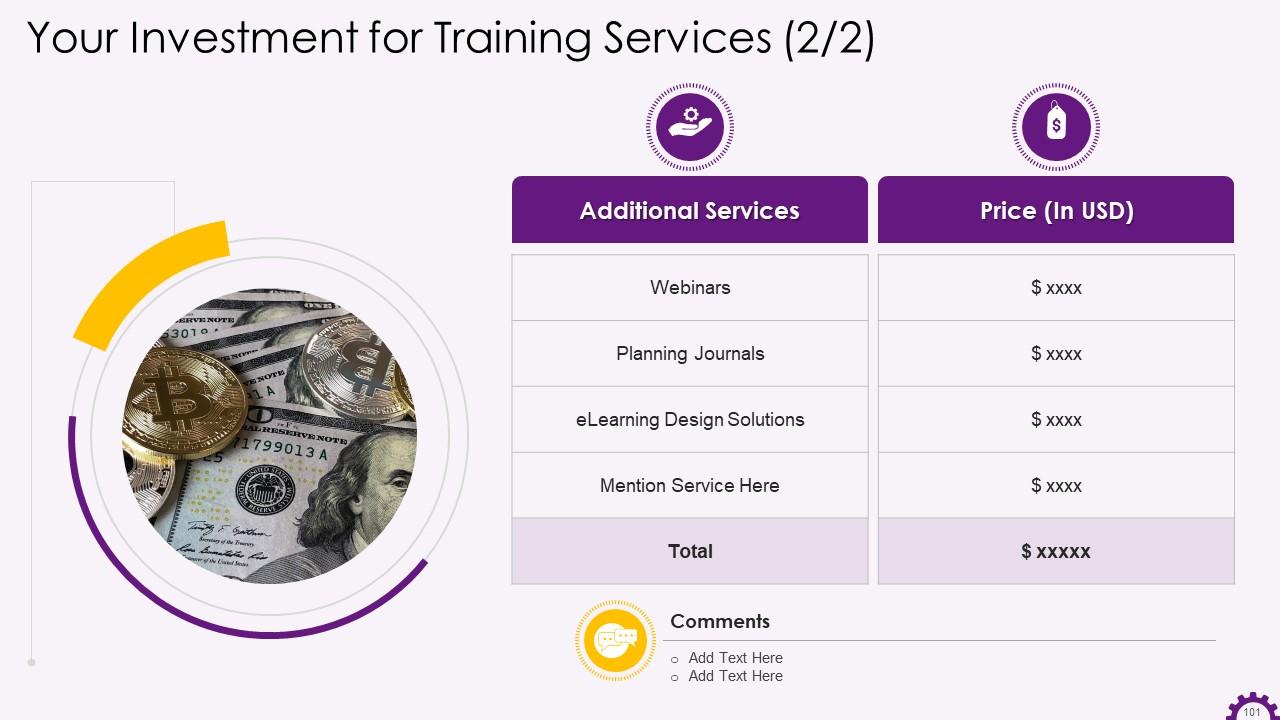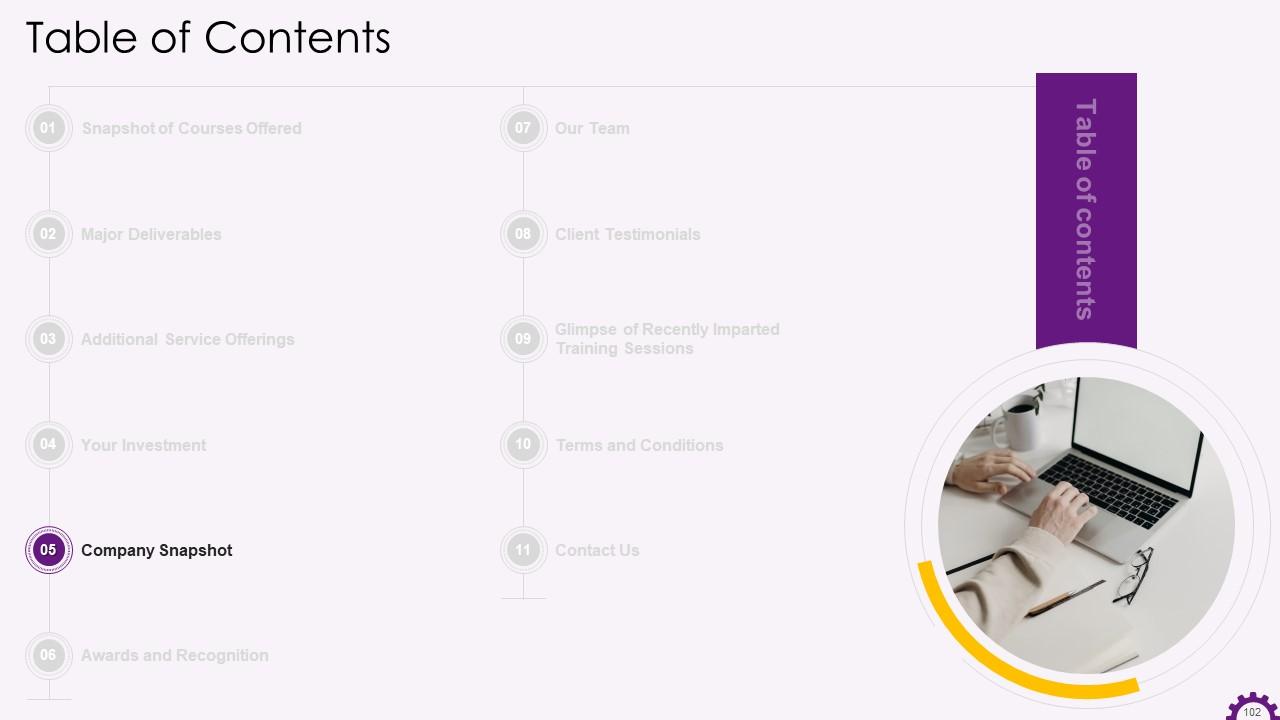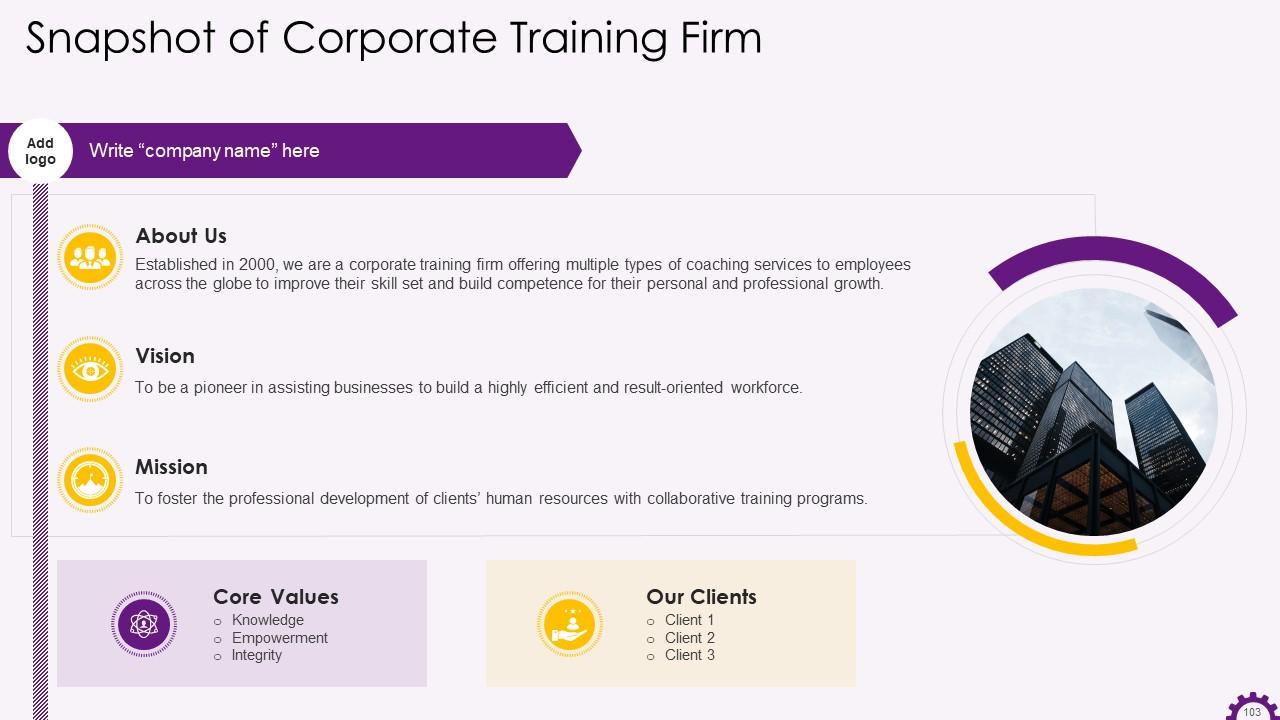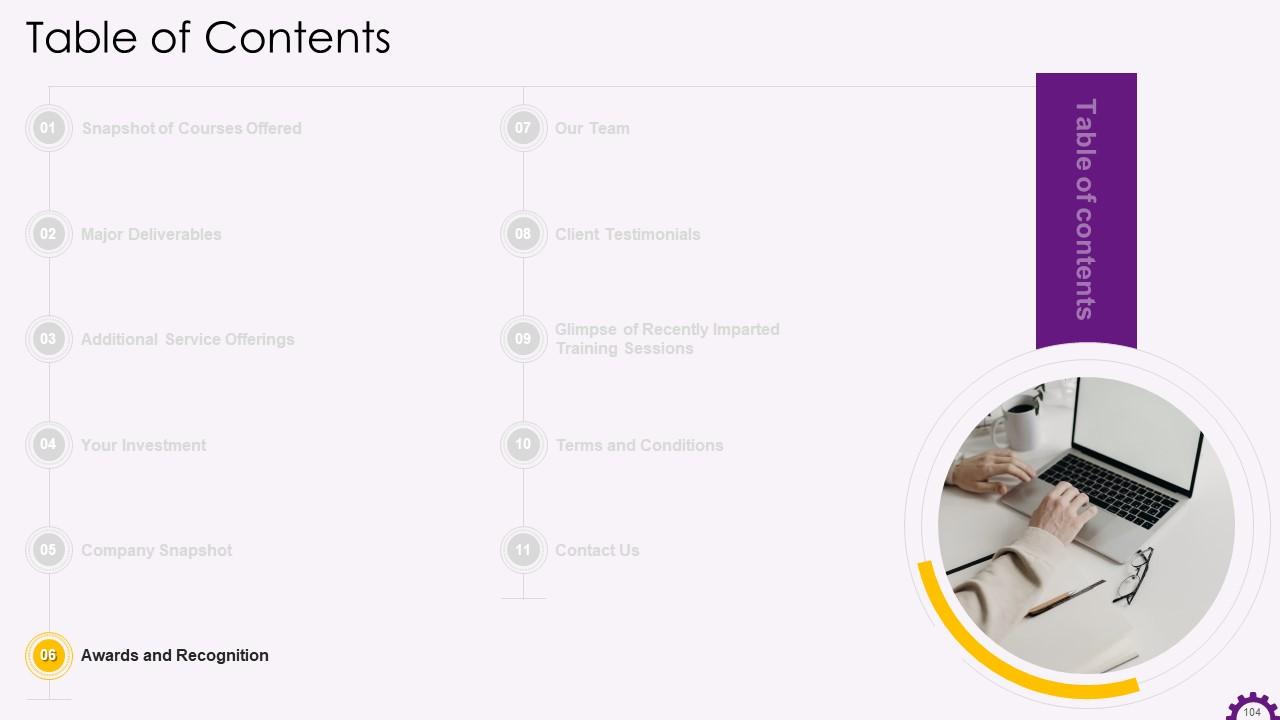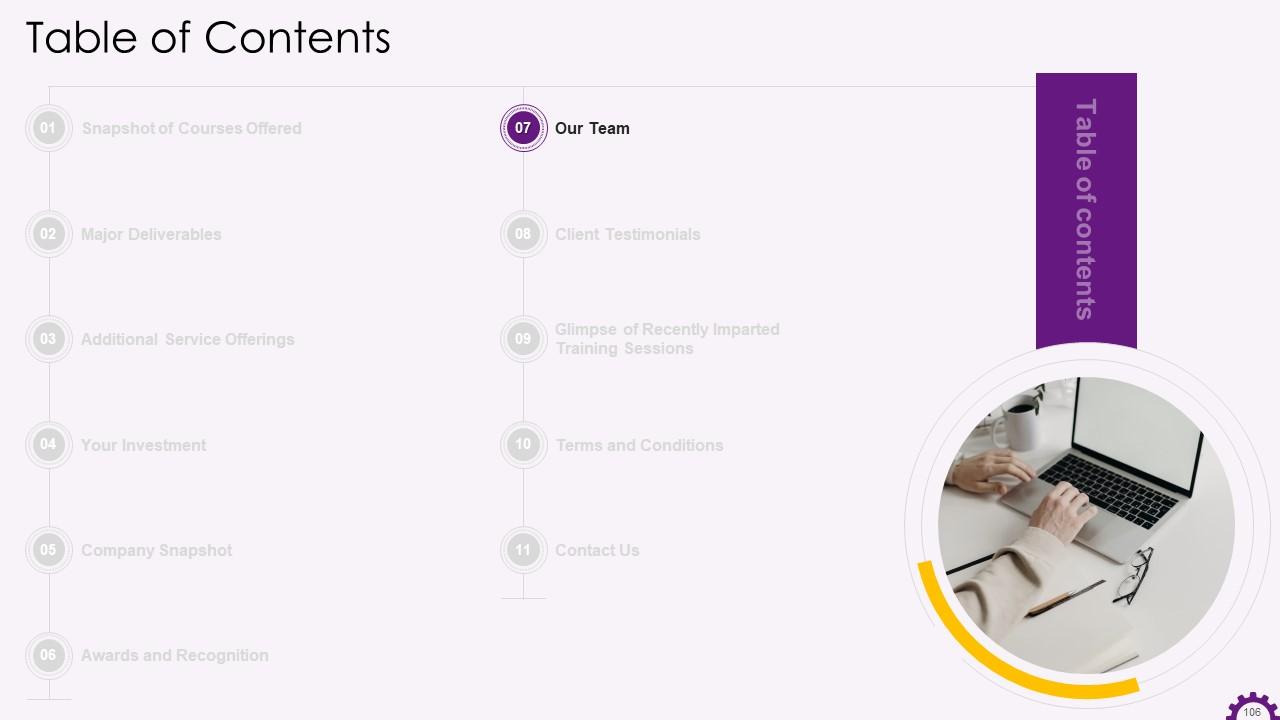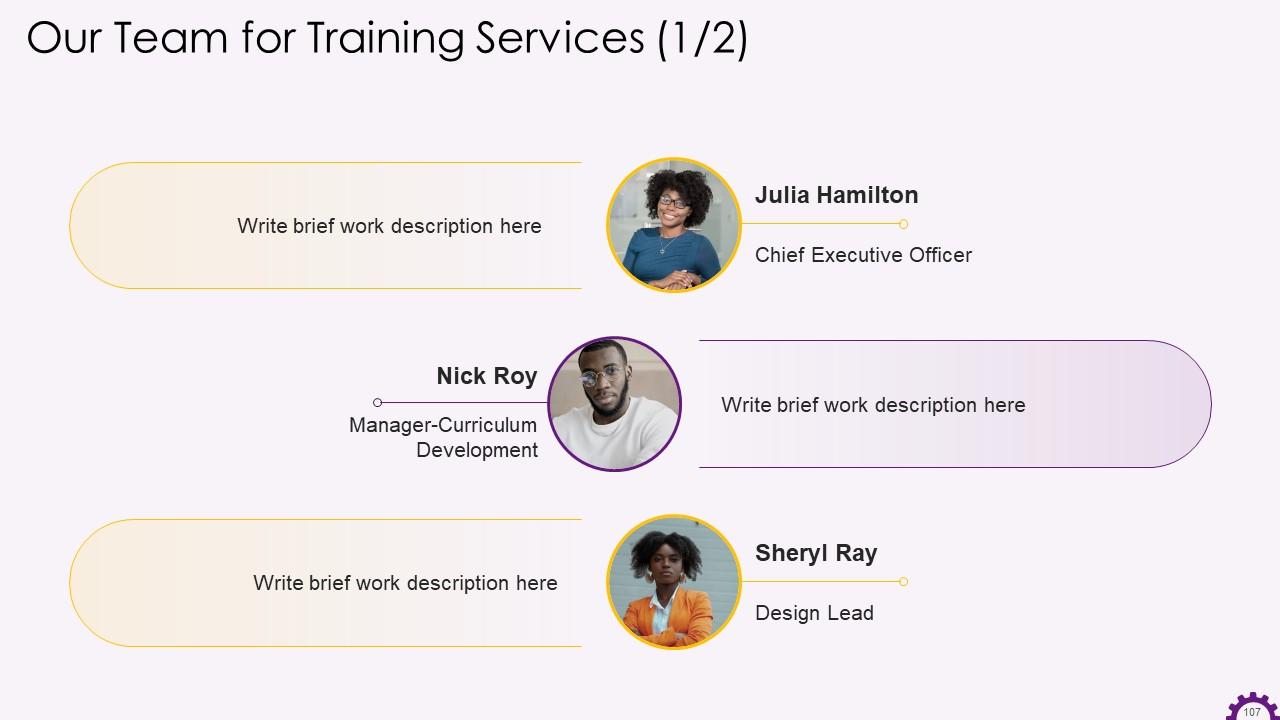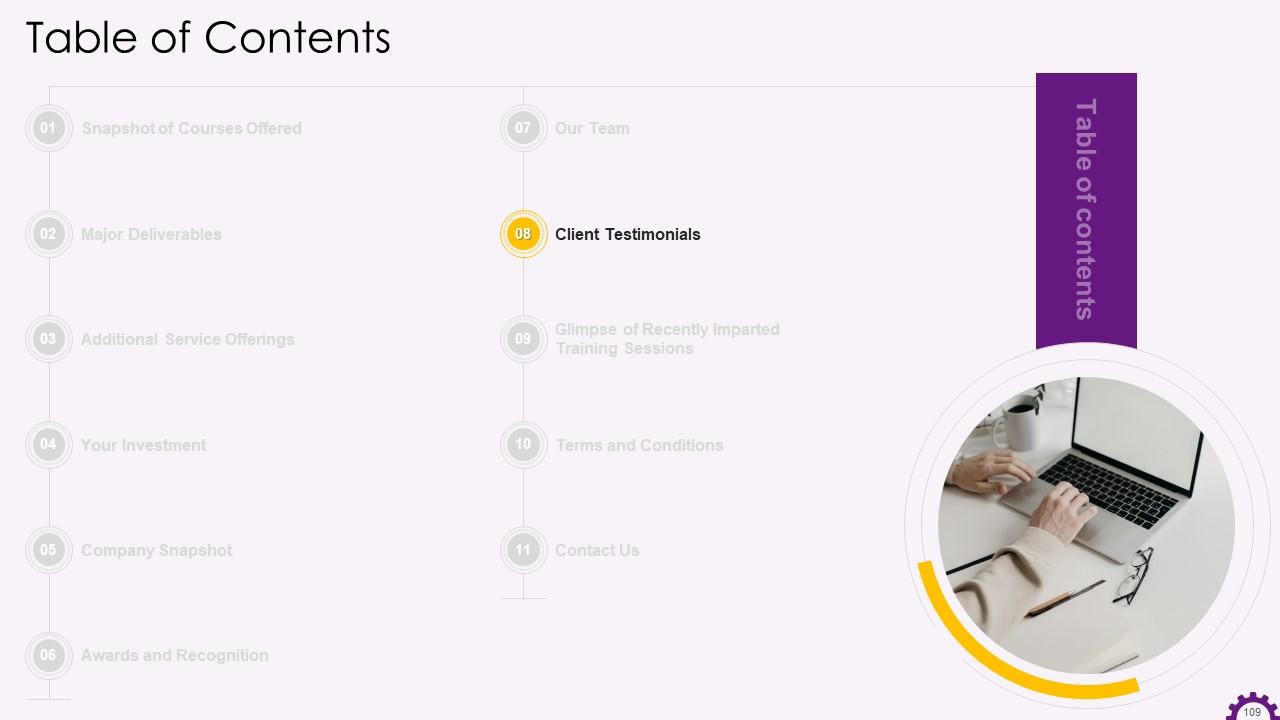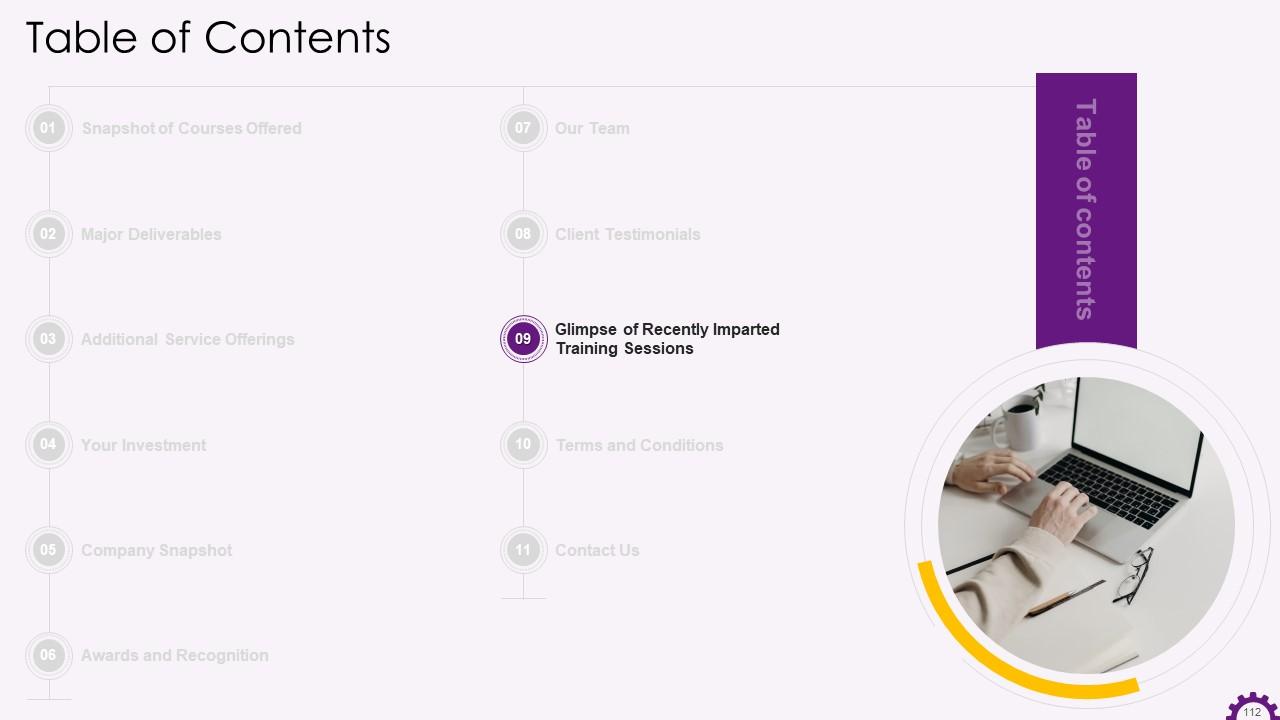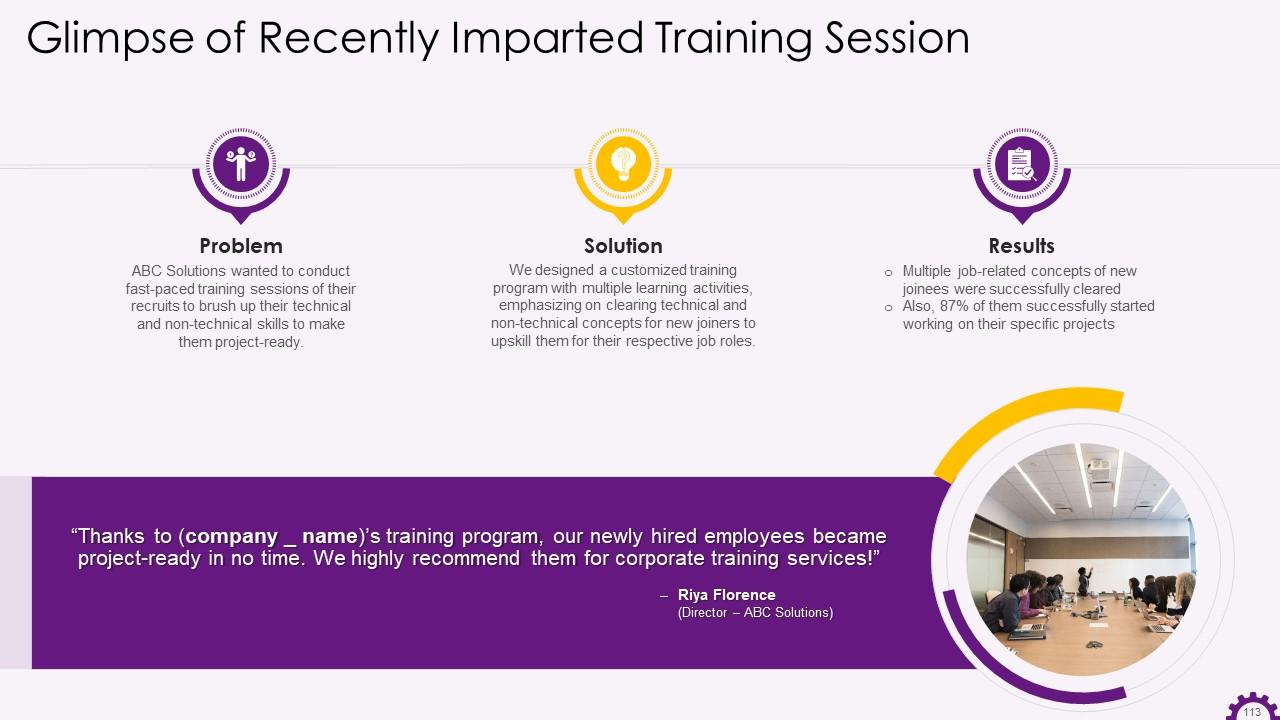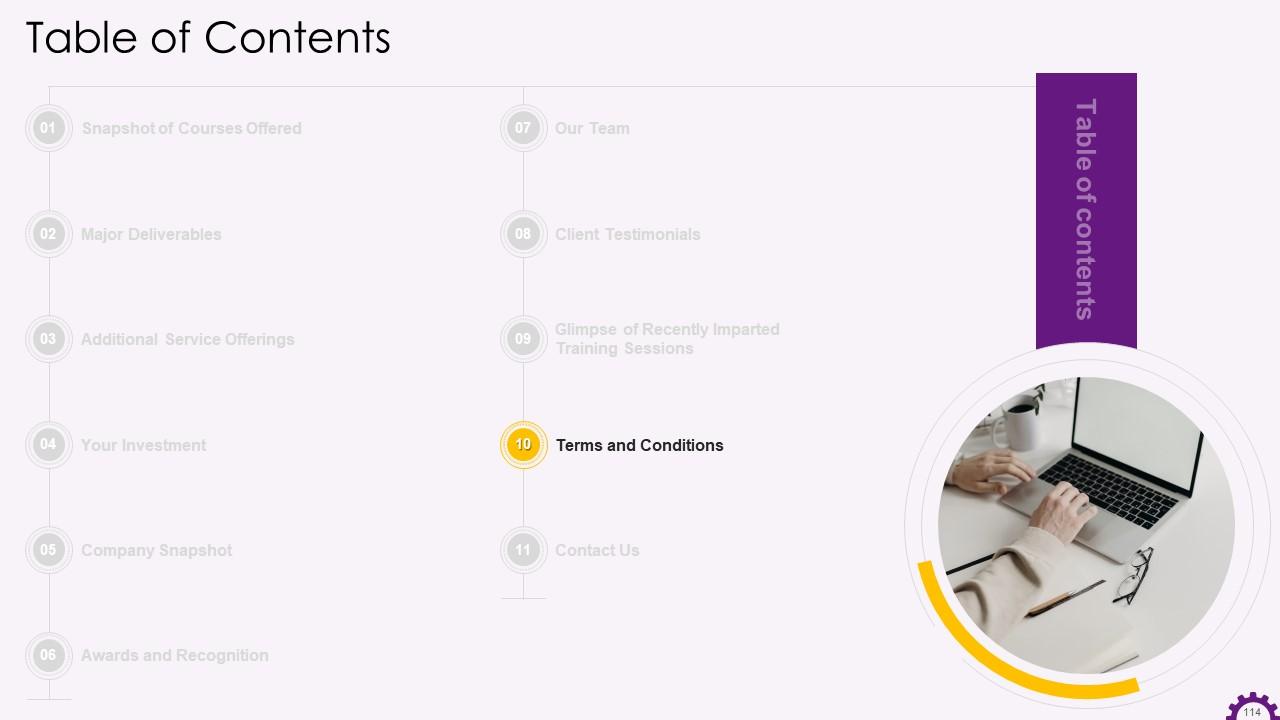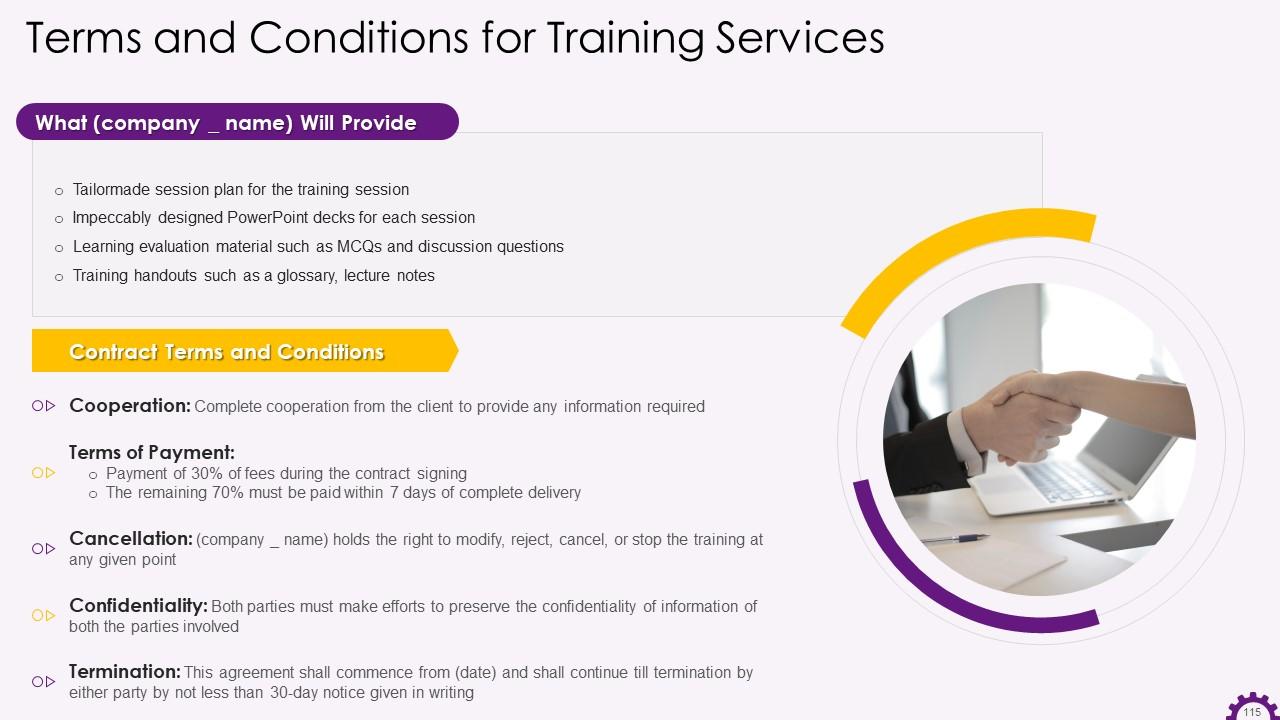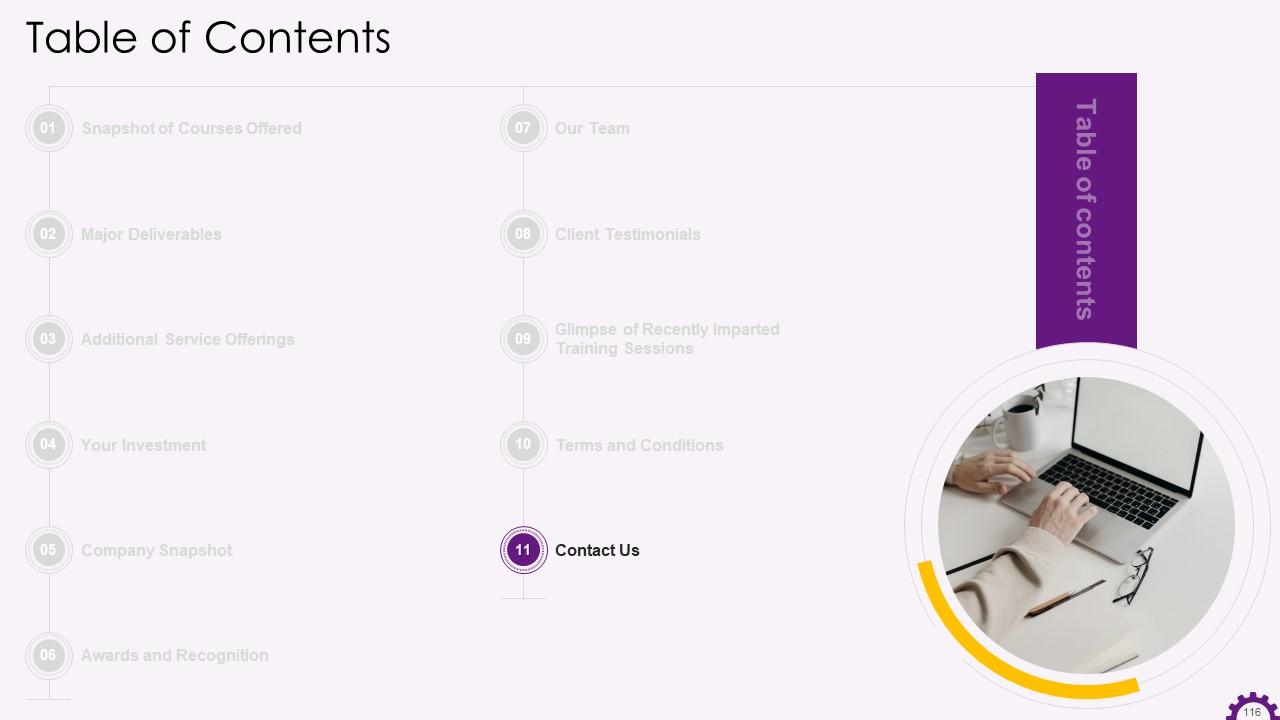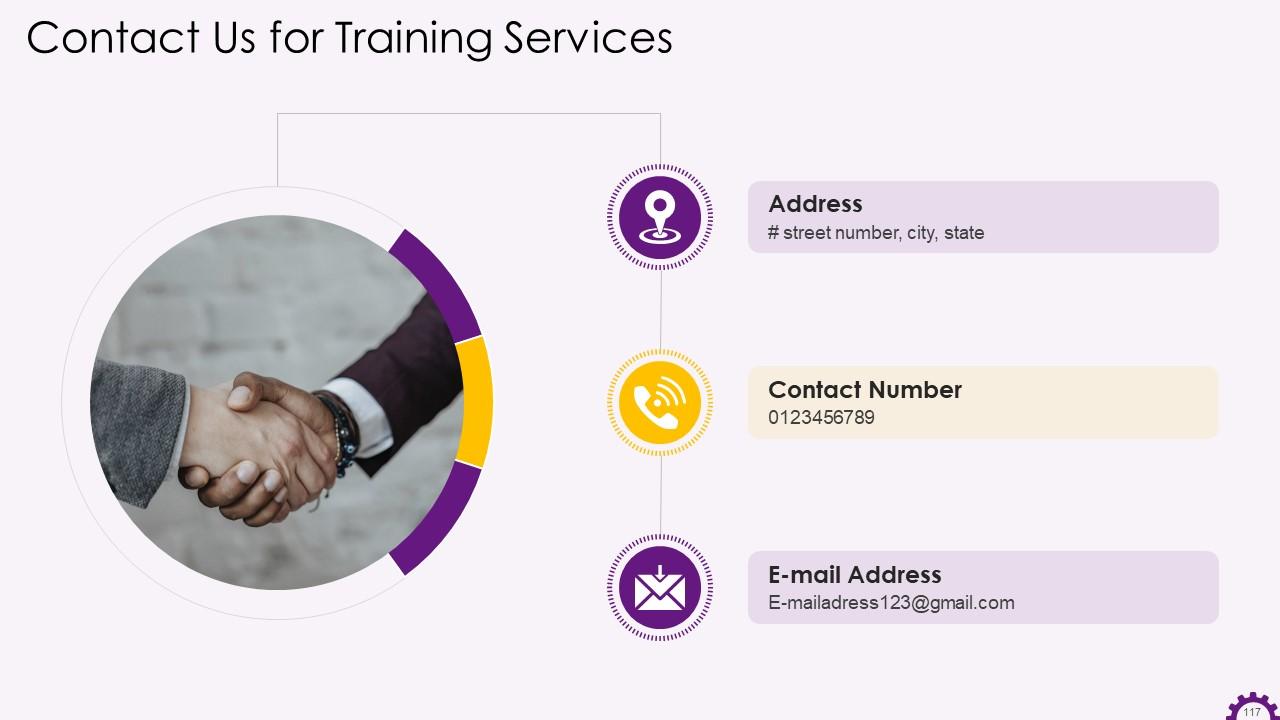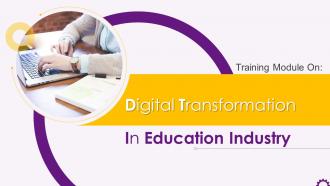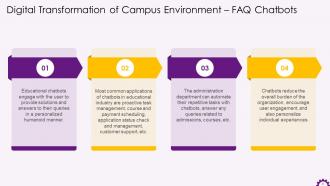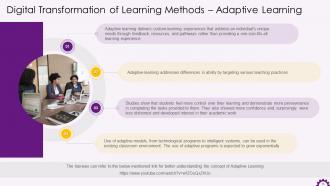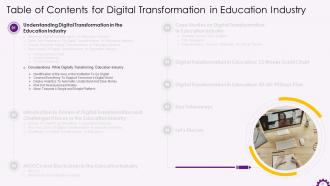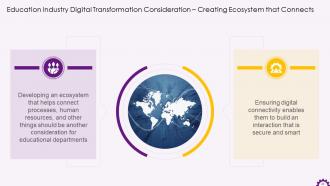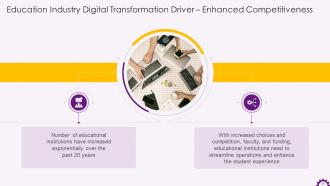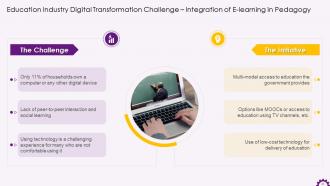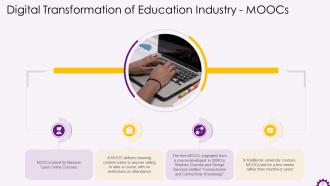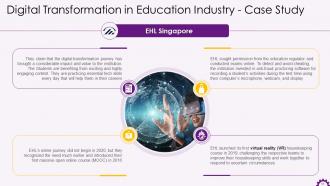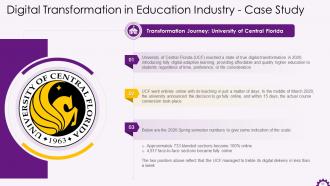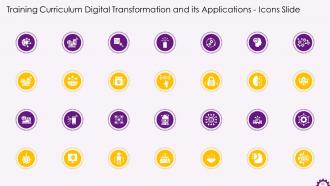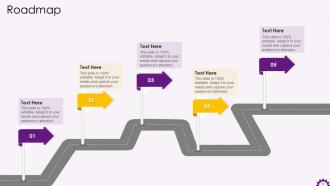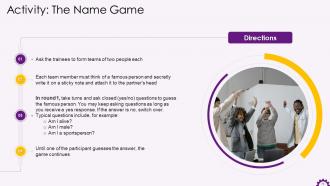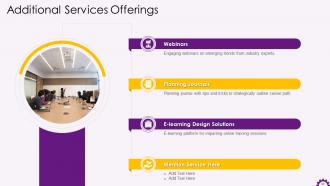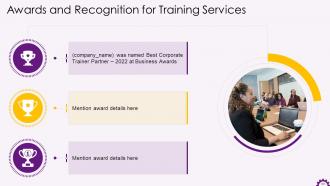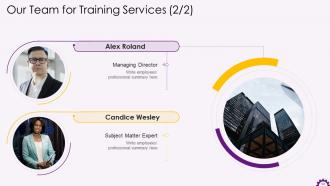Digital Transformation in Education Industry Training ppt
The PPT training deck provides a comprehensive overview of digital transformation in the education industry. It covers the need, importance, and growth potential of digital transformation in the education sector. It also includes the main areas of digitalization in the education industry campus environment, learning methods, and teaching methods. The PowerPoint module also has drivers, pros and cons, and challenges to the successful digitalization of the education sector. It also covers the role of MOOCs and blockchain technology in academic institutions. The Digital Transformation PPT deck has case studies and discussion questions to make the training session interactive. Further, it also contains about us, vision, mission, goal, 12 weeks Gantt chart, 30-60-90 days plan, timeline, roadmap, training completion certificate, energizer activities, and client training proposal.
- Google Slides is a new FREE Presentation software from Google.
- All our content is 100% compatible with Google Slides.
- Just download our designs, and upload them to Google Slides and they will work automatically.
- Amaze your audience with SlideTeam and Google Slides.
-
Want Changes to This PPT Slide? Check out our Presentation Design Services
- WideScreen Aspect ratio is becoming a very popular format. When you download this product, the downloaded ZIP will contain this product in both standard and widescreen format.
-

- Some older products that we have may only be in standard format, but they can easily be converted to widescreen.
- To do this, please open the SlideTeam product in Powerpoint, and go to
- Design ( On the top bar) -> Page Setup -> and select "On-screen Show (16:9)” in the drop down for "Slides Sized for".
- The slide or theme will change to widescreen, and all graphics will adjust automatically. You can similarly convert our content to any other desired screen aspect ratio.
Compatible With Google Slides

Get This In WideScreen
You must be logged in to download this presentation.
PowerPoint presentation slides
Presenting Training Deck on Digital Transformation in Education Industry. This presentation deck contains 117 well-researched and uniquely designed slides. These slides are 100 percent made in PowerPoint and are compatible with all screen types and monitors. They also support Google Slides. Premium Customer Support available. Suitable for use by managers, employees, and organizations. These slides are easily customizable. You can edit the color, text, icon, and font size to suit your requirements.
People who downloaded this PowerPoint presentation also viewed the following :
Content of this Powerpoint Presentation
Slide 4
This slide explains the meaning of digital transformation in education. It states that digital transformation in education means streamlining an education organization’s core business operations in order to meet customer requirements effectively and efficiently by using data and technology.
Slide 5
This slide mentions the points of need and importance of digital transformation in education sector. Digital Transformation in education sector is required to improve teaching -learning process, provide better learning experience for students, arrange for a realistic way of monitoring students and their performance, provide better data management and access, offer personalized content, provide greater access to skill development courses, and offer improved job prospects.
Slide 6
This slide mentions the growth potential for digital transformation in education.
Slide 7
This slide mentions significance of digital transformation in campus environment. It includes technological advancements in admission process, contactless payments, contactless attendance, covid precautionary measures: Thermal screening and social distancing alert system, FAQ chatbots, and IoT for tracking.
Slide 8
This slide mentions how technology is utilized in the admission process of educational institutions. Online admission process is conducted using online platform, online forms, online payments, and conveying information online.
Slide 9
This slide illustrates the use of FAQ chatbots in educational sector. Educational Chatbots engage with the user to provide solutions and answers to their queries in a personalized humanoid manner. Most common applications of chatbots in educational industry are proactive task management, course and payment scheduling, application status check and management, customer support, etc.
Slide 10
This slide mentions the significance of contactless payments in digital transformation of education. Contactless payment in education is a secure method of payment using a credit or debit card, smartcard, or any other payment device.
Slide 11
This slide explains how educational departments are using contactless attendance systems in educational departments. Educational departments are now replacing biometric attendance systems with contactless attendance to avoid spreading the infection.
Slide 12
This slide explains how educational institutes are implementing thermal screening as a covid precautionary measure in departments. They use thermal imaging equipment to detect if a person's body temperature is normal. Utilizing body temperature screening devices, educational departments keep the premises infection-free. Preventing the contagious person from entering the premises will ultimately prevent the spread of infections like COVID-19.
Slide 13
This slide explains how educational institutes are implementing social distancing alert systems such as a covid precautionary measure in departments. Social distancing alert systems have now been launched that use AI and Computer Vision to detect the distance between two or more people and then send a notification to them or the authorities concerned to take action against them.
Slide 14
This slide explains how IoT tracking is used in management of educational institutions. Educational departments like schools use the school bus tracking solutions having IoT-enabled sensors to monitor the location and performance of busses to ensure children's safety.
Slide 15
This slide mentions the concepts covered under digital transformation of learning methods. The concepts are AR/VR in education, video conferencing solutions, adaptive learning, learning apps/platforms, AI-based chatbots, and digital libraries.
Slide 16
This slide explains how AR/VR is used in education and how it is benefiting the education industry. Augmented Reality/Virtual Reality can help learners grasp abstract concepts and gain hands-on experience on things otherwise impossible in physical world. These technologies aim to promote student engagement and nurture better understanding. Complex concepts can be explained to the students in a controlled environment by making learning immersive and experiential through the Virtual Reality headsets.
Instructor’s Notes:
The most significant benefits of AR/VR in education are:
- AR/VR makes learning experiential and immersive
- It causes enhanced memory retention among learners
- It is considered to be a great aid to students who experience difficulty in learning
- It simplifies complex topics and concepts for better understanding of students
- It fosters self-sufficiency and self-learning among students
- It is a great training tool to instill confidence in learners
- It makes remote learning more engaging and interesting
Slide 17
This slide explains how video conferencing solutions encourage education delivery to people from different countries. Schools/universities are now integrating video conferencing solutions to their website or app, allowing students to continue their studies in different countries. Video conferencing solutions allow the teachers and students to share documents and files in real-time. It facilitates engagement and connects participants with each other.
Slide 18
This slide explains how adaptive learning has improved the students’ learning experience. Adaptive learning delivers custom learning experiences that address an individual's unique needs through feedback, resources, and pathways rather than providing a one-size-fits-all learning experience. Students feel more control over their learning and demonstrate more persistence and patience in program tasks with adaptive learning.
Instructor’s Notes:
Benefits of adaptive learning are as follows:
- Students can choose the speed of learning or the pace at which they worked
- They were motivated to complete their work This (the increased drive) was visible after just a glance at the progress charts
- They enjoy the teacher's support and explanations during practice sessions
- Students reported more learning and comfort when the content was taught using adaptive learning
- They claimed they were less stressed due to the adaptive pace, as they found themselves ready to move to new concepts
- They experience tremendous success due to their dedication to the learning content. Students' skills saw rapid improvement as they could control the pace and level of difficulty
Slide 19
This slide explains how the educational sector is moving towards online learning platforms for a better experience. Online learning platforms will help students continue their studies without any interruption. It will also allow them to access the best learning content in text format, PDFs, images, and audios.
Slide 20
This slide explains how the AI and Chatbots are encouraging digital transformation in education. The chatbots which are AI-enabled can be used to analyze students’ responses and offer them the content that matches their learning choice. These chatbots can be used to teach students by converting a lecture into a series of messages to give it the feel of a conversation.
Slide 21
This slide explains the benefits of digital libraries in today’s education system. A Digital library cuts the time and effort a person puts into visiting a conventional library and finding the right book. Options like in-built content search using few keywords or titles make searching for what you need from thousands of resources easy and convenient.
Slide 22
This slide mentions the concepts covered under digital transformation of teaching methods. The concepts are adoption of smart classes, AI-driven online assessments, AI-based analysis of students, and AI-based remote proctoring.
Slide 23
This slide explains how the education is transforming from traditional classrooms to smart classrooms. Using smart class technology and interactive whiteboards, the educational departments can illustrate information to students with the help of photos, maps, graphs, flowcharts, and animated videos. This makes learning more attractive, exciting, and easy to understand.
Slide 24
This slide mentions the existence and success of AI-driven online assessments. AI-based online assessment system enables conducting different types of examinations, whether subjective or objective, typing tests, coding simulators or video or audio input. It facilitates a quick and clear report on candidates' progress, making it easier for the education provider to give feedback to the learners on how they have been doing, their strengths, and areas of learning that need improvement.
Slide 25
This slide illustrates digital transformation in analysis of students by utilizing the AI-based analysis system. In education, AI and big data analytics can help providers create a personalized learning experience and resolve challenges like high dropout rates, disengagement of students, etc. An AI-based personalized learning experience allows the learner to enjoy a unique educational approach tailored to individuals’ needs and abilities leading to improved productivity of students.
Slide 26
This slide mentions the technology behind online monitoring of students. Remote proctoring is a technology that allows educational institutes to conduct online examination that prevents students from indulging in any unfair means or practice. Online proctoring reduces burden of invigilators and offers massive opportunities to education providers for online evaluations. With AI-enabled online proctoring, educational departments can monitor the students remotely and record complete examination sessions from the beginning to end, not just via a video but also by capturing the desktop screen, images, and chat logs.
Slide 28
This slide mentions identification of area as a consideration while digitally transforming education sector. Identification of area beforehand will help to plan things accordingly and move in the right direction.
Slide 29
This slide mentions the significance of creating an ecosystem that connects processes and resources. This enables you to build an interaction that is secure and smart.
Slide 30
This slide mentions why deploying analytics in education sector is significant in understanding things and saving money. Big data analysis will contribute in getting clarity on things, saving cost and time, and thus enhancing performance as a result of better decisions.
Slide 31
This slide mentions how digital transformation in education brings in new and innovative business models. It will help in better retention of the brand name, productivity, the revenue, and the growth rate of the sector.
Slide 32
This slide explains that digital transformation in education should move towards a single platform that is simple and easy to use, rather than models that are complicated and involve multiple software and tools.
Slide 34
This slide mentions various drivers of digital transformation in education sector. The drivers are enhanced competitiveness, controlling costs, better user experience, and greater agility.
Slide 35
This slide mentions enhanced competitiveness in the market as a driver of digital transformation in education. With increased choices and competition, faculty, and funding, educational institutions should streamline operations and enhance the student experience.
Slide 36
This slide mentions controlling costs as a driver of digital transformation in education. It says that from saving staff time to reducing square footage used to store files and manual databases, digital transformation should work on controlling spiraling administrative costs. Digital transformation helps us move towards a better future.
Slide 37
This slide explains how digital transformation is driving better user experience. It says that leveraging technology and data will enable educational institutions to attract and retain students better. So, the departments need to integrate different systems to provide a seamless and modern user experience.
Slide 38
This slide illustrates how greater agility is driving growth of digitalized education sector. Organizations should use processes, practices, and technologies of the modern internet era to respond with flexibility and agility to the raised expectations of learners and education providers.
Slide 39
This slide mentions the pros and cons of digital transformation in education. Digital education platforms and technologies enable improved processes utilizing data analytics, tracking students’ results, cooperative learning, adaptive learning, etc. Along with the ample benefits of digital transformation in education, it also causes social isolation in students, focuses more on theory, face connectivity issues, chances of things going wrong, and double fold the expenses on technology.
Slide 40
This slide mentions the challenges in the digital transformation of education. The most significant challenges are reluctance to change, the decline in learning outcomes and well-being, Integration of E-learning in existing pedagogy, teachers' role and capacity building, and lack of plan or strategy.
Slide 41
This slide mentions Reluctance to Change as a challenge in the digital shift of education. It says that employees resist change because they fear failure. To overcome this challenge, the department should plan regular training, preferably on-the-job training, and allot mentors who can assist teachers in using the technology and developing the required skills.
Slide 42
This slide mentions the decline in learning outcomes and well-being as a challenge in the digital transformation of education. It mentions that initiatives like alternative methods of education delivery, telephonic delivery of lessons, digital content via apps, etc. have been planned for reducing and eliminating these challenges.
Slide 43
This slide mentions the integration of E-learning as a challenge in the digital transformation of education. It mentions that initiatives have been planned for reducing and eliminating such challenges like multi-modal access to education, education using television, MOOCS, etc. A special focus has been put on bringing low-cost technology to simplify the process of delivering education online.
Slide 44
This slide mentions teachers' existing role and capacity in traditional teaching as a challenge in the digital transformation of education. It notes that teachers are suddenly expected to shift their patterns and concerns from conventional teaching to modern teaching using modern methods. In response, the government has launched training programs to remove the existing barriers and move towards the digital transformation of education.
Slide 45
This slide mentions the lack of plan or strategy as a challenge to digital transformation in education. It suggests that the organizations should plan and decide objectives in advance, considering the long-term consequences of the decisions. The departments also need to provide proper instructions to the users of technology on all its use cases.
Slide 47
This slide explains the concept of MOOCs in digitalization of education. It states that MOOCs stand for massive open online courses, which deliver learning content online to anyone willing to take a course, with no restrictions on attendance.
Slide 48
This slide mentions the USP of MOOCs in education. It states facts like MOOCs deliver education in a modern video format, offer openly accessible learning resources, encourage online interactions between teachers and learners, and conduct regular online tests with certifications.
Slide 49
This slide mentions various providers of MOOCs worldwide. The most common providers of MOOCs are Coursera, EdX, Udacity, and Udemy.
Slide 50
This slide explains how blockchain is used in education. Blockchain technology can be used to store learning records in a trusted and distributed manner, provide credible digital certificates, realize learning resource sharing with smart contracts, and protect intellectual property through data encryption. It holds value not only for higher education but also for primary and secondary education.
Slide 52
This slide mentions the case study on the Bombay school of New Zealand. It explains how the school transformed its methods and services when the administration faced issues against adding more computers to its infrastructure.
Slide 53
This slide mentions the Bombay school case study. The institution is located in New Zealand. It explains how the school transformed its methods and services when the administration faced issues against adding more computers to its infrastructure.
Slide 54
This slide mentions the case study of EHL Singapore. It explains how the institution turned digital and what impact it had on the growth and results. It says that at EHL, the transformation has delivered a robust and long-lasting change that enhanced the value provided to the students.
Slide 55
This slide mentions the EHL Singapore case study. It explains how the institution turned digital and what impact it had on the growth and results. It says that digital transformation journey has brought a considerable impact and value to the institution. The students are benefiting from exciting and highly-engaging content. They are practicing essential tech skills every day that will help them in their careers.
Slide 56
This slide mentions the transformation journey of University of Central Florida. It explains the factors which led the institution to turn digital. It mentions the success of university in a matter of days after the introduction of digital transformation.
Slide 58
The slide mentions a 12-week Gantt chart for digitalizing education sector. It outlines the phases for planning digital transformation in education, starting with research and planning, determining goals and objectives, and constantly assessing and discussing the processes.
Slide 59
The slide shows a 30-60-90-day plan for the digitization of education. There are three stages to the plan: Learn, Implement, and Analyze. The first 30 days should be devoted to the learning phase, followed by the implementation phase and analysis phase.
Slide 60 to 61
These slides mention the key takeaways from the session digital transformation in education.
Slide 62
This slide mentions the discussion questions for the topic digital transformation in education.
Slide 74 to 89
These slides contain energizer activities to engage the audience of the training session.
Slide 90 to 117
These slides contain a training proposal covering what the company providing corporate training can accomplish for the client.
Digital Transformation in Education Industry Training ppt with all 122 slides:
Use our Digital Transformation in Education Industry Training ppt to effectively help you save your valuable time. They are readymade to fit into any presentation structure.
-
Great work on designing the presentation. I just loved it!
-
“Thank you to the SlideTeam. Your presentations look really skillful and have made my life so much easier.”



